Apollo 13
description: a 1970 NASA mission that suffered a critical failure but returned safely to Earth
150 results
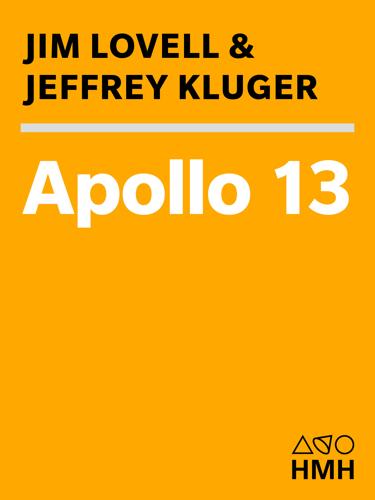
Apollo 13
by
Jim Lovell
and
Jeffrey Kluger
Published 14 Jun 2000
Without the considerable talents and limitless enthusiasm of Joy Harris, of the Lantz-Harris Literary Agency, and Mel Berger, of the William Morris Agency, there would have been no Apollo 13. And without the practiced eye and editorial guidance of John Sterling of Houghton Mifflin Company, the Apollo 13 we initially envisioned would never have been improved and focused into the Apollo 13 that ultimately appeared. While nearly all of our thanks are extended jointly, each of us would also like to acknowledge some folks individually. Jim Lovell could never have made it through Gemini 7, Gemini 12, Apollo 8, and, especially, Apollo 13, without the love and support of Marilyn, Barbara, Jay, Susan, and Jeffrey, and could never have undertaken the effort to tell the story of those flights without the same love and support of the same people.
…
Contents * * * Title Page Contents Copyright The Perilous Voyage of Apollo 13 Frontispiece Dedication Preface Prologue 1 2 3 4 5 6 Photos 7 8 9 10 11 12 Epilogue Apollo 13 Mission Timeline Apollo 13 Dramatis Personae The Manned Apollo Missions Authors’ Notes Index About the Authors Connect with HMH Preface copyright © 2000 by Jim Lovell and Jeffrey Kluger Copyright © 1994 by Jim Lovell and Jeffrey Kluger All rights reserved For information about permission to reproduce selections from this book, write to trade.permissions@hmhco.com or to Permissions, Houghton Mifflin Harcourt Publishing Company, 3 Park Avenue, 19th Floor, New York, New York 10016.
…
But when you find yourself in space, eyeball to eyeball with death, and through imagination, resourcefulness, and flat-out fine flying see to it that death is the one who blinks, you’ve achieved something truly extraordinary. Measured by that yardstick, the mission of Apollo 13 deserved to be thought of as far more than the forgotten child of NASA’s lunar program; it might well have been thought of as its favorite son. That was the point we hoped to make and the tale we hoped to tell when we set about writing Lost Moon (now Apollo 13) in 1992. In a popular environment that was intolerant of the fallibility of human beings and their machines and was content to limit space exploration to paddling about in the familiar harbor of near-Earth orbit, the tale of Apollo 13 would not have had much appeal. But by the final decade of the millennium—and the fourth decade of humanity’s travels in space—that had already begun to change.
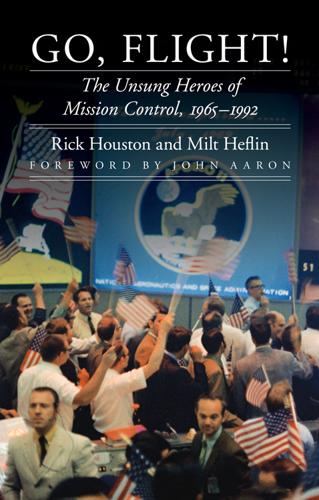
Go, Flight!: The Unsung Heroes of Mission Control, 1965-1992
by
Rick Houston
and
J. Milt Heflin
Published 27 Sep 2015
See Alignment Optical Telescope (AOT) Apollo 1, 95–101 Apollo 8, 110–21 Apollo 9, 135–42 Apollo 10, 135, 142–50 Apollo 11, xi–xiv, 151–79 Apollo 12, 180–98 Apollo 13, 2–3, 199–47 Apollo 13 (documentary), 245, 311 Apollo 13 (motion picture), xv, 26, 203, 312–14 Apollo 14, 250–60 Apollo 15, 260 Apollo 16, 268 Apollo 17, 4, 268, 273, 277–78 Apollo EECOM (Liebergot), 216, 265, 315 Apollo Lunar Surface Experiment Package (ALSEP), 256–57 Apollo program, 17, 96–97, 274, 277 Apollo-Soyuz Test Project, 260 Aquarius (Apollo 13 Lunar Module), 207, 218, 220, 223–24, 226–29, 234, 237 Arabian, Donald D., 38 ARIA. See Advanced Range Instrument Aircraft (ARIA) Armstrong, Lawrence L.
…
Flight controllers during Apollo 9 landing and recovery operations 12. Snoopy and Charlie Brown dolls overlook Charlie Duke 13. Jack Garman’s computer alarm cheat sheet 14. Charlie Duke during Apollo 11 landing 15. Dave Reed gets his launch plot board signed 16. Ken Mattingly during Apollo 13 launch 17. Mission control moments before start of Apollo 13 crisis 18. Glynn Lunney and Gene Kranz celebrate Apollo 13 splashdown 19. Sy Liebergot and Bill Moon 20. Charlie Harlan discusses a probe mockup with Gene Cernan and John Young 21. Ed Fendell 22. Neil Hutchinson, Gene Kranz, and Gerry Griffin 23. Apollo 17 Lunar Module Challenger lifts off of the lunar surface 24.
…
A 28 April 1970 article in Fredericksburg, Virginia’s Free Lance-Star about her contributions to the flight of Apollo 13 ran a similar headline, except this one called her a “girl.” The first couple of paragraphs were a far cry from the politically correct climate of the next century. “A former beauty contestant whose name has been linked romantically with Astronaut John Swigert Jr., played a key role in bringing the Apollo 13 crew home safely,” wrote reporter Will McNutt. “Bachelor girl Poppy Northcutt, 26, a tall, winsome blonde mathematician, was the only female working inside the Mission Control Center during the Apollo 13 emergency.” The story went on to detail the fact that Northcutt had no plans for marriage, dished more on her supposed romance with Swigert—there was none, according to the writer—and how she was a “popular, fun-loving girl” who liked to “swim, dance, ski or sail.
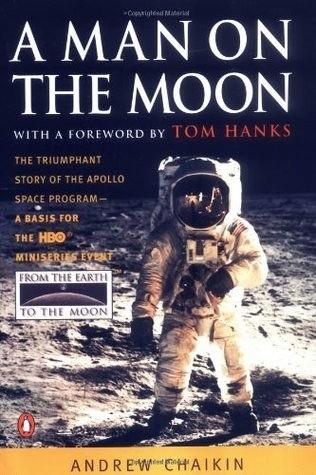
A Man on the Moon
by
Andrew Chaikin
Published 1 Jan 1994
Six hundred feet away, on the crater rim, the lunar module Intrepid looks like a tiny scale model. To its right is a collapsible communications antenna. APOLLO 13 above left: Ken Mattingly, grounded by NASA doctors three days before launch because of a suspected case of German measles, studies a flight plan in mission control. For now, Apollo 13 is still a normal mission. above right: Soon after the explosion of an oxygen tank aboard Apollo 13, astronauts and flight controllers study data in mission control. From left: Tony England, flight controller Raymond Teague, Joe Engle, Gene Cernan, Ed Mitchell, Al Shepard, and Ron Evans.
…
He could have gone on until NASA said he was too old to fly any more, but he knew that when he came back from Apollo 13 he would face a long wait, perhaps several years, before he flew again. Well aware of the astronauts still waiting for their first flights, he decided he would not get back on line for a fifth. Apollo 13 would be a great finale to a long spaceflight career. Like every commander, Lovell wanted his mission to stand out, but he couldn't see why people would remember the third lunar landing. And that was fine with him. He wanted badly to land on the moon, and he was glad for the chance to make a contribution to science. The Apollo 13 mission patch read “Ex Luna, Scientia” —From the moon, knowledge—and Lovell thought of that when he christened his lunar module Aquarius, after the god of the ancient Egyptians who brought life to the Nile Valley (not to mention the popular song from the Broadway musical Hair).
…
In an out-of-court settlement, the Justice Department directed NASA to return the covers, and according to Worden, one official told him that the Apollo 15 crew had committed no wrongdoing by their actions regarding the first-day covers before and after their flight. 562 he would rather have been the last man to walk on the moon: Many astronauts have shared Anders’s regret at not having walked on the moon. For Apollo 13’s Fred Haise, the disappointment was compounded by the experience of a failed mission. But Haise’s commander has a different attitude. If Jim Lovell could pick the flights he would like to be on, even with clear hindsight, one of them would be Apollo 13. It doesn’t take anything extraordinary to do what is expected of you, Lovell says, but fighting for his life 200,000 miles from home tested him in ways that even a lunar landing wouldn’t have. Says Lovell, “Apollo 13 was a test pilot’s mission.” He regrets that the Society of Experimental Test Pilots never recognized him and his crew for their performances.
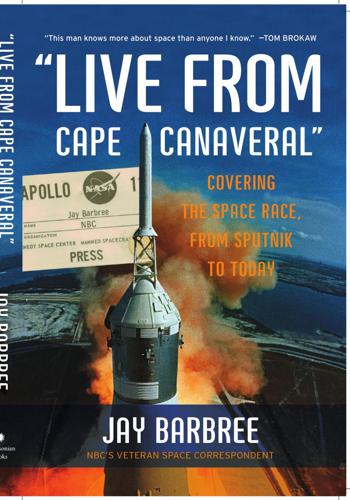
"Live From Cape Canaveral": Covering the Space Race, From Sputnik to Today
by
Jay Barbree
Published 18 Aug 2008
Flight controllers took the temperature of Apollo 13’s life-support systems. Liquid oxygen had to remain at a critical 297 degrees below zero, and the liquid hydrogen tanks even colder, an unbelievable 423 degrees below, if the fuel cells were to continue supplying power and oxygen and water to the astronauts. Apollo 13 continued its wild flight toward the moon. It looked as if the assembly of space vehicles could be breaking apart. The alarms wailed, the lights flashed while the crew and Mission Control clung to the belief that electrical glitches were causing the problems. No one wanted to believe Apollo 13’s astronauts were in mortal peril as the three quickly moved through their emergency list.
…
The guidance platform was a collection of gyroscopes and instruments needed to keep the spaceship aligned precisely with Earth and the moon—to keep Apollo 13’s location known to Mission Control every moment of the flight. Even though Apollo 13’s crew would now be sustained by the lunar module, the astronauts would need to return to the cold, damp, hibernating command ship for food and bathroom facilities. It promised to be an uncomfortable ride. Flight director Gene Kranz and his team decided to use the lunar-module descent engine for needed propulsion. They worked out a couple of rocket burns that should bring the Apollo 13’s crew safely home: “We’ll go for a brief burn a few hours from now before they reach the moon.
…
Mission Control was a church of silence. Squawk boxes crackled. A tracking aircraft over the Pacific radioed. It had picked up a signal from Apollo 13. No one cheered. Not yet. What about the heat shield? Had it held? Or was it damaged in the explosion? And what about the parachutes? Had they opened? Apollo 13 broke through a cloud deck two thousand feet above the ocean riding beneath three huge orange-and-white parachutes. Mission Control went mad with relief, applause, and cheering. Unbelievably, Apollo 13 splashed down only three miles from the Iwo Jima. Jim Lovell and crew were lifted by helicopter to the deck of their prime recovery ship, and splashdown parties worldwide burst into wild and thankful celebrations.
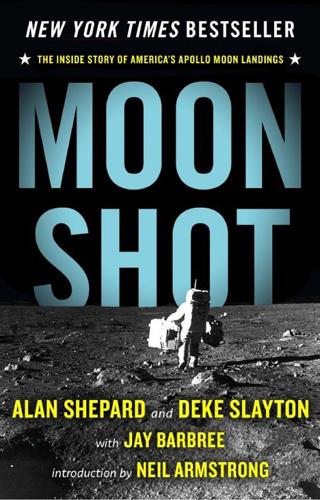
Moon Shot: The Inside Story of America's Apollo Moon Landings
by
Jay Barbree
,
Howard Benedict
,
Alan Shepard
,
Deke Slayton
and
Neil Armstrong
Published 1 Jan 1994
If you continue to go along without any heart episodes, well . . . ” “Well, what?” Deke demanded. Berry looked up as if he could see beyond the sky, then back to Deke. “Maybe, my friend, just maybe . . . ” Maybe . . . CHAPTER TWENTY-ONE Apollo 13: NASA’s Finest Hour IT WAS TIME TO STIR the frigid broth deep inside Apollo 13. Four large circular tanks contained super-cold liquid oxygen and liquid hydrogen, the “soup of life” for the ship and its crew of three. Apollo 13 was a vessel of long-range exploration, and tiny fans stirred the tanks of liquid oxygen and hydrogen that kept its three astronauts supplied with breathing air, drinking water, and electricity for their ship.
…
The intense heat caused a buildup of internal pressure which quickly exploded, shredding the tank’s structure. Its dome blew outward with the effect of a shotgun blast, destroying vital lines and systems. Apollo 13 was a ship torpedoed from within. Valves twisted shut, blocking the critical flow of vital liquids as the blast shredded everything in its path. The side of Apollo 13’s service module blew out, and the spacecraft began to die. Until this moment, fifty-five hours and fifty-five minutes after Apollo 13 had been launched from Cape Canaveral, Commander Jim Lovell had judged their Apollo flight as “the smoothest flight of the program.” It had been so uneventful that only a few hours before, CapCom Joe Kerwin had radioed Lovell, complaining, “We’re bored to tears down here.”
…
It didn’t seem possible with a ship that had been functioning perfectly. Fred Haise, the third member of Apollo 13, said to his crewmates, “Maybe we got hit by a meteorite.” The entire spacecraft continued to vibrate badly. All signs indicated that Apollo 13 was breaking apart. The clamor of alarms and flashing lights continued while the crew, and Mission Control, under the direction of veteran Flight Director Gene Kranz, clung to the belief that electrical system glitches were the cause of the crisis indicated by their instruments. They couldn’t accept that Apollo 13 had flown into mortal peril. The astronauts reset their switches, expecting to bring everything back on line.
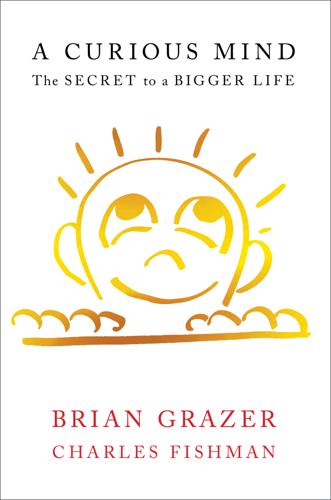
A Curious Mind: The Secret to a Bigger Life
by
Brian Grazer
and
Charles Fishman
Published 6 Apr 2014
Details here: www.the-numbers.com/person/208890401-Brian-Grazer#tab=summary, accessed October 18, 2014. 3. What parts of the movie Apollo 13 take liberties with what actually happened? If you’re curious, here are a handful of websites that answer the question, including a long interview with T. K. Mattingly, the astronaut who was bumped from the flight at the last minute because he was exposed to German measles: Ken Mattingly on the movie Apollo 13: www.universetoday.com/101531/ken-mattingly-explains-how-the-apollo-13-movie-differed-from-real-life/, accessed October 18, 2014. From the official NASA oral history website: www.jsc.nasa.gov/history/oral_histories/MattinglyTK/MattinglyTK_11-6-01.htm, accessed October 18, 2014.
…
The results have always been surprising, and the connections I’ve made from the curiosity conversations have cascaded through my life—and the movies we make—in the most unexpected ways. My conversation with the astronaut Jim Lovell certainly started me on the path to telling the story of Apollo 13. But how do we convey, in a movie, the psychology of being trapped on a crippled spaceship? It was Veronica de Negri, a Chilean activist who was tortured for months by her own government, who taught me what it’s like to be forced to rely completely on oneself to survive. Veronica de Negri helped us to get Apollo 13 right as surely as Jim Lovell did. Over time, I discovered that I’m curious in a particular sort of way. My strongest sense of curiosity is what I call emotional curiosity: I want to understand what makes people tick; I want to see if I can connect a person’s attitude and personality with their work, with their challenges and accomplishments.
…
I produced a movie called Apollo 13, the true story of what happens when three U.S. astronauts get trapped in their crippled spaceship. I produced a movie called 8 Mile, about trying to be a white rap musician in the black rap world of Detroit. I produced a movie called American Gangster, about a heroin smuggler in Vietnam-era New York. American Gangster isn’t about a gangster—it’s about capability, it’s about talent and determination. 8 Mile isn’t about rap music, it isn’t even about race—it’s about surmounting humiliation, about respect, about being an outsider. Apollo 13 isn’t about aeronautics—it’s about resourcefulness, about putting aside panic in the name of survival.
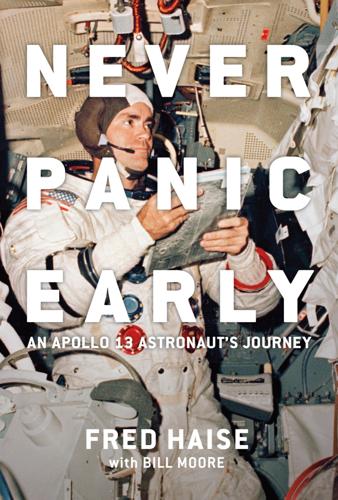
Never Panic Early: An Apollo 13 Astronaut's Journey
by
Fred Haise
and
Bill Moore
Published 4 Apr 2022
Taylor Designed by Gary Tooth / Empire Design Studio Library of Congress Cataloging-in-Publication Data Names: Haise, Fred, 1933- author. | Moore, Bill, author. Title: Never panic early : an Apollo 13 astronaut’s journey / Fred Haise with Bill Moore. Identifiers: LCCN 2021053466 (print) | LCCN 2021053467 (ebook) | ISBN 9781588347138 (hardcover) | ISBN 9781588347145 (ebook) Subjects: LCSH: Haise, Fred, 1933- | United States. National Aeronautics and Space Administration–Biography. | Apollo 13 (Spacecraft) | Astronauts–United States–Biography. | Space flight–History. Classification: LCC TL789.85.H35 A3 2022 (print) | LCC TL789.85.H35 (ebook) | DDC 629.450092 [B]–dc23/eng/20211220 LC record available at https://lccn.loc.gov/2021053466 LC ebook record available at https://lccn.loc.gov/2021053467 Ebook ISBN 9781588347145 For permission to reproduce illustrations appearing in this book, please correspond directly with the owners of the works, as seen at the end of the image captions.
…
I was the flight director for the successful flight tests of the two lunar modules that Haise developed and tested in the Grumman plant. His description of the Apollo 13 oxygen tank explosion as one of his never panic early experiences relays a close and personal sense of the event. My team and I had faced mission crises before—the Gemini 8 emergency reentry to landing in the West Pacific was the closest call we had ever faced. Apollo 13, however, was a matter of survival. It was as tough a test as could be conceived and put to flight control. If there was any weakness, the team would have crumbled.
…
However, as the launch date approached, we ran segments of flight without any failures to get a feel for the normal mission timeline, without the interruption of things going wrong. In events with the general public, I am often asked how we seemed so controlled in handling the inflight failure on Apollo 13. They were not aware of our training, where dealing with failures was business as usual. Ron Howard, doing his homework before filming the movie Apollo 13, said that he listened to all the air-to-ground transmissions provided by NASA and it never seemed to him that we had a problem. I talked to Jim about expanding the field geology training based on a conversation that I had with astronaut Jack Schmitt.
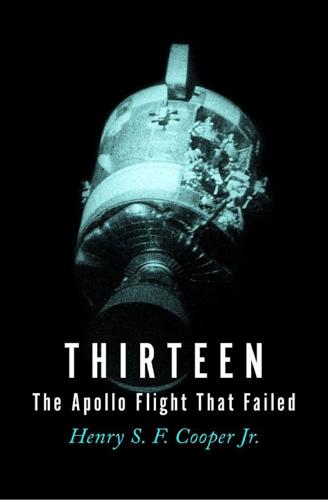
Thirteen: The Apollo Flight That Failed
by
Henry S. F. Cooper
Published 31 Dec 2013
At the Manned Spacecraft Center, near Houston, Texas, the glow was seen by several engineers who were using a rooftop observatory to track the Apollo 13 spacecraft, which had been launched two days before and was now a day away from the moon and two days from a scheduled moon landing. One of the group, Andy Saulietis, had rigged a telescope to a television set in such a way that objects in the telescope’s field of view appeared on the screen. Above, the sky was clear and black, like deep water, with occasional clouds making ripples across it. Saulietis and his companions—who, incidentally, had no operational connection with the Apollo 13 mission but were following it for a related project—had lost sight of the spacecraft, two hundred and five thousand miles away.
…
However, technology notwithstanding, the men who ply between the earth and the heavens are not doing anything much different from what was done by the explorers who merely used the heavens to steer by. The Apollo 13 astronauts were now in every bit as understandable and distressing a predicament as any seamen aboard a leaky vessel in danger of foundering. This was readily grasped by the estimated third of the world’s population who were following Apollo 13—probably more than had followed any other spaceflight. There was a sort of worldwide shudder of horror, for if these men died they could do so in a way no men ever had before: they could be the first never to return to the dust of this planet.
…
Before going to sleep, one of them told one of the doctors he just didn’t know how much longer they could have kept on going. ACKNOWLEDGMENTS I WANT TO THANK those astronauts and flight controllers of Apollo 13 who gave me their stories and who later took the time to make sure I got them straight. Many others have had a hand in this book. In particular, William Shawn, the Editor of The New Yorker, first had the idea that the Apollo 13 mission might offer the best glimpse into the anatomy of a spaceflight and especially into the workings of “those men who sit at those desks” in the Mission Control Room—the flight controllers, whom nobody seemed to know much about.

Failure Is Not an Option: Mission Control From Mercury to Apollo 13 and Beyond
by
Gene Kranz
Published 7 Jan 2000
The song had temporarily replaced “The Stars and Stripes Forever” as my going-to-work music. The version sung by the group called the 5th Dimension was picked up by the Apollo 13 crew and controllers as symbolic of the energy and momentum of the Apollo lunar program. The song’s signature words, “This is the dawning of the Age of Aquarius,” symbolized the first mission of the new decade as well as the challenge and excitement of the increasingly difficult and risky lunar missions. When the Apollo 13 crew named their LM Aquarius, the song moved to the “top of the pops” for the controllers. The CSM was dubbed Odyssey. Lunar exploration began in earnest after the pinpoint landing of Apollo 12.
…
The universal characteristic of a controller is that he will never give up until he has an answer or another option. By the time someone graduated to the front room consoles either he was ready—or he was gone before he got there. The Apollo 13 flight director chemistry was unique. Windler and I were jet fighter pilots; Griffin flew as a radar operator. For the first time we were working together on a mission. Lunney, the fourth flight director, was the last of the original flight dynamics officers, the master of his craft. April 11, 1970, Apollo 13 Milt Windler, a veteran of three Apollo missions, drew the launch flight director’s assignment. He had earned his spurs as a test director in Kraft’s recovery division and not in Mission Control.
…
Since the punch bowls were engraved, the lawyers decided we could keep them.) I think everyone, once in his life, should be given a ticker-tape parade. The Apollo 13 debriefing had few surprises. We learned that the tank failure was due to a combination of a design flaw, mishandling during change-out, a draining procedure after a test that damaged the heater circuit, and a poor selection of the telemetry measurement range for the heater temperatures. The debriefing party at the Hofbraugarten was merciless, beginning with a parody of the mission. The tape prepared by the Apollo 13 backup crew and the CapComs was not for the thin-skinned. The parody began and ended with the “immortal words” Liebergot and I exchanged early in the crisis.
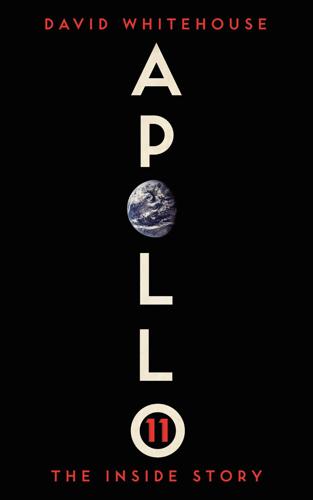
Apollo 11: The Inside Story
by
David Whitehouse
Published 7 Mar 2019
Slayton had to get approval for flight crew assignments from George Mueller, who rejected the Apollo 13 assignments saying the crew was too inexperienced. Slayton then asked Jim Lovell, the backup commander for Apollo 11, and slated to command Apollo 14, if his crew would be willing to fly Apollo 13 instead. He agreed, and Shepard’s inexperienced crew was assigned to the Apollo 14 so that they could get more training. Neither Shepard nor Lovell expected there would be much difference between Apollo 13 and Apollo 14. The failure of Apollo 13 meant that Apollo 14 was delayed until 1971, so that modifications could be made to the spacecraft.
…
We were looking specifically for good coverage of proposed future landing sites, especially Fra Mauro, which was then scheduled for Apollo 13. That’s a rough surface, and we wanted to get the highest resolution photos we could so that the crew of the Apollo 13 mission would have the best training information they could get. As 1970 dawned, so the Apollo program began to diminish. On 14 January NASA announced the cancellation of Apollo 20, which had been scheduled to land near Surveyor 7 in Tycho crater. A day later, writing in the New York Times, George Low said that the decision would waste the nation’s development. Nor, for different reasons, would the astronauts of the ill-fated Apollo 13 ever land on the lunar surface.
…
Keith 1, 2 Glushko, Valentin 1, 2, 3, 4, 5, 6 Goddard, Robert 1 Gordon, Dick 1, 2, 3 Göring, Hermann 1 Greaves, Jim 1 Grechko, Georgi 1 Grishin, Lev 1 Grissom, Gus 1, 2, 3, 4, 5, 6, 7 Grizodubova, Valentina 1 Gromov, Mikhail 1 Grumman Aerospace Corporation 1, 2, 3 ‘Gumdrop’ (Apollo 9 Command Module) 1 H Hadley Rille 1 Hagerty, James C. 1 Haise, Fred 1, 2, 3, 4, 5, 6 quotes 1, 2 Haise, Mary 1 heat shields 1, 2, 3 Himmler, Heinrich 1, 2, 3 Hitler, Adolf 1, 2, 3 Hodge, John 1, 2 Holmes, Brainerd 1, 2 Hornet, USS 1 Houbolt, John 1 House, William F. 1 House Rock 1 Humphrey, Hubert 1, 2 Huntsville (Alabama) 1, 2 I Igla docking system 1, 2 Inter-Continental Ballistic Missiles (ICBMs) 1 International Geophysical Year (IGY) 1, 2, 3 ‘Intrepid’ (Apollo 12 Lunar Module) 1 Irwin, Jim 1 Ivanovsky, Oleg 1 J J-2 engines 1 Jet Propulsion Laboratory (JPL) 1 Johnson, Lady Bird 1 Johnson, Lyndon B. 1, 2, 3, 4, 5 quotes 1, 2 and space race 1, 2, 3 Jupiter-C rocket 1, 2, 3 K Kamanin, Nikolai 1, 2, 3, 4, 5, 6 quotes 1, 2, 3, 4, 5, 6, 7, 8 and Soyuz program 1, 2 and Voshkod project 1, 2 Kammler, Hans 1 Katys, Georgi 1 Keldysh, Mstislav 1, 2 Kelly, Fred 1 Kennedy, Jackie 1 Kennedy, John F. letter to 1 and Moon mission 1, 2, 3, 4 note at grave 1 and space race 1, 2, 3 Kennedy, Robert 1 Kerwin, Joe 1, 2 Khrunov, Yevgeny 1 Khruschev, Nikita 1, 2, 3, 4, 5, 6, 7 and lunar probes 1 and manned flights 1, 2, 3, 4 Khruschev, Sergei 1 King, Martin Luther 1 Kistiakowsky, George 1 ‘Kitty Hawk’ (Apollo 14 Command Module) 1 Kolyma death camp 1 Komarov, Vladimir 1, 2, 3, 4, 5 Kondratyuk, Yuri Vasilyevich 1 Korolev, Sergei background 1 death 1, 2 and first manned flight 1, 2, 3, 4 health problems 1, 2, 3, 4, 5, 6 imprisonment 1 and lunar probes 1, 2 and rockets 1, 2, 3 and satellites 1, 2 and Voshkod project 1, 2, 3, 4, 5 and Vostok program 1, 2, 3, 4, 5, 6, 7 Korp, Christina 1 Kosygin, Alexei 1 Kraft, Chris 1, 2, 3, 4, 5 Kranz, Gene 1, 2, 3 and Apollo 11 1 and Apollo program 1, 2 and Gemini program 1, 2 quotes 1, 2, 3, 4 on Apollo 11 1 on Apollo 13 1, 2, 3 Kuznetsova, Tatyana 1 L L1 Moon program 1, 2, 3, 4, 5, 6 L3 project 1, 2 Laika (Kudryavka) 1 Leonov, Aleksai 1, 2, 3, 4 ‘Liberty Bell 7’ (Mercury capsule) 1 Liebergot, Sy 1 lifeboat, Lunar Module as 1 Lindbergh, Charles 1, 2 Lisa (dog) 1 lithium hydroxide 1, 2 Lousma, Jack 1, 2 Lovelace, William 1 Lovell, Jim Apollo 8 1, 2, 3 and Apollo 11 1 Apollo 13 1, 2, 3, 4 and Armstrong 1 Gemini 7 1, 2 quotes 1, 2, 3, 4 on Apollo 13 1, 2, 3, 4 recruitment 1, 2 Lovell, Marilyn 1 Low, George 1, 2, 3, 4, 5 Luna probes 1, 2, 3 Luna 15 1, 2, 3 Lunar Landing Reserve Vehicle (LLRV) 1 Lunar Module (LM) 1, 2, 3, 4 Apollo 8 1, 2 Apollo 9 (‘Spider’) 1 Apollo 10 (‘Snoopy’) 1, 2 Apollo 11 (‘Eagle’) 1, 2, 3, 4, 5 communication problems 1, 2 computer alarms 1 landing 1, 2 lift-off and docking 1 Apollo 12 (‘Intrepid’) 1 Apollo 13 (‘Aquarius’) 1, 2, 3 Apollo 14 (‘Antares’) 1, 2 Apollo 15 (‘Falcon’) 1 Apollo 17 (‘Challenger’) 1, 2 first flight test 1 as lifeboat 1 LM-4 1 LM-5 1 lunar-orbit rendezvous 1, 2 Lunar Orbiter missions 1 Lunar Orbiter 1 1 Lunar Orbiter 2 1 Lunar Orbiter 4 1 Lunar Orbiter 5 1 Lunar Orbiter spacecraft 1 lunar probes 1, 2 Lunar Rover 1, 2, 3, 4 lunar scoop spacecraft 1 Lunney, Glynn 1, 2 M MacLeish, Archibald 1 Man in Space films 1 Manned Spacecraft Center 1, 2, 3, 4, 5 Mare Cognitum 1 Mare Imbrium 1 Mariner spacecraft 1 Mars 1 mass concentrations (mascons) 1 Mathews, Charles 1 Mattingly, Ken 1, 2, 3 Mayer, Johnny 1 McDivitt, Jim 1, 2, 3, 4, 5 recruitment 1 McDivitt, Patricia 1 McDonnell, Jim 1 McDonnell Aircraft Corporation 1, 2 McElroy, Neil 1 Medaris, John B. 1 Ménière’s disease 1, 2 Menshikov 1 Mercury 13 1 Mercury program 1, 2, 3, 4, 5 Mercury Seven 1, 2, 3 Merritt Island 1 MET 1 Mishin, Vasili 1, 2, 3, 4, 5, 6, 7 Mitchell, Edgar 1 Modular Equipment Stowage Assembly (MESA) 1 Modularized Equipment Transporter (MET) 1 Mondale, Walter 1 Moon composition data collection 1 dark side 1 first artificial satellite 1 first probe to strike 1 first soft landing 1 geology 1 magnetic field 1 moonwalks 1, 2, 3, 4, 5, 6 Moore, John 1 Morrow, Lola 1 Mueller, George 1, 2, 3, 4, 5, 6 Muller, Paul 1 N N1 booster 1, 2, 3, 4, 5 NASA creation 1, 2 and government cuts 1 NASA Center 1 National Air and Space Museum 1 Nedelin, Mitrofan 1, 2, 3, 4 Nelyubov, Grigori 1, 2, 3, 4 New Nine 1 night-time launch, first 1 Nikolayev, Andriyan 1, 2, 3, 4, 5, 6 Nixon, Richard M. 1, 2, 3, 4, 5, 6 North American Aviation 1, 2, 3 North American Rockwell 1, 2 North Ray Crater 1 O Oberammergau 1 Oberth, Hermann 1, 2 Object D 1 Obraztsov (Academician) 1 Ocean of Storms 1, 2, 3 ‘Odyssey’ (Apollo 13 Command Module) 1, 2, 3 O’Hara, Dee 1, 2 ‘one small step’ 1, 2 Outer Space Treaty 1 P Paine, Thomas 1, 2, 3, 4, 5, 6 Pashkov, Giorgi 1 peace 1, 2, 3, 4, 5 Peenemunde 1, 2 Petrone, Rocco 1 Petrovsky, Boris 1 Phillips, Sam 1, 2 Pickering, William 1 Pioneer probes 1 Pioneer 1 1 Pioneer 2 1 Ponomareva, Valentina 1, 2, 3, 4 Popovich, Marina 1 Popovich, Pavel 1, 2, 3 Powers, Shorty 1 Presidential Medal of Freedom 1 Propst, Gary 1 Proton rocket 1, 2, 3, 4 R R-5 rocket 1 R-7 rocket 1, 2, 3, 4 R-16 rocket 1 Ranger spacecraft 1 Redstone rocket 1, 2, 3 regolith 1 Roosa, Stuart 1 S satellites early development 1 first in orbit 1 see also Explorer 1; Sputnik Saturn rocket 1 Saturn 1B 1 Saturn 5 1, 2, 3, 4, 5, 6, 7, 8 Savitskaya, Svetlana 1 Schirra, Walter (Wally) 1, 2 Apollo 7 1 first space flight 1 Gemini 6 1 quotes 1, 2, 3 Schmitt, Harrison 1 Schweickart, Russell 1 Scott, David (Dave) 1, 2 Apollo 15 1 Paris Air Show 1 quote 1 Sea of Rains 1 Sea of Tranquillity 1, 2, 3, 4, 5 Seamans, Robert (Bob) 1, 2, 3 Sedov, Leonid 1, 2 See, Elliot 1 seismic response experiments 1 Service Module (SM) 1, 2 Apollo 10 1, 2 Apollo 13 1, 2 Apollo 16 1 test in space 1 Service Propulsion System 1 Severin, Guy 1 Shatalov, Vladimir 1, 2 Shea, Joe 1 Sheer, Julian 1 Shelley, Percy Bysshe 1 Shepard, Alan Apollo 14 1 at White House 1 background 1 first space flight 1 and Gemini program 1 Ménière’s disease 1, 2 in Mercury Seven 1, 2, 3 oldest to walk on Moon 1 quotes 1, 2, 3, 4, 5 Shepard, Louise 1 Shoemaker, Gene 1 Shonin, Georgi 1 ‘Sigma 7’ (Mercury capsule) 1 Sinus Medii 1 Sjogren, William 1 Slayton, Deke and Apollo 1 disaster 1 and Apollo 11 1, 2 Apollo-Soyuz docking mission 1 and astronaut recruitment 1, 2, 3 and astronaut selection 1, 2, 3 and Gemini program 1, 2 grounded 1 in Mercury Seven 1 quotes 1, 2, 3 Smoky Mountains 1 ‘Snoopy’ (Apollo 10 Lunar Module) 1 Society of Experimental Test Pilots 1 solar-wind experiment 1 Solovyeva, Irina 1, 2, 3, 4 Soyuz program 1, 2, 3, 4 Soyuz 1 1 Soyuz 2 1, 2 Soyuz 3 1 Soyuz spacecraft 1, 2 space endurance record 1 Space Shuttle 1 Space Task Group 1, 2 Spacecraft 12 1 spacesuit overheating 1 spacewalks 1, 2, 3, 4, 5, 6, 7 ‘Spider’ (Apollo 9 Lunar Module) 1 Sputnik 1 Sputnik 2 1 Stafford, Tom 1 Apollo 10 1, 2, 3, 4, 5 first Moon landing contender 1 and Gemini program 1, 2, 3 quotes 1, 2 recruitment 1 Stalin, Joseph 1, 2, 3, 4, 5, 6 Staver, Robert 1 Stone Mountain 1 Surveyor spacecraft 1, 2 Surveyor 3 1, 2 Surveyor 4 1 Surveyor 5 1 Surveyor 6 1 Surveyor 7 1, 2 Swigert, Jack 1, 2, 3 T Taurus-Littrow highlands 1, 2 Teller, Edward 1 Tereshkova, Valentina 1, 2, 3 Thor–Able rocket 1 ‘thumper’ 1 Tikhonravov, Mikhail 1, 2 Titan rocket 1 Titov, Gherman 1, 2, 3, 4, 5 Toftoy, Holger 1, 2 tortoises, in space 1 Triplet craters 1 Truman, Harry S. 1 Tsander, Friedrikh 1, 2 Tsiolkovsky, Konstantin 1, 2, 3, 4, 5 Tsygan (dog) 1 Tukhachevski, Marshal 1 Tupolev, Andrei 1, 2 Tycho crater 1 Tyulin, Georgi 1, 2 U urination 1 Ustinov, Dimitri 1, 2, 3, 4, 5 V V-2 rocket 1 Van Allen, James 1 Van Allen radiation belts 1 Vanguard rocket 1, 2 Vavilov, Anatole 1 Venus 1 Verne, Jules 1 Vertical Assembly Building (VAB) 1 Vietnam 1 Vishnevsky, Dr 1 Voloshin, Valeri 1 Volynov, Boris 1, 2 von Braun, Magnus 1 von Braun, Wernher 1 and Apollo program 1, 2, 3 at White Sands 1, 2 background 1 and first US manned flight 1, 2 on Russian Moon mission 1 and satellites 1, 2, 3 space travel vision 1 and V-2 1, 2 Voshkod project 1, 2, 3 Voshkod 2 1, 2 Voshkod 3 1, 2, 3 Voshkod 4 1 Voshkod 5 1, 2 Vostok program 1, 2 first manned flight 1 test flights 1, 2, 3 Vostok 3 1 Vostok 4 1 Vostok 5 1 Vostok 6 1 W Webb, James 1, 2, 3, 4, 5 and Apollo program 1, 2, 3 departure from NASA 1 and Gemini program 1, 2 quotes 1 and rocket assembly 1 Weird crater 1 Welles, Orson 1 Wendt, Guenter 1, 2 White, Ed 1, 2, 3, 4 White, Patricia 1, 2 Wiesner, Jerome 1, 2 Williams, Walt 1 Y Yangel, Mikhail 1, 2 ‘Yankee Clipper’ (Apollo 12 Command Module) 1, 2 Yazdovsky, Vladimir 1 Yeager, Chuck 1 Yegorov, Boris 1 Yeliseyev, Aleksei 1 Yerkina, Zhanna 1, 2 Yesenin, Tolya 1 Yezhov, Nikolai 1 Young, John Apollo 10 1, 2 Apollo 16 1 Gemini 3 1 Gemini 10 1 quote 1 recruitment 1 Z Zond 4 1, 2 Zond 5 1, 2, 3 Zond 6 1 Zvezdny Gorodok 1 The ‘Mercury 7’ astronauts photographed on 9 April 1960.
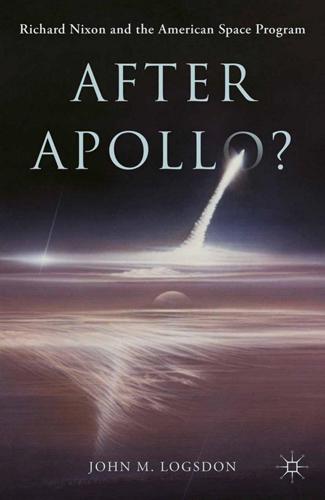
After Apollo?: Richard Nixon and the American Space Program
by
John M. Logsdon
Published 5 Mar 2015
Low left the meeting with the feeling that “our request for reconsideration on . . . the shuttle would be denied.”23 Richard Nixon, Apollo 13, and Apollo 17 What Low did not know as he met with Weinberger on December 14 was that Richard Nixon was having second thoughts about going ahead with the Apollo 17 mission. The president had somehow gotten the impression that Apollo 17 was even more risky than the three missions scheduled to precede 154 A f t e r A p o l l o? it. Nixon did not want a repeat of the Apollo 13 experience, particularly in mid-1972, when the Apollo 17 launch was then scheduled, not least of all because it would come as he was campaigning for reelection. The neartragedy of Apollo 13 had made a strong impression on the president, and provided the background against which he decided that Apollo 17 should be canceled.
…
Even as they planned how the president would deal with the unfolding crisis, they made sure that his involvement would reflect well on Nixon as a national leader. In the days after the safe return of the Apollo 13 crew, the White House approached Life magazine senior correspondent Hugh Sidey about “doing an inside story on the President’s involvement in and the attitudes, etc. during the Apollo 13 crisis.” It took several months for this suggestion to bear fruit, but eventually Sidey wrote a very positive account, saying that “the near tragedy of Apollo 13, a deeply emotional drama for all Americans, was even more so for the President.” The Apollo astronauts, Sidey suggested, were an “obsession” for Nixon, who viewed them “as more than heroes.”
…
With respect to the plausibility of Reeve’s description of Nixon drinking in his excitement at the successful conclusion of the Apollo 13 mission, there are many accounts of Nixon enjoying alcohol in the evening both as he sat alone reviewing his paperwork and on yacht cruises on the Potomac, but less evidence that Nixon on occasion also drank during the day. 29. Office of the White House Press Secretary, “Remarks of the President upon the Presentation of the Medal of Freedom to the Apollo 13 Mission Operations Team” and “Exchange of Remarks between the President and Captain James Arthur Lovell, Jr., USN, upon the Presentation of the Medal of Freedom to the Apollo 13 Astronauts,” April 18, 1970, Box 61, Papers of Edwin Harper, RNPL. 30. Memorandum from Dwight Chapin to H.R. Haldeman, “Apollo 13 – White House Activity,” April 21, 1970, Outer Space-3 Files, RNPL; Hugh Sidey, “Marshaling the Good Guys,” Life, August 21, 1970, 28. Notes 323 31.
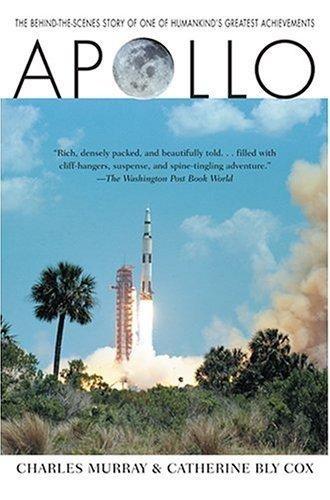
Apollo
by
Charles Murray
and
Catherine Bly Cox
Published 1 Jan 1989
As the finishing touch, Arabian took an identical O2 tank, subjected it to exactly the sequence of events that he believed to have caused the Apollo 13 anomaly, and produced exactly the same result. This is what had happened: In October 1968, when the O2 Tank 2 used in Apollo 13 was at North American, it was dropped. It was only a two-inch drop, and no one could detect any damage, but it seems likely that the jolt loosened the fill tube that put liquid oxygen into the tank. In March 1970, three weeks before the flight, Apollo 13 underwent its Countdown Demonstration Test that, like all C.D.D.T.s, involved loading all the cryos. When the test was over, O2 Tank 2 was still 92 percent full, and it wouldn’t detank normally—probably because of the loose fill tube.
…
Despite the controllers’ optimism, which to some degree was part of their job description, the design engineers were right about how closely the margins had been shaved. A senior engineer in the Test Division, speaking just a few days after Apollo 13 had landed, said that when he heard the news about the accident he assumed the Apollo 13 crew were goners. “If you had asked [before the accident] what would happen if we lost both oxygen tanks fifty-eight hours into the mission, we’d have said, ‘Well, you can kiss those guys goodbye.’” 4 Each of the major participants in Apollo 13 remembered a different moment that, to him, represented ultimate crisis. For Lunney it was the final few minutes of the transfer from Odyssey to Aquarius.
…
(Courtesy of Sy Liebergot) We can’t be sure, but this photograph was probably taken about an hour into the crisis on Apollo 13, as Don Arabian outlined the minimum voltages for operating the C.S.M. equipment to Gene Kranz. Sam Phillips (seated), head of the entire Apollo Program, watches. Glynn Lunney during the transfer of the crew into the LEM after the Apollo 13 explosion. Those surrounding Lunney include Chuck Dieterich (behind Lunney), Jerry Bostick (face partially hidden), Bill Tindall (seated), and Chris Kraft (with cigar). (NASA) Odyssey splashes down safely at the end of Apollo 13. Gerry Griffin, Gene Kranz, and Glynn Lunney lead the cheering.
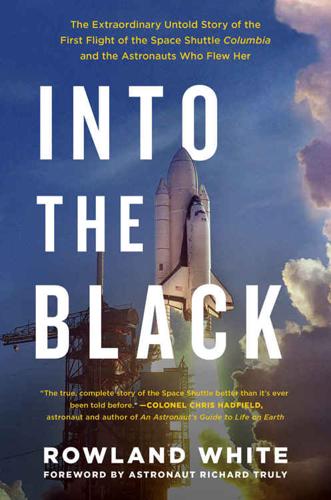
Into the Black: The Extraordinary Untold Story of the First Flight of the Space Shuttle Columbia and the Astronauts Who Flew Her
by
Rowland White
and
Richard Truly
Published 18 Apr 2016
Combining outstanding technical ability with an easygoing, genial nature, Freddo was a dependable, popular figure inside the Astronaut Office. To his delight, he was assigned the job of lunar module pilot on Apollo 13. The launch on April 11, 1970, wasn’t entirely uneventful. The second-stage center engine experienced an unstable fuel flow which caused it to pogo, sending a powerful, persistent vertical chug resonating through the stack. It was enough to trip out an accelerometer that shut down the engine before the vibration could do any more damage. But soon that was behind them. Still able to make orbit, Apollo 13 was on its way to the moon. Haise was alone in the lunar module, Aquarius, packing away equipment he, Jim Lovell (the mission’s commander) and Jack Swigert (the command module pilot) had used to film a TV broadcast back to Earth.
…
Then the crew discovered that the second oxygen tank was leaking. • • • In the glassed-off VIP area at the back of Mission Control, John Young had been watching the television footage beamed back from the spacecraft with the Apollo 13 wives. Young was commander of the mission’s backup crew. Watching Jack Swigert had not been part of the plan. Until just three days earlier, Swigert had been Young’s own command module pilot until a fear that the Apollo 13 primary CM pilot, T. K. Mattingly, might have contracted German measles had, despite Young’s resistance, seen the two crewmen swapped. At the end of the broadcast, Young had said good-bye to Jim Lovell’s wife, Marilyn.
…
On that basis, even if they ran out of water five hours before they reentered, Haise and his crewmates were going to make it home. An exhausted Haise was told by Lovell to try to get some sleep. But Apollo 13 was hardly out of the woods. Ahead lay two further engine burns, course corrections, half an hour in a communications blackout on the dark side of the moon, near freezing temperatures and, critically, the construction of ad hoc air filters to scrub poisonous carbon dioxide from the cabin—a job not finished before CO2 levels had risen high enough to trigger a master alarm. And yet the crew of Apollo 13 eventually splashed down safely around one thousand miles southeast of Fiji on April 17. In surviving their eight-day mission, Lovell, Haise and Swigert traveled farther from Earth than anyone before or since.
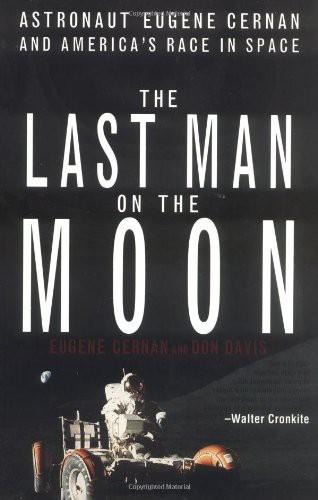
The Last Man on the Moon: Astronaut Eugene Cernan and America's Race in Space
by
Eugene Cernan
and
Donald A. Davis
Published 1 Jan 1998
TV networks, which only a few hours before the explosion had refused telecast time, now stampeded toward the drama of what was happening to Apollo 13. I was later horrified to learn that the Number 2 oxygen tank that exploded was one of those that had been replaced on our Apollo 10 spacecraft. As for the corps of astronauts, we all jumped into this one together. Any pettiness, bias or personal disagreement, anything not directly connected to bringing Apollo 13 back safely was put on the shelf, and everyone threw away their badges of difference. Our three guys were in jeopardy far, far away, and we all fought to get them home. Breathable oxygen soon began to run out in Apollo 13’s command module, which was the crew’s living quarters, and the damaged fuel cells were unable to generate the electricity needed to run the spacecraft.
…
Instead, Deke moved Jim up one flight, with his crew of Ken Mattingly and Fred Haise, to fly Apollo 13. That moved Al back to the open slot on Apollo 14, with another four months to prepare. Neither red-haired Stu Roosa, his command module pilot, nor lunar module pilot Ed Mitchell had yet been in space, so the crew was immediately given the nickname of “The Three Rookies,” a not-so-subtle needle to Al’s ego for having stomped on the rest of us for so many years. By bigfooting Gordo’s chance to fly on Apollo 13, Deke and Al had sure put a dent in the three-mission rotation theory, and the question that occupied my mind was, what next for Tom Stafford, John Young and Gene Cernan?
…
To him, taking the offered CM pilot slot meant that he would just ride in circles around the Moon some more during the flight of 13, while Lovell, as mission commander, and Fred Haise, who replaced Bill as LM pilot, went down to the surface. Anders felt he had done enough lunar orbiting on Apollo 8. And because no one really knew how many flights there would be after Apollo 13, Bill thought the chances of his rotating into a command and an eventual Moon walk were pretty remote. So just as I had passed on the backup LM job, and Mike had turned down a future command, Anders declined the Apollo 13 CM pilot’s job. A perplexed Deke Slayton suddenly had to get used to a bunch of experienced astronauts refusing his offers of Moon trips. Deke asked Anders to help out in the interim by taking a job in Washington with the National Space Council, and Bill reluctantly agreed, with the understanding that he would remain on astronaut flight status and be considered for an assignment that would get him a Moon walk.
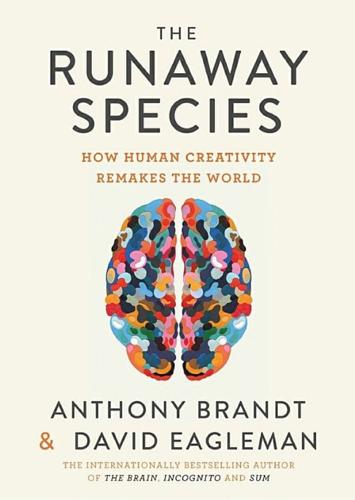
The Runaway Species: How Human Creativity Remakes the World
by
David Eagleman
and
Anthony Brandt
Published 30 Sep 2017
New York Times. December 26, 2013. Accessed January 5, 2014. <http://www.nytimes.com/2013/12/26/science/in-the-human-brain-size-really-isnt-everything.html?_r=0> NOTES Introduction 1 Gene Kranz, Failure Is Not an Option: Mission Control from Mercury to Apollo 13 and Beyond (New York: Simon & Schuster, 2000). 2 Jim Lovell and Jeffrey Kluger, Apollo 13 (New York: Pocket Books, 1995). 3 John Richardson and Marilyn McCully, A Life of Picasso (New York: Random House, 1991). 4 William Rubin, Pablo Picasso, Hélène Seckel-Klein and Judith Cousins, Les Demoiselles D’Avignon (New York: Museum of Modern Art, 1994). 5 A.L.
…
(Barbèy) ref1 Oldenburg, Claes ref1, ref2 Ono, Yoko ref1 open-office plans ref1 “The Open-Office Trap” (article) ref1 The Origins of Continents and Oceans (Wegener) ref1 orthogonal thinking ref1 Otherlab ref1 Otis Elevator Company ref1 “outward bound” model ref1 Painting (1954) (Guston) ref1 Palace of Versailles ref1 Palo Alto innovation center ref1, ref2 parachutes ref1 Paramount ref1 parasols ref1 Parks, Suzan-Lori ref1 Parliament (band) ref1 Patent Office (US) ref1 “Pay-to-See” system ref1 peanut crops ref1, ref2 Pegasus ref1 Pei, I.M. ref1 perfume ref1 Persian carpets ref1 Petit h laboratory (Hermès) ref1 Peugeot Moovie ref1 pharmaceutical industry ref1 Philco ref1 Phillips, Bradford ref1 photocopies ref1, ref2 photography ref1, ref2 Physical (album) ref1 Piazza (Giacometti) ref1 Picasso, Pablo ref1, ref2, ref3, ref4, ref5, ref6, ref7, ref8 Les Demoiselles d’Avignon ref1, ref2, ref3, ref4, ref5 variations on Las Meninas ref1 Pilloton, Emily ref1 Pinter, Harold ref1, ref2 The Pioneers (Cooper) ref1 pixilation, digital ref1 Plantinga, Judy ref1 Playstation, Sony ref1 poetry ref1, ref2, ref3 pointillism ref1 polarization ref1 Pompidou Center (Paris) ref1 Portal, Yago ref1 Porter, Edwin ref1 Portis, Antoinette ref1 possibilities, testing ref1 Postal Telegraph Building (New York) ref1, ref2 precedents ref1 see also history, mining Predicta television ref1 predictability ref1, ref2, ref3, ref4, ref5 predictions ref1, ref2, ref3, ref4, ref5 prizes ref1, ref2, ref3, ref4 Proctor & Gamble ref1 Project Glass ref1 Proust, Marcel ref1 public reception ref1, ref2 Pulitzer Prize ref1, ref2 Pyramide (Elias) ref1 QWERTY keyboard ref1 Radio Corporation of America (RCA) ref1 Radio Shack advertisement ref1 Raimondi, Marcantonio ref1 Raspberry Pi Foundation ref1 Rauschenberg, Robert ref1 raw materials ref1, ref2, ref3, ref4 REALM Charter School ref1 recumbent bicycle ref1 Reggio Emilia institutions ref1 Renaissance ref1, ref2, ref3, ref4, ref5 repetition suppression ref1, ref2, ref3, ref4 “Revolution 9” (song) ref1 rewards ref1, ref2, ref3, ref4, ref5 prizes ref1, ref2, ref3, ref4 Rice University ref1 Richardson, John ref1, ref2, ref3 Riding Around (1969) (Guston) ref1 rigor ref1 RIM ref1 “Rime of the Ancient Mariner” (Coleridge) ref1 risk ref1 arts ref1 creativity practice ref1 encouraging ref1 failure ref1 long time horizons ref1 public reception ref1 Roadable Airplane ref1 Robot B-9 ref1 robotics ref1, ref2, ref3, ref4, ref5 Rockwell, Norman ref1 Rocky IV (film) ref1, ref2 Rococo art ref1 Rodin, Auguste ref1 Rolling Stone (magazine) ref1 Romeo and Juliet (Shakespeare) ref1 Roosevelt, Eleanor ref1 Rosencrantz and Guildenstern Are Dead (Stoppard) ref1 Rosie the Riveter (Rockwell) ref1 Rouen Cathedral ref1 Rouen Cathedral, Set 5 (Lichtenstein) ref1 Royal Shakespeare Company ref1 Ruppy the Puppy ref1 “sailing seeds” experiment ref1 Salon des Réfusés ref1 Sand Castle #3 (Muniz) ref1 “sandboxing” ref1 Sanger, Frederick ref1 Sarnoff, David ref1 SceniCruiser ref1 Schleicher, Lowell ref1 Schmidt, Eric ref1 schools ref1 arts, influence of ref1, ref2 audiences ref1 creative capital ref1 imagination ref1 meaningful work ref1 motivation ref1 precedents ref1 prizes ref1 proliferating options ref1, ref2 risk, encouraging ref1 Schubert, Franz ref1 Schulz, Bruno ref1 science blending ref1, ref2, ref3 breaking ref1, ref2, ref3, ref4 cultural conditioning ref1, ref2 education ref1 fiction ref1 influence of the arts ref1 Scieszka, Jon ref1 Scofidio, Ricardo ref1 scouting, distances ref1 Scratch software ref1 sea squirt ref1 seeking ref1 Semper, Max ref1 Senz umbrella ref1 September 11, 2001 ref1 Serra, Richard ref1 Seurat, Georges ref1 70/20/10 rule (Google) ref1 Shadow Torso (Rodin) ref1 Shakespeare, William ref1, ref2, ref3, ref4, ref5, ref6, ref7, ref8 Shelley, Mary ref1 Shelley, Percy Bysshe ref1 Sheppard, Sheri ref1 Sherlock (tv) ref1 ShipIt Days (Atlassian) ref1 shipping ref1 “The Shipwreck” (Falconer) ref1 Shockley, William ref1 Short, Bobby ref1 Shrinky Dinks ref1 Shuttlecocks (Oldenburg/van Bruggen) ref1 Siemens ref1 silk ref1 Simon (smartphone) ref1 simulating outcomes ref1 see also future Siri ref1 Sistine Chapel ref1 skeuomorphs ref1, ref2 smartphones ref1, ref2, ref3 Blackberry ref1 iPhone ref1, ref2, ref3, ref4 Smets, Gerda ref1, ref2 Snowboard Bicycle ref1 Sobel, Dava ref1 social enhancement ref1 Solyndra ref1 Sony Playstation ref1 Sony Walkman ref1 “A Sound of Thunder” (short story) (Bradbury) ref1 SpaceShipOne (Mojave Aerospace) ref1 speculation ref1 Sphinx ref1 spiders ref1 Sprague, Frank J. ref1 stadiums ref1 Starck, Philippe ref1 Starkweather, Gary ref1 steam engine ref1 Still Life with Violin and Pitcher (Braque) ref1 Stoppard, Tom ref1 Stradivari, Antonio ref1 Stradivarius violins ref1 streamlining ref1 The Street of Crocodiles (Schulz) ref1 A Study in Scarlet (Conan Doyle) ref1 A Study in Pink (tv) ref1 Stueckelberg, Ernst ref1 Subscribervision service ref1 Sun Microsystems ref1 Super Mario Clouds (Arcangel) ref1, ref2 super-font ref1 superheroes ref1 surprise ref1, ref2, ref3, ref4, ref5, ref6 each other ref1, ref2, ref3 sweet potatoes ref1 sweet spot ref1, ref2, ref3, ref4, ref5 Swift, Philip K. ref1 Swigert, Jack ref1, ref2 symmetry, visual ref1 Symmetry 454 (calendar) ref1 synecdoche ref1 Szilard, Leo ref1 Szotyńscy and Zaleski (company) ref1 The Taking of Pelham 123 (film) ref1 Tata ref1 Tate, Nahum ref1 tech box (IDEO) ref1 technology bending ref1 blending ref1 breaking ref1 education ref1, ref2 flexibility ref1 proliferating options ref1 testing possibilities ref1, ref2, ref3 Telemeter ref1 television (tv) ref1, ref2, ref3, ref4, ref5, ref6, ref7 Teller, Astro ref1 Teller, Edward ref1 three Bs see also bending; blending; breaking ref1, ref2, ref3, ref4, ref5, ref6, ref7 Three Flags (Johns) ref1 Three Studies for Portraits (including Self-portrait) (Bacon) ref1 3M Corporation ref1, ref2 300 (film) ref1, ref2 Tilman, Congressman John Q. ref1 time bending ref1 blending ref1 breaking ref1 “end of time” illusion ref1 release medications ref1 sharing ref1 timelessness ref1 Time (magazine) ref1 Titled Arc (Serra) ref1 To B.W.T. (1950) (Guston) ref1 “Today in 1963” (article) (Bel Geddes) ref1 “Tom’s Diner” (song) ref1 “Too Marvelous for Words” (song) ref1 touchscreens ref1 Toyota Corporation ref1 Toyota FCV Plus ref1 Toyota i-Car ref1 transistors ref1 “transitron” ref1 The Travelers (Catalano) ref1 Tree of Codes (Foer) ref1 Trehub, Sandra ref1 trolley cars ref1 The True Story of the Three Little Pigs (Scieszka) ref1 Turner, Mark ref1 Twain, Mark ref1, ref2 Twitter ref1 Twombly, Cy ref1 umbrellas ref1 Un dimanche après-midi à l’île de la Grande Jatte (Seurat) ref1 unBrella ref1 universal beauty ref1 universal language ref1, ref2 Unrecognized (Abakanowicz) ref1 vacuum cleaners ref1 van Bruggen, Coosje ref1 van Gogh, Vincent ref1 variation ref1 Vega, Suzanne ref1 Velázquez, Diego ref1 Veloso, Manuela ref1 ventilators ref1 verlan (French slang) ref1 Verna, Tony ref1 Versailles, Palace of ref1 Versatile Extra Sensory Transducer Vest ref1 Viktor & Rolf ref1 Violin Concerto (Beethoven) ref1 visual perception ref1 visual symmetry ref1 Volute ref1 Waldorf institutions ref1 Walker, Shirley ref1 Walkman, Sony ref1 Wall-less House ref1 Walsh, Craig ref1 Warped Building (“Krzywy Domek”) ref1 Washington, Denzel ref1 Water Lilies and Japanese Footbridge (Monet) ref1 Wegener, Alfred ref1, ref2 The Well-Tempered Clavier (Bach) ref1 Wells Fargo bank ref1 West Side Story (musical) ref1 Westinghouse ref1 what-ifs ref1, ref2, ref3, ref4, ref5, ref6, ref7 see also future White Album (album) ref1 White Flag (Johns) ref1 White on White (Malevich) ref1 Whitney, Eli ref1, ref2 Wiles, Andrew ref1 Wilson, E.O. ref1, ref2, ref3 Wilson, John Tuzo ref1 Windows 8 ref1 windshields ref1, ref2 Winehouse, Amy ref1 wing warping ref1 The Winstons (band) ref1 Women of Algiers (Delacroix) ref1 workplace changes ref1 World calendar ref1 World Season Calendar ref1 World Wide Web ref1 World’s Fairs ref1 Wright, Orville ref1 Wright brothers ref1, ref2, ref3 Wyler, William ref1 X research and development (Google) ref1, ref2 Xerox Corporation ref1, ref2 XPrize ref1 X-Space library ref1 Yoko Ono ref1 YouTube ref1, ref2 Zamenhof, L.L. ref1 Zen gardens ref1 zombies ref1, ref2 NOTES Introduction 1 Gene Kranz, Failure Is Not an Option: Mission Control from Mercury to Apollo 13 and Beyond (New York: Simon & Schuster, 2000). 2 Jim Lovell and Jeffrey Kluger, Apollo 13 (New York: Pocket Books, 1995). 3 John Richardson and Marilyn McCully, A Life of Picasso (New York: Random House, 1991). 4 William Rubin, Pablo Picasso, Hélène Seckel-Klein and Judith Cousins, Les Demoiselles D’Avignon (New York: Museum of Modern Art, 1994). 5 A.L.
…
The creative company 12. The creative school 13. Into the future Acknowledgments Image Credits Bibliography Notes Index INTRODUCTION WHAT DO NASA AND PICASSO HAVE IN COMMON? Several hundred people scramble in a control room in Houston, trying to save three humans ensnared in outer space. It’s 1970 and Apollo 13 is two days into its moonshot when its oxygen tank explodes, spewing debris into space and crippling the craft. Astronaut Jack Swigert, with the understatement of a military man, radios Mission Control. “Houston, we’ve had a problem.” The astronauts are over 200,000 miles from Earth. Fuel, water, electricity and air are running out.
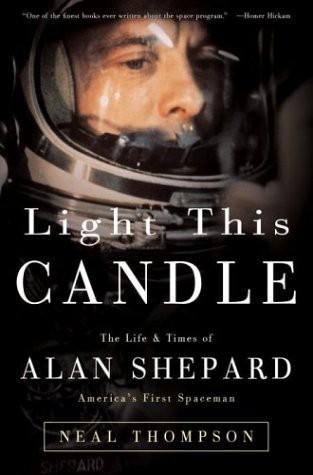
Light This Candle: The Life & Times of Alan Shepard--America's First Spaceman
by
Neal Thompson
Published 2 Jan 2004
And they had to quickly become geology experts, training in deserts and canyons to learn how to identify rocks and minerals, which they’d have to collect on the moon, and to practice walking in their bulky space suits across rocky, sandy moonlike terrain. There simply wasn’t enough time for Shepard to catch up and be unambiguously prepared to command Apollo 13, which was scheduled for an early 1970 launch, less than a year away. Slayton had no choice but to pull Shepard off Apollo 13. But instead of giving the flight to Cooper, Slayton asked Jim Lovell—currently assigned to Apollo 14—if he could take Apollo 13. “Sure, why not?” Lovell said. “What could possibly be the difference between Apollo 13 and Apollo 14?” Shepard also saw little difference between the flights. His notorious impatience aside, he was thrilled to have gotten any flight to the moon.
…
Finally, with a billion people around the world glued to radios and televisions, Apollo 13’s haggard crew crawled back into the cold, clammy command module, which Lovell felt looked “forlorn and pitiful,” and separated from Aquarius. “She was a good ship,” Lovell reported with a catch in his voice. Sixty tension-filled minutes later, Apollo 13 was bobbing safely in the Pacific. Incredibly, they had landed within three miles of the recovery ship, USS Iwo Jima, the most accurate landing of the entire space program. Weeks later Shepard met with Jim Lovell back in Houston, and Lovell asked Shepard how he felt now about losing Apollo 13. It would become a persistent joke between Shepard and Lovell.
…
page 399, “It’s something I believe in”: John Noble Wilford, “Apollo 14 Crew Is Fit and Ready,” The New York Times (January 9, 1971), p. 4. page 400, [Training in Bavaria, Germany]: Author interview with Gene Cernan. pages 401–402, [Mexican prostitutes]: Ibid. pages 403–404, [Apollo 13 scenes]: Lovell, Apollo 13; Barbree et al., Moonshot. page 404, “quit worrying and get some sleep”: Barbree et al., Moonshot, p. 270. page 404, “forlorn and pitiful”: Ibid., p. 271. page 404, “She was a good ship”: Ibid., p. 272. page 404, “Anytime you want Apollo 13 back, Al . . .”: Author interview with James Lovell. page 404, [Louise quiet, shy, and sometimes sickly]: Author interview with Dorel Alco Abbot. page 405, “What do you expect from a sailor?”
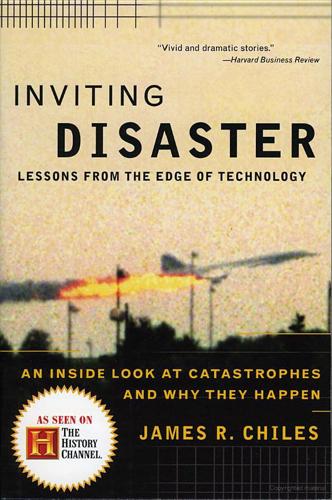
Inviting Disaster
by
James R. Chiles
Published 7 Jul 2008
But in doing so the men at Kennedy missed the only chance they’d ever have to intercept a problem that came very close to snuffing out the astronauts aboard the Apollo 13 flight. As it turned out, the only part of the mission to land on the moon as intended was the fifteen-ton Saturn-IVB third stage, which smashed into the regolith to provide information for a seismometer left on the moon by Apollo 12. We know from the long history of system failures that most problems have been like Apollo 13 in that they offered clues before the full-fledged emergency. “When has an accident occurred which has not had a precursor incident?”
…
While the TV audience thrilled to the way that mission controllers and Apollo crew beat the odds and got the ship back home by rigging up brilliant solutions with the electrical system, navigation, LEM engine, and air purification canisters, the Apollo 13 drama was not something to cheer about. This highly avoidable mishap later strengthened the cause of politicians who opposed Apollo spending and who wanted to end the program before the full suite of flights. And Apollo 13, or its predecessors with the same thermostat problem, could easily have been a complete disaster had the blowout occurred under slightly different circumstances. The lesson that Apollo brought back to Earth is that a quick work-around—in this case the brainstorm that running the heater could empty the oxygen tank fast enough to make the launch deadline—is a good idea only for a machine in which (a) failure doesn’t matter much or (b) somebody first figures out the full effect this method is going to have on the machine.
…
New York: Van Nostrand Reinhold, 1983. Sweet, William. “Chernobyl: What Really Happened.” Technology Review ( July 1989): 43. U.S. Nuclear Regulatory Commission. Report on the Accident at the Chernobyl Nuclear Power Station. Washington, D.C.: U.S. General Printing Office, 1987. Chapter 8 Apollo 13 Review Board. Report of Apollo 13 Review Board. Washington, D.C.: U.S. General Printing Office, 1970. Bower, Bruce. “Seeing Through Expert Eyes.” Science News, July 18, 1998, 44. Bradford, Michael. “Near-Miss Analysis Directs Safety Plan.” Business Insurance, September 27, 1999, 3. Cook, George. “Engineers Assume All Responsibility.”

The Ultimate Engineer: The Remarkable Life of NASA's Visionary Leader George M. Low
by
Richard Jurek
Published 2 Dec 2019
“The results of the hearings were quite positive,” Low wrote in his notes, echoing the support Congress showed NASA, McDivitt, the astronauts, and the entire NASA team. “There was no significant criticism of NASA, and only praise for the way NASA handled the Apollo 13 situation. Newspaper and editorial comments ended very soon after these hearings and, insofar as the public and the Congress are concerned, the Apollo 13 situation is just about forgotten.”95 Forgotten. Interest in the space program was at an all-time low until the near tragedy of Apollo 13. The human drama of the event and NASA’s successful handling of it—including allowing the press into mission control to cover every moment of the situation as it unfolded—brought a momentary peak of interest again on a global scale.
…
Always the dirty-hands engineer, he missed being in on the action with Kraft and Slayton; he often found his way to the floor. During the nearly fatal Apollo 13 mission, all hands were made available in the effort to safely bring the astronauts home. Low worked with fellow engineers in mission control and also conducted a number of press conferences to discuss the situation as it unfolded. While those in mission control concerned themselves with Apollo 13’s consumables, he admitted in his notes to being more concerned about their use of the LM as a lifeboat. My main concern during the flight, after the accident, was not the availability of consumables, because this was calculated quite early, but the wellbeing of all of the Lunar Module’s systems.
…
Low at his desk at the MSC in Houston in 1969. Courtesy of the Institute Archives and Special Collections, Rensselaer Polytechnic Institute, Troy, New York. 26. Low (right, with cigar), Thomas Paine (center of frame), and other NASA officials applauding the successful splashdown of the Apollo 13 mission in the MSC mission controlcenter, located in building 30. Apollo 13 splashed down at 12:07:44 p.m. (CST), 17 April 1970, in the South Pacific Ocean. Courtesy of NASA. 27. Low wearing his T-38 flight jacket during one of his many NASA facility tour visits in the 1970s. Courtesy of the Institute Archives and Special Collections, Rensselaer Polytechnic Institute, Troy, New York. 28.
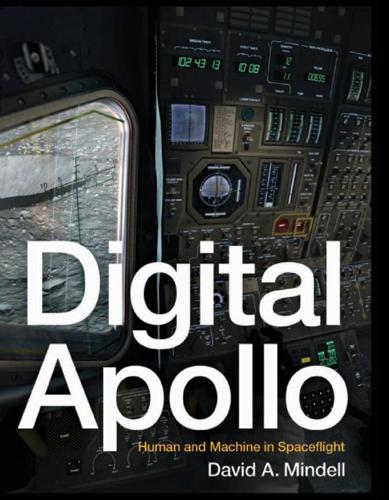
Digital Apollo: Human and Machine in Spaceflight
by
David A. Mindell
Published 3 Apr 2008
Christmas Eve mission and, 178 computers and, 104–106, 123–143 (see also Computers) Index Eagle landing and, 1–4, 7–8, 217–232 human factors and, 217–227 lack of accuracy and, 235 Medal of Freedom and, 232 congressional support of, 96 pilots’ reasons for manual control and, 259 cost of, 5, 106, 109, 143, 251 pitch over and, 220–221 deaths and, 173 powered descent and, 217–220 decision points and, 103 scientist resignations and, 257 early missions and, 174–177 firmware and, 154–157 simulators and, 217, 220 Apollo 12, 261 G&N System Panel and, 148–149, 160 accuracy and, 235–237 Gemini and, 86 Conrad and, 236–243 guidance systems and, 102–114, 174–180, DELTAH and, 237 243 goal of, 235–236 gyro culture and, 96–97 improvements on, 236 human factors and, 14–15, 160–166 (see also landing point designator (LPD) and, 237–238 Human factors) Instrumentation Laboratory and, 96, 105–121 lunar module (LM) of, 236–237 Noun 69 and, 236–237, 242–243 (see also Instrumentation Laboratory) pilots’ reasons for manual control and, 259 J-missions and, 249–250 pitch over and, 238 Kennedy and, 5–7, 12, 61, 91, 95, 104–105, powered descent initiation (PDI) and, 237 107, 111, 134, 251, 270 procedural changes in, 236–237 landings and, 181–215 reaction control system (RCS) and, 237–238 management conflicts and, 133–137 simulators and, 238 optics issues and, 114–119 Polaris and, 104–105, 110 velocity indicator and, 241–242 Apollo 13, 9, 186, 243 project management and, 169–174 Apollo 13 (film), 9 project-oriented histories of, 9–10 Apollo 14, 233 safety requirements and, 134–135 backup systems and, 248–249 simulators and, 2–3, 51, 54 (see also hardware failure and, 243–248 Simulators) pilot skills and, 248–249 social effects of, 8–10 pilots’ reasons for manual control and, 260 software and, 145–180 (see also Software) sole-source contract and, 107–108 pitch over and, 251 powered descent initiative (PDI) and, 245– Apollo 1, 173 Apollo 4, 174–175 Apollo 5, 175–176, 233 Apollo 6, 176 247 Apollo 15, 250 pilots’ reasons for manual control and, 260 pitch over and, 251–255 Apollo 7, 176–177 Apollo 16, 250–251, 255, 260 Apollo 8, 177–180 Apollo 17, 251 Apollo 10, 190, 217, 256 Apollo 11, 9–10, 251, 261 computer alarms and, 221–227 descent orbit insertion (DOI) and, 217–218 pilots’ reasons for manual control and, 260 pitch over and, 258 scientist-astronauts and, 256–257 Apollo 18, 251 Index Armstrong, Neil, 1–3, 213, 241–242, 259 airmen school and, 29, 31 Apollo 11 and, 217–232 337 information flows and, 162–163 Instrumentation Laboratory courses and, 158–159 confusion of, 226 landings and, 181–215 (see also Landings) digital computers and, 87 literature by, 9 Eagle landing and, 217–232 lunar module (LM) design and, 184–186 Gemini and, 85 manual reentry and, 160 gimbal reliability and, 120 masculinity and, 13–14 instrumentation and, 35, 181, 295n53 Johnsville tests and, 70–72 Mercury and, 73–83 moonwalks and, 83, 268–269 Lunar Landing Training Vehicle (LLTV) and, pilot transitions and, 161–166 (see also Pilots) 214 replacement of, 158 Medal of Freedom and, 232 rockets and, 65–66 pilot role and, 80 scientist-astronauts and, 256–257 Society of Experimental Test Pilots (SETP) user errors and, 160 and, 224, 226 women and, 13 X-15 and, 49, 58–59, 61 Army Ballistic Missile Agency, 66 Astronomical Guidance course, 101 AT&T, 37 Artificial horizons, 24 Atlas rocket, 18, 72–77 AS-202, 172 Atomic frequency standards, 138 AS-204, 171 Attitude, 47–48, 77 AS-501, 174–175 Adams’s death and, 59–61 ASPO, 134–135, 139 eight ball and, 159 Astronautical Guidance (Battin), 100–101 landing point designator and, 204–206 Astronauts active role of, 65 pitch over and, 251–255 Automation, 6, 12 age of systems and, 38–41 adaptive control systems and, 57–61 automation and, 158–166 airliners and, 267 as calibrators, 105 Apollo and, 92, 94, 105–109, 119–121, 139– computers and, 66, 160–166 142, 177–180, 243, 258 constraints for, 159–160 astronaut input and, 158–166 control and, 65–66 booster rockets and, 72 dangerous actions and, 159–160 deaths of, 173 computers and, 123–143 (see also Computers) Eagle landing and, 221–227 deployable optics and, 117 future of, 263–271 digital autopilot and, 139–142 Gemini and, 86–88 displays for, 165–169 human factors and, 4–8 (see also Human Eagle landing and, 1–4, 217–232 factors) Explorers Club and, 271 landings and, 181–215 (see also Landings) future of, 263–271 lunar module (LM) and, 193–197, 199–201 Gemini and, 83–88 ‘‘go to moon’’ interface and, 160–161 Mercury and, 73–83 pilots and, 17–21, 26, 43, 66–69, 73–83, human interface and, 4–8, 160–166 (see also Human factors) 139–142, 259–260 Soviet space program and, 88–90, 93–94 338 Automation (cont.) stability augmentation system (SAS) and, 55– 57, 60 systems engineering and, 36–41 Unmanned Aerial Vehicles (UAVs) and, 267 Aviation Index Bennett, Floyd, 241, 251, 300n47 computer alarms and, 225–226 Exceptional Service Medal and, 240 landing design and, 187–188, 192, 207 technical project summation of, 242–243 Bikle, Paul, 90 airmen vs. chauffeur school and, 21–23 Black boxes, 34–36, 39, 54, 57, 135 control and, 17–22 Blackburn, Al, 35, 39–40, 68 faster-and-higher goal and, 44 High Speed Flight Station and, 43–44 Black Friday, 171 Blade Runner (film), 13 Kitty Hawk and, 44 Blair, Charles, 40–41 National Advisory Committee on Aeronautics Blair-Smith, Hugh, 126, 149 (NACA) and, 6, 26–28 Blind flying, 24–26, 53–54 pilot’s role and, 17–21 (see also Pilots) Bode, Henrik, 33 skill and, 22–23 Boeing, 92, 267 stability and, 17–22 Bomarc missile, 18, 61 Aviation Week and Space Technology, 179, 267 Bonestell, Chesley, 111 Borman, Frank, 84, 169, 179 B-2 bomber, 266–267 Boston Globe, 248 B-17 bomber, 75 Boston Herald, 179 B-52 bomber, 47–48, 50, 54, 63 Bowditch, Philip, 114 Bales, Steven, 3, 222 Bronson, Charles, 62 Ballistic flight paths, 44 Brown, Alexander, 101 Barnstormers, 10, 20 BURNBABY, 218 Basic (Apollo computer language), 149 BASIC (Dartmouth computer language), 149 Bush, Vannevar, 98 Butler, Rhett, 28 Bassett, Preston, 43 Battin, Richard, 104, 127, 170, 194 Cape Canaveral, 134 Apollo 8 and, 178 Capsule Communicator (CAPCOM), 218, 222 computer errors and, 232 Carpenter, Scott, 81, 121 decision points and, 103 Centrifuge tests, 70–72 lunar mission and, 102–103 Century series jets, 32–33 orbital transfers and, 101–102 project management and, 170 Cernan, Gene, 251, 256–260 Cessnas, 267 Q-guidance technique and, 100 Chance-Vought, 30 recursive estimation of, 102–103 Charles Stark Draper Laboratories, 96–97 software and, 145–146, 151, 158 Chauffeur school, 21–23 Bean, Alan, 236–237, 240 Becker, John, 44–45 Apollo and, 160–161 X-15 and, 46–49 Bell Aerosystems, 210–211 Cheatham, Donald, 186–187, 204 Bellcomm, 135 Bellman, Donald, 210 Cherry, George, 189 Chilton, Robert, 264 Bell Telephone Laboratories, 37, 263 Apollo computer and, 128 Index guidance systems and, 96, 104–107 pilot role and, 75–77, 91–93 339 analog, 52–54, 57–58 Apollo 4 and, 174–175 Cockpit, The (magazine), 31 Apollo 5 and, 175 Cockpits, 24–29 Apollo 7 and, 177 Cohen, Aaron, 88, 112–113, 136–137, 142 Apollo 11 and, 221–227 Colliers magazine, 111 Apollo 14 and, 243–249 Collier Trophy, 61 astronaut’s view of, 66, 158–166 Collins, Michael, 1, 10, 265 B-2 stealth bomber and, 266–267 Columbia and, 217–218 guidance systems and, 116, 121 Medal of Freedom and, 232 Block I AGC, 123–136, 143, 172 Block II AGC, 136–143, 149, 154, 171, 175– 176 pilot role and, 82, 87, 93 core logic and, 125–126 simulators and, 209 crashes and, 123–124 symbolism and, 11 digital, 62, 87, 139–142 COLOSSUS, 151 displays and, 152, 165–169 Columbia space shuttle, 49, 217–218, 264–265 Eagle landing and, 1–4, 6, 221–232 Command and service module (CSM), 1, 33, 135, 146 electrical noise and, 2–3 embedded assumptions of, 13–14 AGC interface and, 168 ENIAC, 98 Apollo 12 and, 236–237 firmware and, 154–157 COLOSSUS and, 151 FORTRAN and, 99 Columbia and, 217–218 future of, 263–271 digital autopilot and, 139–142 G&N System Panel and, 148–149 docking and, 186, 192–193 Gemini and, 87–88 future of, 265–266 gimbal reliability and, 120–121 general-purpose, 123 ‘‘go to moon’’ interface and, 160–161 guidance systems operation plan (GSOP) for, guidance systems and, 104–106, 114, 123– 151–152 lunar module (LM) and, 186, 192–193 P40 program and, 150 142 human-machine relationship and, 4–8 (see also Human factors) radar and, 191 humidity effects and, 137–138 simulators and, 208–209 IBM 360, 148 software for, 146 Communications, 2, 15, 77 in-flight repair and, 128–130, 137–138, 159 instrument flying and, 25 Eagle and, 221–227 integrated circuits (ICs) and, 125–127 jamming and, 97, 104, 138 keyboards and, 152, 160–161, 165–169 landings and, 190–191, 221–227 landing integration and, 191 teleprinter and, 108–109 Laning and, 99–102 Compasses, 24 MAC project and, 148 Computers, 15 mainframe, 148 AGC, 126–128, 133, 137, 143 (see also AGC [Apollo guidance computer]) Alonso and, 100, 102 Mars probe and, 99–101, 154 mean time between failure (MTBF) of, 130, 133 340 Computers (cont.) memory issues and, 152, 154, 171–172 Index astronauts and, 65–66 backup systems and, 248–249 MicroLogic-based, 125–126 black boxes and, 54 mini, 123 blind flying and, 24 Mod 3C, 124–126 booster rockets and, 71–72 mundane work and, 14 centrifuge tests and, 70–72 NASA choice of, 5–6 chauffeur school and, 21–23 night-watchman circuit and, 124 cockpit design and, 24–29 onboard, 88 pilots and, 1–7, 19–21, 107, 161–166 damping and, 58–61 dangerous actions and, 159–160 Polaris and, 98–99, 125–127 digital autopilot and, 139–142 programmable, 123 display and keyboard (DSKY) unit and, 165– RAM and, 124–125 169 reliability of, 123–143 early Apollo missions and, 174–180 removable modules and, 129 feedback systems and, 33 ROM and, 124–125 first rendezvous in space and, 84–85 simulation development and, 51–54 software and, 129–131 (see also Software) fly-by-wire and, 79, 81, 140, 266 flying qualities and, 26–28 Soviets and, 90 G&N System Panel and, 148–149, 160, 168– space sextant and, 114–115 169 stability and, 19–21 gain and, 51 symbolism of, 12–13 Gemini and, 83–88 systems engineering and, 36–41, 133–137 Gilruth and, 27–28 time allocation and, 149–150 ‘‘go to moon’’ interface and, 160–161 transistors and, 125–130 user errors and, 160 ground, 62, 108–109, 138 (see also Ground control) vacuum tubes and, 130 instrument flying and, 24–25 (see also variable processing speed and, 106 Guidance systems) Whirlwind, 99, 124 Johnsville tests and, 70–73 workload and, 3 landings and, 181–215, 182–186 (see also Configuration control boards, 152 Landings) Conquest of the Moon (von Braun), 67–69 manual maneuvering and, 84–86 Conrad, Pete, 259 computers and, 140, 158 Mercury and, 74, 77–81 new technologies and, 267–268 landings and, 181, 214, 236–243 pilot induced oscillation and, 50–51 Lunar Landing Training Vehicle (LLTV) and, primary navigation and guidance system 214 velocity indicator and, 241–242 Control, 17–18 (PNGS) and, 191 reentry, 55–57 rudder pedals and, 79 Adams’s death and, 59–61 simulation and, 2–3, 32, 51–54 adaptive, 57–61, 77 age of systems and, 36–41 software and, 147 (see also Software) Space Task Group (STG) and, 74–77 airmen school and, 21–23 stability and, 19–21 (see also Stability) Index supersonic flight and, 32–36, 44–45 three-axis stick and, 79 X-15 and, 48–51, 54–61 yaw dampers and, 35 341 Eagle and, 223, 229–231 human factors and, 165–169 landings and, 191, 196–197, 204 Do Androids Dream of Electric Sheep?
…
The Apollo Computer 7 Programs and People 8 Designing a Landing 9 ‘‘Pregnant with alarm’’: Apollo 11 43 65 10 Five More Hands On 123 145 181 217 235 11 Human, Machine, and the Future of Spaceflight Notes 273 Glossary 305 Bibliography 307 Index 335 About the Cover Image 361 263 95 Preface and Acknowledgments On June 14, 1966, a robotic spacecraft had just landed on the moon and begun transmitting images to NASA. Project Gemini was drawing to a close, Apollo hardware was beginning to emerge from factories, and Apollo software was experiencing a crisis. And on that day I was born. I do not remember the first lunar landing of Apollo 11 or the drama of Apollo 13, but I do remember watching the later launches and landings on television. In that sense, I am among the first of a generation—those for whom lunar landings have always been a fait accompli—for whom the twentieth century’s greatest technological spectacle was an accomplishment rather than a dream.
…
Of the twelve men who walked on the moon, at least eight have written, or have had ghostwritten, some kind of memoir, and numerous other Apollo crew members have chimed in as well.8 Lately the ground controllers have gotten into the act, with similar, though delayed, levels of public interest and attention.9 One account used interviews with engineers to tell the story of the technical people behind the scenes.10 A few of Apollo’s engineers have added their own stories as well.11 Numerous other popular accounts cover the project from a variety of angles; one was even made into a TV miniseries, following on the successful feature film Apollo 13.12 With shelves straining from all this Apollo material, what could possibly be left to say? To begin with, histories of the Apollo program are nearly all project oriented— they begin at Apollo’s beginning and end at its end. Other than personal background in memoirs, little is said about Apollo’s connection to larger currents in the history of twentieth-century technology.
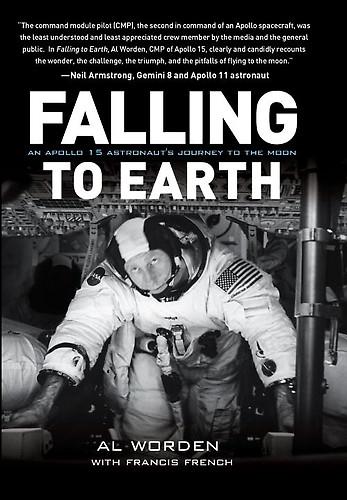
Falling to Earth
by
Al Worden
Published 26 Jul 2011
We were really hitting our stride and showing NASA’s full potential when it came to lunar exploration. After the dangers of Apollo 13, there would be one more of the simpler lunar landing missions: Apollo 14 would carry out the mission Apollo 13 failed to complete. Then we would take Apollo way beyond its original intentions. It was a strange irony, however. Right as we grew in confidence and potential, budget cuts were chopping the program out from underneath us. Our crew felt ready to take on the extra work of an enhanced mission. Not only did we have extra time to train because of the delay after Apollo 13, but we had already been training together for several years.
…
Not long after the fire, I was assigned back to Downey to resume work on the Block II spacecraft. This time, my job was to improve everything we could, based on the lessons of the fire. Jack Swigert, who would later fly on the Apollo 13 mission, joined me in this important duty. Because of his work improving the command module, Jack probably saved his own life years later when Apollo 13’s service module failed and he helped to bring the crippled spacecraft home. A lifelong bachelor, Jack had a party at his house every weekend and dated every woman in sight. He was a real skirt chaser and a playboy. He spent a lot of time in Miami, where Eastern Airlines had a flight attendant school.
…
But I was amused by the buzz in the papers and magazines, which appeared to be more excited about the single astronaut and his “spacey” apartment than I was. If I needed a reminder of the dangers of my job—and I didn’t—one came right after our formal announcement as the Apollo 15 prime crew. Just a month later, in April of 1970, Apollo 13 launched. It was the third manned lunar landing. That was the plan anyway. I had my own mission to train for now and wasn’t involved at all in Apollo 13. I was sitting on my spacey sofa in my apartment watching TV two days after the launch when Jules Bergman, the ABC channel’s space commentator, interrupted the show with a news flash. I listened to his hurried report with alarm.

Think Like a Rocket Scientist: Simple Strategies You Can Use to Make Giant Leaps in Work and Life
by
Ozan Varol
Published 13 Apr 2020
He continued: “I had practiced it and trained for it so many times, I almost dared her, I almost dared her to quit on me.” After repeated practice, the astronaut and the spacecraft had fused into one. “Every breath she breathed,” Cernan recalled, “I breathed with her.”30 When the oxygen tank exploded on the Apollo 13 mission—literally taking the astronauts’ breath away—their training kicked in. The movie Apollo 13 displays a chaotic environment on the spacecraft and in mission control, with rocket scientists and astronauts scrambling to improvise solutions. Because the service module was damaged from the explosion, they had to figure out how to use the lunar module—intended only to shuttle two astronauts to the lunar surface—as a lifeboat for returning all three astronauts back to Earth.
…
Tens of millions break out in laughter as Leslie dumps Leonard because he prefers string theory over loop quantum gravity. For three months, more than three million Americans picked Cosmos over The Bachelor each Sunday night, choosing dark matter and black holes over the drama of a rose ceremony.13 Movies about rocket science—from Apollo 13 to The Martian, from Interstellar to Hidden Figures—consistently top box-office charts and collect countless golden statues. Although we glamorize rocket scientists, there’s an enormous mismatch between what they have figured out and what the rest of the world does. Critical thinking and creativity don’t come naturally to us.
…
A High-Stakes Game of Peekaboo Imagine sitting on top of a rocket, with the explosive power of a small nuclear bomb, not knowing whether it will work. Astronauts call that Tuesday. The Atlas rocket, which launched the Mercury astronauts into space, was feared as too flimsy. “The Atlas boosters were blowing up every other day down at Cape Canaveral,” recalls former astronaut Jim Lovell, who would later become the commander of the ill-fated Apollo 13 mission. “It looked like a very quick way to have a short career. So I took the job.”64 Speaking of the Atlas rocket, Wernher von Braun—a former Nazi who later became a chief architect of the US space program—remarked, “John Glenn is going to ride on that contraption? He should be getting a medal just for sitting on top of it before he takes off.”65 We knew so little about the impact of spaceflight on the human condition that Glenn was instructed to read an eye chart every twenty minutes for fear that weightlessness would distort his vision.
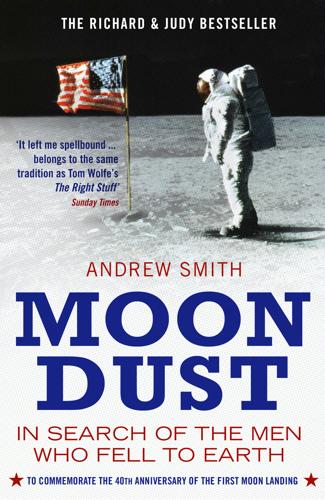
Moondust: In Search of the Men Who Fell to Earth
by
Andrew Smith
Published 3 Apr 2006
“Oh, nooo,” he assures me; “they just came round to get the feel of what an astronaut is really like.” So we’ll take that as a “yes,” especially once we know that Ron Howard and Bill Paxton also came over when they were making Apollo 13, and that at the film’s Hollywood premiere a stream of people came and told Bean how puzzled they’d been to find that Paxton’s portrayal of the Apollo 13 Lunar Module pilot, Fred Haise, reminded them so much of him. I watch it again and they’re absolutely right. The museum district comes on like a pleasant afterthought to the city, manicured green and – with no reason for anyone to go there other than culture – quiet.
…
Some media people claimed that Pete Conrad was to blame, had committed the one sin for which the emerging postmodern mind held no forgiveness – he had made the business of landing Apollo 12 look easy, undramatic. Lunar-hoax enthusiasts will try to convince you that this is why NASA changed the script for the April launch of Apollo 13, naming the LM Aquarius after Fifth Dimension’s hit single from the musical Hair, and writing in a crisis which blew the landing and would have – even should have – killed the crew but for a heroic show of ingenuity and courage. Apollo 13 is worth looking at because it’s instructive in a number of ways. The mission began with a successful launch and acceleration out of Earth orbit, but as the crew and their two spaceships drifted toward the Moon with just 45,000 miles to go, they heard an explosion.
…
Throughout, NASA officials told the crew’s wives that the chances of a safe return were 10 per cent, and this was considered to be looking on the bright side. There are three things to note about this episode: first, that the now-received perception of the Apollo 13 save as “NASA’s finest hour” dates no further back than Ron Howard’s eponymous 1995 film of the mission (when coscriptwriter Al Reinert went looking for Jim Lovell in the late 1980s, he found him running a tugboat company, the forgotten commander of a “failed” mission … it was Reinert who wrote the “finest hour” line); second, that while crowds flocked to see the Apollo 13 movie, the space shuttle Atlantis was making real-time history overhead by docking with the Russian Mir space station, while hardly anyone bothered to notice; third, that the team which designed the makeshift air filter was led by none other than John Watts Young.
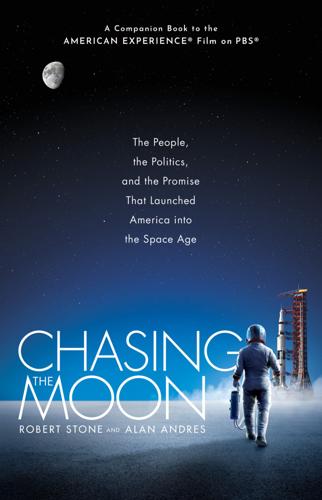
Chasing the Moon: The People, the Politics, and the Promise That Launched America Into the Space Age
by
Robert Stone
and
Alan Andres
Published 3 Jun 2019
Along with the rest of the world, President Nixon was caught up in the drama as Houston’s Mission Control toiled over four suspenseful days in April 1970, attempting to bring the crew of Apollo 13 back to Earth safely after the command-and-service module was crippled by the explosion of an oxygen tank. Despite the mission nearly ending in disaster, Apollo 13’s safe return was celebrated as an astounding triumph of human ingenuity, bringing deserved attention to the resourceful teams of NASA flight controllers and the engineers in Mission Control. But it was a story that neither NASA nor the country wanted to dwell upon, and Apollo 13 was conventionally regarded as “the flight that failed” for the next quarter century—until it was retold for a new generation in commander Jim Lovell’s bestselling memoir, which subsequently served as the basis of a popular Hollywood film.
…
In the week before the launch of Apollo 11, NASA received a letter proposing that some of Ley’s ashes be among the items left on the Moon. While this request was never fulfilled, a crater on the far side of the Moon was named in his honor. Following the Apollo 13 mission, JAMES LOVELL retired from the Navy and from NASA. Not long after, Hollywood attempted to tell the story of Apollo 13 in the form of a melodramatic TV movie focusing on the lives of fictitious characters at Mission Control, who, when not putting in long hours to bring the astronauts home, also have to deal with a bad marriage, a child-custody dispute, a dying father, and a dangerous heart condition.
…
But it was a story that neither NASA nor the country wanted to dwell upon, and Apollo 13 was conventionally regarded as “the flight that failed” for the next quarter century—until it was retold for a new generation in commander Jim Lovell’s bestselling memoir, which subsequently served as the basis of a popular Hollywood film. For President Nixon, Apollo 13 was a traumatic turning point in his relationship with the space program, one that had been ironically foreshadowed nearly four months earlier when he invited the crew of the second Apollo moon-landing mission to stay overnight at the White House. During the visit, Nixon entertained the Apollo 12 crew and their wives in the White House screening room with a newly released Hollywood motion picture.
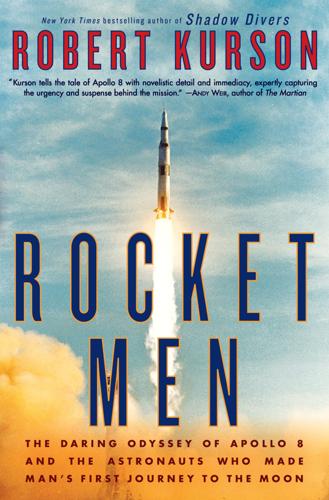
Rocket Men: The Daring Odyssey of Apollo 8 and the Astronauts Who Made Man's First Journey to the Moon
by
Robert Kurson
Published 2 Apr 2018
The world prayed for the astronauts as they sped home in their freezing spacecraft, while Lovell used the experience he gained from restoring Apollo 8’s disrupted orientation during its own return to nurse the disabled Apollo 13 back to Earth. No one knew whether the command module’s heat shield had been too severely damaged by the explosion to survive reentry. In the end, Apollo 13 made it back safely, one of the great rescues in history. No one at NASA, least of all Lovell, failed to recognize that the crew had been saved by the lunar module’s secondary role as a lifeboat. It was this lack of a lifeboat that had haunted so many who’d feared flying Apollo 8 to the Moon. If the explosion aboard Apollo 13 had occurred during Apollo 8, Borman, Lovell, and Anders would never have come home.
…
Anders, who believed he’d never be given the chance to walk on the Moon, accepted a job at the National Aeronautics and Space Council, in Washington, D.C., a body chaired by the vice president of the United States and devoted to establishing the country’s space policy. (Anders took the job on one condition: that he retain his astronaut status in case a miracle occurred and Deke Slayton gave him a walk on the Moon.) Lovell had been advanced in the cycle to command Apollo 13. For his part, Borman had become a special adviser to Eastern Airlines. Following a successful landing mission by Apollo 12 in November 1969, Apollo 13 launched, with Lovell as its commander, on April 11, 1970. That flight, however, never made it to the lunar surface. Near the Moon, an oxygen tank exploded, severely damaging the service module and disabling the command module’s power and oxygen supply.
…
If the explosion aboard Apollo 13 had occurred during Apollo 8, Borman, Lovell, and Anders would never have come home. Five days after Apollo 13’s return, the first Earth Day observance was held, a series of demonstrations, celebrations, and rallies to protect the environment. Apollo 8’s Earthrise photo was used as the movement’s symbol. Some suggested it was Apollo 8 itself—man’s first look at his home planet, and at its thin, fragile atmosphere—that launched the environmental movement. NASA made four more manned trips to the Moon after Apollo 13, all of which successfully landed crews on the surface. Collectively, the astronauts on the Apollo missions returned almost 842 pounds of lunar soil and rock, samples that continue to form the bedrock upon which our understanding of the solar system’s origins is based.

Apollo 8: The Thrilling Story of the First Mission to the Moon
by
Jeffrey Kluger
Published 15 May 2017
Waiting six missions for his next real shot seemed like a stretch, but NASA was launching Apollos pretty quickly, and Lovell might get to go back to the moon in as little as eighteen months. As it turned out, he got his chance even earlier. Alan Shepard had been named commander of Apollo 13, but an inner ear problem had kept him grounded since his brief suborbital flight in 1961. Recently he’d had the condition surgically corrected, and he had been returned to flight status. After so long a layoff, however, he needed more time to train than he and NASA had originally believed he would. Consequently, Lovell was asked if he would mind swapping missions, taking his crew up on Apollo 13 and letting Shepard and his team have 14. Lovell didn’t mind a bit, feeling that if you had the chance, it was always better to fly sooner.
…
Vietnam War Virginia Polytechnic Institute (VPI) vision tests von Braun, Wernher von Fremd, Charles Voting Rights Act (1965) Voyage to the Moon (Offenbach) War Department Wasp, USS (aircraft carrier) Weather Bureau Webb, James Wendt, Guenter West Point White, Bonnie Lynn White, Edward Higgins Apollo 1 explosion and death of Gemini 4 spacewalk and Gemini 7 and White, Edwin (son) White, Pat White Crater Wilson, Harold Windler, Milt World War I World War II Wright, Orville Wright, Wilbur Wright-Patterson Air Force Base Yardley, John Yeager, Chuck Yorktown, USS (aircraft carrier) Young, John zero g Zond 5 Zond 6 zoom flight Also by Jeffrey Kluger NONFICTION Apollo 13 (coauthored with Jim Lovell) Moon Hunters Splendid Solution: Jonas Salk and the Conquest of Polio Simplexity The Sibling Effect The Narcissist Next Door FICTION Nacky Patcher and the Curse of the Dry-Land Boats Freedom Stone ABOUT THE AUTHOR JEFFREY KLUGER is the author of nine books, including Apollo 13 (originally published as Lost Moon) and The Sibling Effect. As a science editor and senior writer for Time for more than two decades, he has written more than forty cover stories for the magazine.
…
That was not the kind of thing that would significantly affect the job the astronauts did, but it could potentially turn perfect crew cohesion into something subtly less than perfect. Whigs may dine with Tories, Red Sox may drink with Yankees, but really, a man prefers his own. Still, Lovell understood that the new assignment had its compensations. Flying sooner was always better than flying later, and as long as the Apollo program ran deep enough into the teens—Apollo 13 or 14 or 15—Lovell should get his shot at the moon anyway. And he certainly wouldn’t mind flying with Borman again, even if he did chafe at being back in a subordinate seat after having been in command on Gemini 12. As for Anders, well, Lovell got a kick out of the rookie. So Lovell resolved to make the most of Apollo 9, just as he had made the most of Gemini 7.
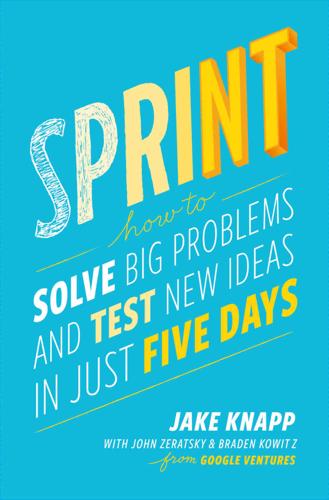
Sprint: How to Solve Big Problems and Test New Ideas in Just Five Days
by
Jake Knapp
,
John Zeratsky
and
Braden Kowitz
Published 8 Mar 2016
In the morning, you’ll start at the end and agree to a long-term goal. Next, you’ll make a map of the challenge. In the afternoon, you’ll ask the experts at your company to share what they know. Finally, you’ll pick a target: an ambitious but manageable piece of the problem that you can solve in one week. 4 Start at the End Everybody knows the story of Apollo 13, but just in case, it goes like this: Astronauts head to moon, explosion on spacecraft, nail-biting return to earth. In Ron Howard’s 1995 movie version, there’s a scene where the team at Mission Control gathers around a blackboard to form a plan. Gene Kranz, the flight director, wears a white vest, a flattop haircut, and a grim expression.
…
The clock is ticking, the team is amped up, and solutions start popping into everyone’s mind. But if you don’t first slow down, share what you know, and prioritize, you could end up wasting time and effort on the wrong part of the problem. If Mission Control had worried about the air filter first, they would have missed their window to fix the trajectory, and the Apollo 13 spaceship might have careened off toward Pluto.I Instead, NASA got organized and sorted their priorities before they started on solutions. That’s smart. And that’s the same way your team will start your sprint. In fact (with the luxury of unlimited oxygen) you’ll devote the entire first day of your sprint to planning.
…
We were all gathered around a whiteboard, where the team had drawn and redrawn (and re-redrawn) the map. The top How Might We notes were stuck beside corresponding steps in the process. To an outsider, it might have looked like a mess of arrows, text, and sticky notes. To our team, it was as clear as Gene Kranz’s diagram of the Apollo 13 flight path. At last, it was time to make the final decision about where to focus the sprint. Amy needed to choose one target customer and one target moment on the map. Those of us from GV were bracing for a long discussion. But when Jake asked Amy if she was ready, she nodded and grabbed a marker.
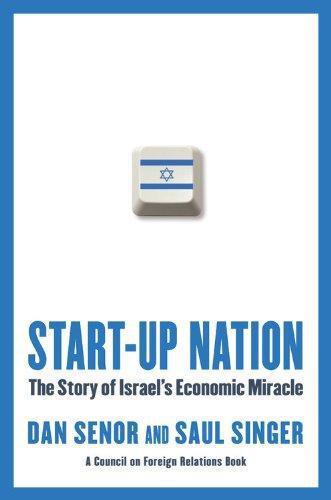
Start-Up Nation: The Story of Israel's Economic Miracle
by
Dan Senor
and
Saul Singer
Published 3 Nov 2009
When Riesenfeld first read the HBS case, in 2008, the issues it presented were immediately familiar to the ex-commando. But why had Riesenfeld mentioned the case to us? What was the connection to Israel, or to its innovation economy? The Apollo 13 crisis occurred on April 15, 1970, when the spaceship had traveled three-fourths of the way to the moon. It was less than a year after Neil Armstrong and Buzz Aldrin had stepped off Apollo 11. NASA was riding high. But when Apollo 13 was two days into its mission, traveling two thousand miles per hour, one of its primary oxygen tanks exploded. This led astronaut John Swigert to utter what has by now become a famous line: “Houston, we’ve had a problem.”
…
Roberto, Amy C. Edmondson, and Richard M. J. Bohmer, “Columbia’s Final Mission,” Harvard Business School Case Study, 2006; Charles Murray and Catherine Bly Cox, Apollo (Birkittsville, Md.: South Mountain Books, 2004); Jim Lovell and Jeffrey Kluger, Apollo 13 (New York: Mariner Books, 2006); and Gene Kranz, Failure Is Not an Option: Mission Control from Mercury to Apollo 13 and Beyond (New York: Berkley, 2009). 10. Michael Useem, The Leadership Moment: Nine True Stories of Triumph and Disaster and Their Lessons for Us All (New York: Three Rivers, 1998), p. 81. 11. Roberta Wohlstetter quoted in Michael A. Roberto, Richard M.
…
They presented their proposal at the Harvard business plan competition and beat out the seventy other teams for first place.8 After graduating from HBS at the top of his class, Riesenfeld turned down an attractive offer from Google in order to start Tel Aviv–based Eyeview. Earlier, Riesenfeld had made it through one of the most selective recruitment and training programs in the Israeli army. While he was at HBS, Riesenfeld studied a case that compared the lessons of the Apollo 13 and Columbia space shuttle crises.9 The 2003 Columbia mission has a special resonance for Israelis. One of its crew members—air force colonel Ilan Ramon, the first Israeli astronaut—was killed when Columbia disintegrated. But Ramon had been an Israeli hero long before. He was a pilot in the daring 1981 air force mission that destroyed Iraq’s nuclear facility, Osirak.

In the Shadow of the Moon: A Challenging Journey to Tranquility, 1965-1969
by
Francis French
,
Colin Burgess
and
Walter Cunningham
Published 1 Jun 2010
He had been chief of the astronaut office during his exile from flight status, and had the power and close connections with Slayton to be able to jump right back to the head of the line. The next flight to which a crew had not yet been assigned was Apollo 13, and Slayton decided to name Shepard as mission commander. As Cooper told it, Shepard and Slayton held a meeting with him, in which he was told he would also be training for Apollo 13—but as backup commander. He was devastated: I felt that the higher-ups would really analyze everything carefully, with enough capability that whichever guy was selected might be the best guy for that particular flight.
…
Like Gerry Griffin, his fellow mcc flight controller Gene Kranz was also a witness to the pioneering days of manned spaceflight, right through the Apollo program and beyond. Kranz achieved considerable latter-day fame as the intensely focused and dedicated controller featured in the Ron Howard film Apollo 13, and later wrote a best-selling autobiography, Failure Is Not an Option. But there were other lessons along the way to that successful Apollo 13 rescue mission. As he told the authors, he was not in Mission Control that particular January evening in 1967, but he still felt “bloodied” by the Apollo 1 fire: I had tested all the night previously, and basically had about an eight-hour turnaround and was back on the console again at about 7:00 a.m. that day, just to give the next couple of teams a break.
…
When his work on Gemini 12 was over in late 1966, Cooper received yet another assignment—this time as backup commander for the Apollo 10 flight. Under the crew rotation system then in place, Cooper, Donn Eisele, and Ed Mitchell could reasonably expect to be subsequently assigned as the prime crew for Apollo 13. But when Cooper found out that Eisele had been placed on his crew, he began to suspect that something was seriously wrong. Eisele was going through a divorce, and it was common knowledge at nasa that he was unlikely to fly again. Following the Apollo 1 fire, nasa Administrator James Webb made a very telling remark during the 1967 Senate hearings on the tragedy.
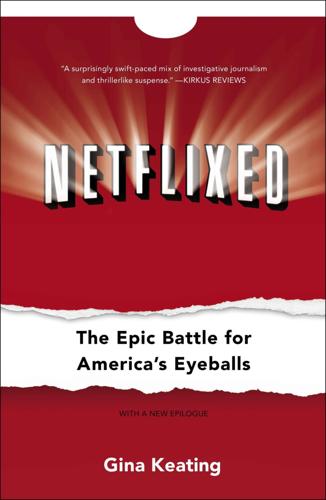
Netflixed: The Epic Battle for America's Eyeballs
by
Gina Keating
Published 10 Oct 2012
The fit, animated man who walked up to my outdoor table dressed in a fleece pullover and jeans showed every sign of enjoying a rather footloose life since leaving Netflix. He sat down, ordered eggs Benedict, and plunged into a tale that upended a lot of what I thought I knew—starting with the story of how Hastings’s late fee for Apollo 13 resulted in the founding of the company. “That’s a lot of crap,” Randolph told me. “It never happened.” He explained that the Apollo 13 story started as “a convenient fiction” to describe how Netflix’s rental model works and became confused with its origins, because people wanted “a rage against the machine–type story.” Six months and several conversations later I persuaded Randolph to show me where the true Netflix founding took place, which was on a quiet stretch of downtown Santa Cruz.
…
But the version above is closer to reality than the company’s official story—the one about how tech millionaire Reed Hastings had an epiphany for his next company after returning an overdue movie to his local video store, and later dreamed up its signature subscription model on a treadmill at his gym. “The genesis of Netflix came in 1997, when I got this late fee, about $40, for Apollo 13. I remember the fee, because I was embarrassed about it. That was back in the VHS days, and it got me thinking that there’s a big market out there,” Hastings, Netflix’s chairman and chief executive, told Fortune in 2009, one year before the magazine named him its Business Person of the Year. “I didn’t know about DVDs, and then a friend of mine told me they were coming.
…
I knew I would need good outside sources to solve a few mysteries about the company’s early days, because Netflix’s communications and marketing teams were excellent at staying on message with reporters and investors—and especially with consumers—on issues the company wished either to control or to avoid talking about. Some of the questions for which I could not get answers from Netflix included: What happened to Netflix’s other founder, Marc Randolph, and why is he never mentioned? Why was the Apollo 13 founding story initially set at a Blockbuster store in Santa Cruz, then changed in 2006 to a now defunct mom-and-pop video store in La Honda? Why did founding team member Mitch Lowe leave to start his DVD rental kiosk company Redbox, now one of Netflix’s main competitors, instead of launching it at Netflix?
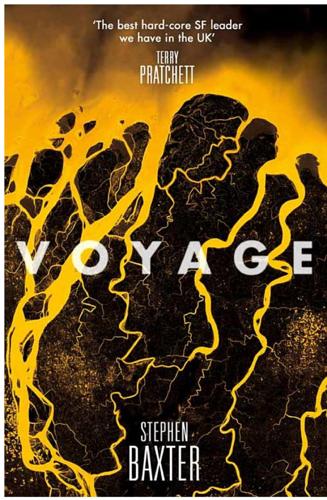
Voyage
by
Stephen Baxter
Published 23 May 2011
But the controllers looked pretty crumpled, with ties loosened or discarded, shirts creased, and the operations desks were strewn with coffee cups, manuals, and scribbled notes. He could see Joe Muldoon wandering about at the back of the MOCR. Nine months after his own lunar flight, Muldoon had just finished a six-hour stint as capcom to Jim Lovell and his Apollo 13 crew, but he showed no desire to leave; in fact, he knew that Muldoon was intending to head on over to Building 5, where other off-duty astronauts were running continual simulations of the improvised procedures the Apollo 13 crew would have to adopt to get home. Already seventeen hours had passed since 13 had started to fall apart; Michaels wondered how many of the controllers had gotten a minute’s sleep since.
…
After the raid was over, ground controllers would destroy all evidence of the diversion, shredding documents and reporting that the attack had taken place, as planned, inside South Vietnam. And not inside neutral Cambodia. And, as on previous flights, Gershon was going to have to file a false report. He glanced into the sky. Somewhere up there, Apollo 13 was heading for the Moon. Gershon found it hard to reconcile the terrific adventure going on in the sky, three guys hanging their hides out over the edge, with the mindless, lying bullshit of this war. After an hour the Spad started trembling — pogoing, vibrating longitudinally, so that he was juddered back and forth in his seat.
…
Michaels was an associate administrator with responsibility for manned spaceflight, reporting directly to Thomas Paine, NASA Administrator. It had broken Michaels’s heart when Paine had gone public back in February to announce the cuts to Skylab, even some terminations at NASA. “You know,” he mused, “maybe, if we can pull this off, this Apollo 13 thing, it will bring us back together, just a little. If we can remember how it feels to have worked like this, today, then maybe we’ll be able to achieve great things again…” Josephson had been avoiding his eyes; then he confronted Michaels a little more boldly. “Fred, I know you’re upset. But the wheels don’t stop turning.
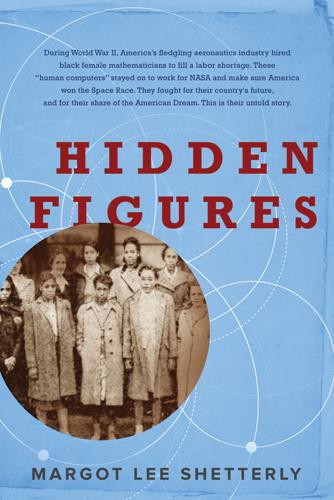
Hidden Figures
by
Margot Lee Shetterly
Published 11 Aug 2016
She considers her work on the lunar rendezvous, prescribing the precise time at which the lunar lander needed to leave the Moon’s surface in order to coincide and dock with the orbiting command service module, to be her greatest contribution to the space program. But another set of her calculations stood at the ready during the 1971 Apollo 13 crisis, when the electrical system of the spacecraft carrying astronauts Jim Lovell, Jack Swigert, and Fred Haise was crippled by an onboard explosion, making it impossible to run the guidance computer as programmed. An astronaut stranded hundreds of thousands of miles from Earth is like a mariner from a previous age, adrift in the most remote part of the ocean.
…
This was precisely the question Katherine and her colleague Al Hamer had asked in the late 1960s, during the most intense preparations for the first Moon landing. And in 1967, Johnson and Hamer coauthored the first of a series of reports describing a method for using visible stars to navigate a course without a guidance computer and ensure the space vehicle’s safe return to Earth. This was the method that was available to the stranded astronauts aboard Apollo 13. Before the crisis was over, however, even Katherine and Al’s backup calculations would require a backup: from inside the spaceship, the glinting debris field from the damaged capsule was indistinguishable from the actual stars, making the method specified in Katherine’s report impossible to use.
…
The power of her story is such that many accounts incorrectly credit her with being the first black woman to work as a mathematician at NASA, or the only black woman to have held the job. She is often mistakenly reported as having been sent to the “all-male” Flight Research Division, a group that included four other female mathematicians, one of whom was also black. One account implied that her calculations singlehandedly saved the Apollo 13 mission. That even Katherine Johnson’s remarkable achievements can’t quite match some of the myths that have grown up around her is a sign of the strength of the vacuum caused by the long absence of African Americans from mainstream history. For too long, history has imposed a binary condition on its black citizens: either nameless or renowned, menial or exceptional, passive recipients of the forces of history or superheroes who acquire mythic status not just because of their deeds but because of their scarcity.
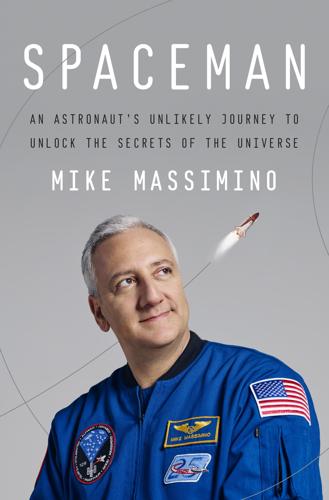
Spaceman: An Astronaut's Unlikely Journey to Unlock the Secrets of the Universe
by
Mike Massimino
Published 3 Oct 2016
The first thing I did was ask myself, Am I still alive? It took me a moment to answer. Yes, I’m still alive. We’d made it, safely. It took me a minute or two to get my bearings. Then, once I felt acclimated, it was time to go to work. I reached up and took my helmet off and—just like I’d watched Tom Hanks do in Apollo 13—I held it out and let it go and floated it in the air in front of me, weightless. Your first week as an astronaut is a lot like the first week at any other job. You go to meetings, fill out paperwork, find out what’s covered by the new health plan. In my first week, my astronaut classmates and I got lucky.
…
In the back of my mind I was thinking that if I did get picked we’d be able to come right back, which was nice to contemplate. The movers came and started packing us up, and I flew to Atlanta for a long weekend to race around and try to find us a place to live. Our whole lives were up in the air. Apollo 13 came out that summer, and since I was by myself in Atlanta, I went to see it. That was a mistake. It was the best space movie since The Right Stuff: the astronauts and their families having parties in Houston, the whole NASA team pulling together to save these guys and bring them home…it was everything I was leaving behind, and I had no idea if I’d ever make it back.
…
Other than flying in the T-38, one of my favorite parts of astronaut training was the enrichment lectures. Former astronauts and older NASA guys would come by and give talks about the space program. Chris Kraft, NASA’s first flight director, came in to speak with us. So did Gene Kranz, the flight director played by Ed Harris in Apollo 13. My favorite lecturer was Alan Bean, who flew on Apollo 12 and is one of the twelve guys who walked on the moon. After retiring from NASA, he became a painter. Alan’s lecture was called “The Art of Space Exploration.” He talked about the mistakes he’d made and how he learned to fix them. One lesson that took him a while to learn was that at a place like NASA you can only have an effect on certain things.
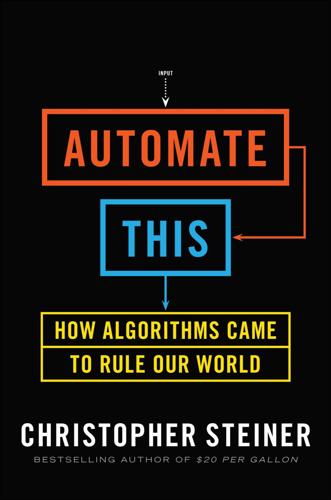
Automate This: How Algorithms Came to Rule Our World
by
Christopher Steiner
Published 29 Aug 2012
PICKING THE RIGHT PEOPLE: FROM LUCK TO A SCIENCE On April 11, 1970, three men sat in a 363-foot-tall Saturn V moon rocket filled with superchilled oxygen and hydrogen that, as it burned, would propel them up and out of the earth’s atmosphere. From there, they would again light their booster to leave earth’s orbit. This was Apollo 13. Destination: the moon. The next morning the men radioed mission control. As was the custom, the mission control man fed the astronauts the news of the day. This was his message, starting with a baseball score from Houston, where the astronauts and mission control spent most of their time: The Astros survived, 8 to 7. . . .
…
A good chunk of us, however, even astronauts, are unable to escape paralyzing fear; we recede, we do nothing, or we act irrationally when faced with the likely prospect of death. It’s difficult to predict how a person will react. Even harder to forecast is how well people will get along and function together when put into such isolated conditions. With Apollo 13, NASA got a little lucky. One of the crew members, Swigert, had only joined the mission a day before launch. He was a replacement for Ken Mattingly, who had been exposed to measles the previous week. The trio had little time to get used to working together before they were strapped into seats and blasted into outer space.
…
That’s one of the reasons why almost all of the early astronauts were plucked directly from the military, where the candidates had been exposed to combat, stress, and death. Peer and background checks on a candidate’s character under fire were paramount to the selection process. Even so, after the close call of Apollo 13, NASA wanted a better method, something that would be rigid, absolute, and accurate. So in 1971 the agency set out to create a comprehensive system of categorizing people to the point of knowing who would work well together and who was liable to explode if exposed to the wrong mix of pressure and people.
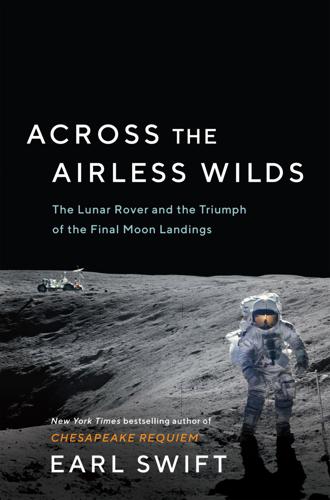
Across the Airless Wilds: The Lunar Rover and the Triumph of the Final Moon Landings
by
Earl Swift
Published 5 Jul 2021
A few months later, Apollo 12 set down on another tame expanse of lunar desert, but within sight of an unmanned probe sent there two years before—which Charles “Pete” Conrad and Alan Bean inspected in the course of hiking about 1.4 miles. They thereby established that a crew could land at a specific point, and cleared the way for more demanding, and interesting, destinations. Apollo 13 didn’t have the chance to follow through on that promise, but Apollo 14 did, pinpoint-landing in the highlands of Fra Mauro. Shepard’s and Mitchell’s dispiriting march to the edge of Cone, long though it was, never took them much beyond a half mile from base. Then, with Apollo 15, NASA applied all it had learned into putting its men and materiel to their best and highest use.
…
We faced a lot of unknown unknowns—things we didn’t know that we didn’t know. But I’d flown forty-five missions, and I was a pretty hard cookie. I wanted to see if we could turn it around.” 43 THE SHAKE-UP WENT UNNOTICED OUTSIDE HUNTSVILLE, OVERSHADOWED by a far larger NASA drama. On April 13, 1970, Apollo 13 was on its way to the third planned lunar landing when an oxygen tank in the spacecraft exploded. Crippled, running out of air, and all but powerless, the ship seemed doomed, and its crew with it. In the face of one life-threatening setback after another, NASA got the men home. Its on-the-fly solutions testified to the agency’s brains, poise, and creativity, but the emergency rekindled doubts in the public, press, and Congress about the wisdom of continuing moon flights.
…
And the last four, Apollos 17 through 20, would carry a rover. With Apollo 20’s cancellation, the first rover deployment had moved up to Apollo 16, and its moonwalkers, John Young and Charlie Duke, had monitored the LRV’s development with frequent visits to Huntsville and Santa Barbara. But on September 2, 1970, NASA’s shrinking budget, coupled with Apollo 13’s close call, spurred headquarters to further trim the lunar program. It canceled Apollos 15 and 19, leaving just four more moon flights. Apollo 14 would now be the last H flight. The surviving missions would be renumbered: Apollo 15, originally planned as a walking H mission, would now be the first J and carry the first rover.

Army of None: Autonomous Weapons and the Future of War
by
Paul Scharre
Published 23 Apr 2018
: Ibid. 151 Three Mile Island incident: This description is taken from Charles Perrow, Normal Accidents: Living with High-Risk Technologies (Princeton, NJ: Princeton University Press, 1999), 15–31; and United States Nuclear Regulatory Commission, “Backgrounder on the Three Mile Island Accident,” https://www.nrc.gov/reading-rm/doc-collections/fact-sheets/3mile-isle.html. 153 Apollo 13: For a very brief summary of the incident, see National Aeronautics and Space Administration, “Apollo 13,” https://www.nasa.gov/mission_pages/apollo/missions/apollo13.html. NASA’s full report on the Apollo 13 disaster can be found at National Aeronautics and Space Administration, “Report of the Apollo 13 Review Board,” June 15, 1970, http://nssdc.gsfc.nasa.gov/planetary/lunar/apollo_13_review_board.txt. See also Perrow, Normal Accidents, 271–281. 154 “failures . . . we hadn’t anticipated”: John Borrie, interview, April 12, 2016. 154 Challenger (1986) and Columbia (2003): On Challenger, see National Aeronautics and Space Administration, “Report of the Presidential Commission on the Space Shuttle Challenger Accident,” June 6, 1986, http://history.nasa.gov/rogersrep/51lcover.htm.
…
Viewed from the perspective of normal accident theory, the Patriot fratricides were not surprising—they were inevitable. THE INEVITABILITY OF ACCIDENTS The Apollo 13 and Three Mile Island incidents occurred in the 1970s, when engineers where still learning to manage complex, tightly coupled systems. Since then, both nuclear power and space travel have become safer and more reliable—even if they can never be made entirely safe. NASA has seen additional tragic accidents, including some that were not recoverable as Apollo 13 was. These include the loss of the space shuttles Challenger (1986) and Columbia (2003) and their crews. While these accidents had discrete causes that could be addressed in later designs (faulty O-rings and falling foam insulation, respectively), the impossibility of anticipating such specific failures in advance makes continued accidents inevitable.
…
The system is so complex that it is incomprehensible, or opaque, to users and even the system’s designers. This problem is exacerbated in situations in which humans cannot directly inspect the system, such as a nuclear reactor, but also exists in situations where humans are physically present. During the Apollo 13 disaster, it took seventeen minutes for the astronauts and NASA ground control to uncover the source of the instrument anomalies they were seeing, in spite of the fact that the astronauts were on board the craft and could “feel” how the spacecraft was performing. The astronauts heard a bang and felt a small jolt from the initial explosion in the oxygen tank and could tell that they had trouble controlling the attitude (orientation) of the craft.

Risk: A User's Guide
by
Stanley McChrystal
and
Anna Butrico
Published 4 Oct 2021
When the McLaren returned to the track, it was now behind the Ferrari. The red car was at the front of the pack. apollo 13 ■ As made famous by the critically acclaimed film Apollo 13, the badly damaged spaceship had a unique timing challenge in reentering Earth’s atmosphere. If the command module came in too shallow, it would bounce off the atmosphere (to likely never return), but if it came in at a too-steep angle, the astronauts would be killed by the fire and heat of reentry. Earth’s gravitational pull sped up this process: Apollo 13 accelerated as it approached Earth’s surface. The team had to make course corrections quickly.
…
See also FlyVA al-Qaeda, 23–24, 57–58, 115 9/11 attack of, 45–49 bombs US embassies, 137 Bush administration’s views on, 131–33 intel sharing and, 43 leader of, 43, 92, 204 US raids against, 1–3, 75–76, 152 al-Zarqawi, Abu Musab, 43, 92, 204 Alamo, 55–57, 285 Alcatel-Lucent, 184 Alexandria, Virginia, 186–87, 188 American Revolution, 52–53 American South, 58, 124–28, 200 Android, 182 Antioco, John, 139, 141–42, 144, 146 Apollo 13, 169 Apollo 13 (film), 169 Appetite for Self-Destruction (Knopper), 178 Apple, 178–80, 182 Ardern, Jacinda, 198 artificial intelligence (AI), 33, 61–63, 89, 94–95 Assess (the risk) ability to, 37 and after-action reviews, 283 and assumptions checks, 243 in banking, 31–32 and biases, 117, 123–24 failure to, 7, 9 leadership and, 202 Risk Immune System and, xix, xxi–xxii, 10–11, 170, 217, 221–22 war games and, 239 and your structure, 80, 83 Assessment, 132 and after-action reviews, 280–81 of combat readiness, 227–30 and diagnosing weaknesses, 230, 234–35 mature judgement needed for, 231–32 of narrative, 232–33 quantitative/qualitative metrics for, 228–33, 235 and red team exercises, 275–77 of Risk Immune System, 230–35 three main parts of, 230–33 athletes, xiii, 173–75, 222–25, 233, 258 Aunt Jemima, 62 Aurelius, Marcus, ix, xiv automated customer service, 93–95 reports, 85–86 systems, 88, 93–94, 98, 234, 238 processes, 98, 238 Ba‘ath Party, 128, 130–32 Balkans, 23 banking, 31–32, 79–83, 113–15, 193–96 Banking Act of 1933, 196 baseball players, 34, 159–60, 161, 171, 233 basketball, 222–23 Batista, Fulgencio, 102–3 Battle of Balaclava, 236 Battle of Gettysburg, 253–54, 260 Battle of Saratoga, 53 Battle of the Alamo, 55–57 Battle of the Monongahela, 186–87, 188, 189, 190 Bay of Pigs, 103, 104, 105–13, 243–44 Beckwith, Charlie, 26, 27, 29 Behenna, Michael, 68 Bell Labs, 184 Bias, xix, 9, 33, 113, 233 accountability measures for, 134–35 and assumptions, 124, 200, 245, 248 and assumptions checks, 245–46, 248–49 awareness of, 124, 134 and boards of directors, 119–22 connected to other factors, 155, 171 diversity is antidote to, 117–18 driven by our perspectives, 125–28, 133, 135 driven by self-interest, 122, 125–28, 133, 135 examples of, 119–35 evolutionary purpose of, 123 identification of, 123–24, 134–35 for inaction, 147–51, 154, 156, 258 and leadership, 192, 200, 217 led to Iraq War, xxi, 128–33 limit damage from, 123–24, 134–35 and narrative, 64, 122 negative aspects of, 117, 119–22, 124, 134–35, 162, 192 and red team exercises, 275, 277 role of, xxi, 11, 13 symptoms of common types of, 51, 123 symptoms/solutions for, 237–38, 240–41, 243 unconscious, 115, 200, 248 See also racism; slavery “Big Dig” (Boston), 205–6, 207 Big Four training regimen, 223, 224 Bin Laden, Usama, 46–47, 103, 137, 139, 151 Biogen, 208 Birmingham, Alabama, xxi, 148–51 Birmingham News, The, 148 Blanco, Kathleen, 163–64 blizzard of 2015 (Boston), 209, 210, 211, 216 Blockbuster, xxi, 139, 140, 141–42, 143, 144–47, 200–201, 240 Bloody Sunday, 99 boards of directors, 113–15, 118–20, 236, 255, 265, 282 Boeing 737 MAX, 233–34 Boston, xxii, 205–6, 207, 208–9, 210, 211–18 Boston Hope field hospital, 215 Boston Marriott Long Wharf Hotel, 208 Boston Marathon, 212, 216 Boston Public Health Commission, 208 Braddock, Edward, 186–86, 188, 189–92, 198, 258 Braddock’s Defeat, 198, 258 Braddock’s Expedition, 186–87, 188, 189 Brain Trust, 196–97 Brawn, Ross, 167–70 Brigade 2506 (invasion force), 105–6 British regiments, 187, 188, 189, 190, 191 Brown, Michael, 164 Buchanan, Patrick J., 78 Buchheit, Paul, 59–60 Bundy, McGeorge, 110 Burke, Arleigh, 107 Burton, Kathryn, 211, 213–14, 216 buses, for rescuing hurricane victims, 163–64, 165 Bush, George H.
…
The team had to make course corrections quickly. Coupled with this concern was that of battery power. Apollo 13’s critical command module (where the pilots sit for takeoff and landing) had suffered a power shortage early on in the journey, so the team would have to rely on battery power to enter Earth’s atmosphere. They had to carefully calculate how long they’d rely on the attached lunar module for power, and when to activate the battery supply to safely make it home. They switched to the battery power a nail-biting two and a half hours before splashdown, which, much to the world’s relief, led to a safe arrival back on Earth.
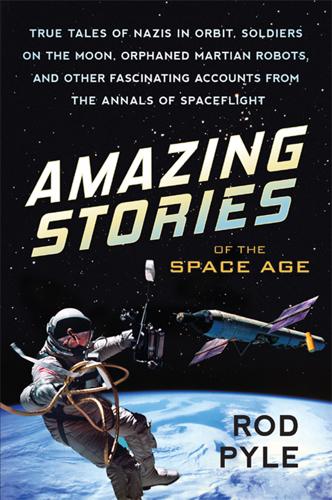
Amazing Stories of the Space Age
by
Rod Pyle
Published 21 Dec 2016
As you gape in awe at the 363-foot-long, 6.5-million-pound behemoth, stroll from the five massive fuel-guzzling F-1 engines on the business end of the rocket toward the pointy end. That little tiny capsule is all that returned from the lunar voyage, and it took that enormous machine just to get three men, sandwiched inside the capsule, to the moon and back (the lunar modules were left there, with the exception of Apollo 13's). That tiny spacecraft, loaded with fuel and equipment and astronauts and its lunar lander, weighed about fifty tons. You can imagine what it would have required to get a full lunar base, moon tractors, rotating crews of ten to twenty men, food, weapons, oxygen, water, and of course nuclear bazookas to the moon.
…
Buzz Aldrin conducted the final spacewalks of the Gemini program and hit his marks, completing the assigned (and simplified) tasks successfully, due to lessons previously learned in previous flights and arduous training on the ground before liftoff. Also of note, during the rendezvous attempt, the Gemini's navigation computer failed. Aldrin dug out a sextant, and between himself and pilot Jim Lovell (later of Apollo 13 fame), they navigated, rendezvoused, and docked manually, using visual sighting and manual hand controllers to control the maneuvering thrusters. This mission was a tour de force and met more of Blue Gemini's goals. The air force officials and others involved with Blue Gemini's brief life (lived mostly on paper) likely felt mixed emotions about the Gemini program—their own space programs were sputtering (though another, the Manned Orbiting Laboratory, would still be pursued beyond the end of the Gemini program).
…
The commands to alter the battery-charging cycles had written over the program that repositioned the high-gain antenna dish to track the Earth. The antenna was no longer pointing properly, and would likely not do so again. The team scrambled to come up with a fix—it was the first time the term “tiger team” had been used since the Apollo 13 emergency, when an exploding oxygen tank required all hands on deck to bring the crew home alive. And while Viking was a robot, its minders felt as if the lander were a fellow explorer on Mars who was in trouble. Within a week, the tiger team had designed a series of command uplinks that should, if the lander received them, result in renewed contact with Earth.

Screenplay: The Foundations of Screenwriting
by
Syd Field
Published 17 Dec 2007
In Cold Mountain, Inman’s dramatic need is to return home, and Ada’s is to survive and adapt to the conditions around her. In Lord of the Rings, as mentioned, it’s to carry the ring to Mount Doom and destroy it in the fire that created it. In Apollo 13 (William Broyles Jr. and Al Reinert), the dramatic need is to return the astronauts safely to earth. But it didn’t start out that way. When the story began, the dramatic need of Apollo 13, the astronaut’s mission, was to walk on the moon; but that changed when the oxygen tank blew. The dramatic question then became not whether they were going to land on the moon but whether they would be able to survive and return safely to Earth.
…
There may be an instance where Act III becomes an entire sequence, a full and complete unit of action. The ending of Apollo 13 is such a case; as are the endings of Witness and Crimson Tide. And if you look at Pulp Fiction, the ending is really a “bookend”: the Pumpkin and Honey Bunny (Tim Roth and Amanda Plummer) robbery attempt in the restaurant—which, coincidentally, opens the movie. Endings and beginnings are connected, right? In each of these scripts the ending completes the action of Act III. In Apollo 13, the entire third act focuses on the astronauts’ return to Earth, as we follow the action from the moment the LEM separates from the spacecraft, cutting back and forth to the command center, to the anxious three minutes that turns out to be four, waiting for them to plunge through the atmosphere, not knowing whether the heat shield will protect them or not.
…
As Red informs us in voice-over, Andy doesn’t seem to belong in the prison population; when he walks “he strolled, like a man in a park without a care or worry.” During their first few scenes together, Andy could explain to Red the circumstances surrounding the murder of his wife. In terms of setting up the story, this approach might work, but the tendency might be to explain rather than reveal. In Apollo 13 (William Broyles Jr. and Al Reinert), the first ten pages set up all the narrative threads that are needed to establish the situation. After showing newsreel shots of the fire that killed the three astronauts of Apollo 1, the script opens with a friendly party-like gathering where people are watching Neil Armstrong’s walk on the moon.
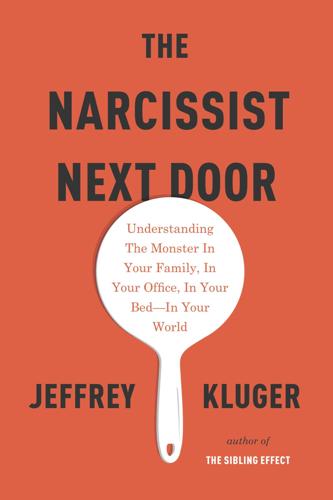
The Narcissist Next Door
by
Jeffrey Kluger
Published 25 Aug 2014
Clinton was very, very good at achieving that goal, something that I got to experience at close proximity one day when I improbably found myself in the Oval Office. It was July 1995, several months after my first book, Apollo 13, had been published and just one month after the release of the movie that was based on it. I was invited to the White House to be present when Clinton awarded Apollo 13 commander Jim Lovell—with whom I had collaborated on the book—the Congressional Space Medal of Honor. It was a tribute that many historians had long agreed Lovell had earned, but since NASA had always preferred to forget about its one lunar landing mission that didn’t actually land, Lovell had been denied.
…
And there is, too, Tom Hanks. I got to know Hanks well when we were working together on the movie Apollo 13, and I’ve kept in occasional touch with him over the years. If there were stories to tell that contradicted Hanks’s good-guy rep—his long-standing image as a Jimmy Stewart / Gary Cooper / Henry Fonda combo plate—I’d tell them. But they just don’t exist. The very first time I had any contact with Hanks was when he left a message on my office voice mail to set up a time for us to meet and discuss some of the details of the Apollo 13 story. His message began with “Hello, Jeff Kluger, this is Tom Hanks. I’m an actor . . .” and then he went on to say why he was calling.
…
I’d seen none of his movies but had heard his name in passing and pictured him as a sort of female mash-up of Carol Channing and Tatum O’Neal. For all Hanks knew, he occupied one of those gaps—an idea that a narcissistic celebrity could neither abide nor consider, but that he preemptively guessed could be the case. He added that he was reading the as-yet-unpublished manuscript of the book I’d written about the Apollo 13 mission, which his agent had given him, and which, he added, “I realize I’m reading without your permission.” So I was charmed from the start and was delighted to discover later that the easy, modest approachability Hanks projected was the real deal, not the illusory kind of so many celebs. But Hanks and his gracious ilk are in a decided minority, and Drew Pinsky, the internist and psychologist who hosts both a TV and radio show under the media-friendly name Dr.
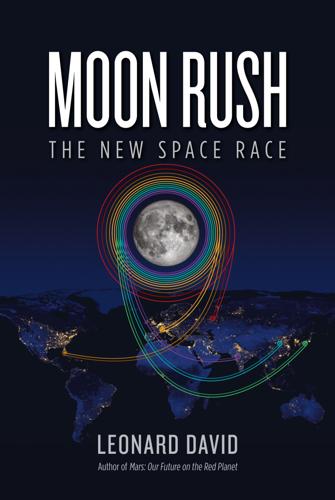
Moon Rush: The New Space Race
by
Leonard David
Published 6 May 2019
They photographed the robotic lander, retrieving equipment from the probe, including its scoop and television camera. They collected rock samples as well, mostly basalts, dark-colored igneous rocks hundreds of millions of years younger than the rocks collected on Apollo 11. The Apollo scorecard of piloted lunar landings was marred in April 1970 when Apollo 13 did not attain a Moon touchdown. The flight of Apollo 13 would have been a calamity and a tragedy if it were not for the resolve of the astronauts and the perseverance of mission controllers. A crippling failure en route to the Moon curtailed the flight of Mission Commander James Lovell, Command Module Pilot John “Jack” Swigert, Jr., and Lunar Module Pilot Fred Haise.
…
Another necessary part of that recipe was a base of technology with presidential support through four administrations, as well as congressional support for an adequate reserve of funding, roughly 100 percent of the total funding originally thought to be required to meet the stated goal of landing a man on the Moon. Tough, competent, disciplined, and courageous management kept the program on track, even after the tragic on-the-pad Apollo 1 fire in January 1967, the aborted flight of Apollo 13 in 1970, and despite hardware development challenges, waning media interest, and late mission cancellations. An essential ingredient was minimally layered decision making. A good idea to correct a problem or enhance a mission could move rapidly to a decision, sometimes overnight. The Apollo program drew upon a strong core of NASA engineering expertise, and strong, capable commercial contractor and supplier teams—although NASA controlled the development and manufacture of all items in the critical path to success.
…
APPENDIX Lunar Exploration Time Line Adapted from NASA Space Science Data Coordinated Archive (NSSDCA), NASA Goddard Space Flight Center, Greenbelt, Maryland. 1959 USSR Luna 1 - Jan 2, 1959 - Flyby USA Pioneer 4 - Mar 3, 1959 - Flyby USSR Luna 2 - Sep 12, 1959 - Impact USSR Luna 3 - Oct 4, 1959 - Probe 1961 USA Ranger 1 - Aug 23, 1961 - Attempted Test Flight USA Ranger 2 - Nov 18, 1961 - Attempted Test Flight 1962 USA Ranger 3 - Jan 26, 1962 - Attempted Impact USA Ranger 4 - Apr 23, 1962 - Impact USA Ranger 5 - Oct 18, 1962 - Attempted Impact 1963 USSR Luna 4 - Apr 2, 1963 - Flyby 1964 USA Ranger 6 - Jan 30, 1964 - Impact USA Ranger 7 - Jul 28, 1964 - Impact 1965 USA Ranger 8 - Feb 17, 1965 - Impact USA Ranger 9 - Mar 21, 1965 - Impact USSR Luna 5 - May 9, 1965 - Impact USSR Luna 6 - Jun 8, 1965 - Attempted Lander USSR Zond 3 - Jul 18, 1965 - Flyby USSR Luna 7 - Oct 4, 1965 - Impact USSR Luna 8 - Dec 3, 1965—Impact 1966 USSR Luna 9 - Jan 31, 1966 - Lander USSR Luna 10 - Mar 31, 1966 - Orbiter USA Surveyor 1 - May 30, 1966 - Lander USA Lunar Orbiter 1 - Aug 10, 1966 - Orbiter USSR Luna 11 - Aug 24, 1966 - Orbiter USA Surveyor 2 - Sep 20, 1966 - Attempted Lander USSR Luna 12 - Oct 22, 1966 - Orbiter USA Lunar Orbiter 2 - Nov 6, 1966 - Orbiter USSR Luna 13 - Dec 21, 1966 - Lander 1967 USA Lunar Orbiter 3 - Feb 4, 1967 - Orbiter USA Surveyor 3 - Apr 17, 1967 - Lander USA Lunar Orbiter 4 - May 8, 1967 - Orbiter USA Surveyor 4 - Jul 14, 1967 - Attempted Lander USA Explorer 35 (IMP-E) - Jul 19, 1967 - Orbiter USA Lunar Orbiter 5 - Aug 1, 1967 - Orbiter USA Surveyor 5 - Sep 8, 1967 - Lander USA Surveyor 6 - Nov 7, 1967 - Lander 1968 USA Surveyor 7 - Jan 7, 1968 - Lander USSR Luna 14 - Apr 7, 1968 - Orbiter USSR Zond 5 - Sep 15, 1968 - Return Probe USSR Zond 6 - Nov 10, 1968 - Return Probe USA Apollo 8 - Dec 21, 1968 - Crewed Orbiter 1969 USA Apollo 10 - May 18, 1969 - Orbiter USSR Luna 15 - Jul 13, 1969 - Orbiter USA Apollo 11 - Jul 16, 1969—First Crewed Landing USSR Zond 7 - Aug 7, 1969 - Return Probe USA Apollo 12 - Nov 14, 1969 - Crewed Landing 1970 USA Apollo 13 - Apr 11, 1970 - Crewed Landing (aborted) USSR Luna 16 - Sep 12, 1970 - Sample Return USSR Zond 8 - Oct 20, 1970 - Return Probe USSR Luna 17 - Nov 10, 1970 - Rover 1971 USA Apollo 14 - Jan 31, 1971 - Crewed Landing USA Apollo 15 - Jul 26, 1971 - Crewed Landing USSR Luna 18 - Sep 2, 1971 - Impact USSR Luna 19 - Sep 28, 1971 - Orbiter 1972 USSR Luna 20 - Feb 14, 1972 - Sample Return USA Apollo 16 - Apr 16, 1972 - Crewed Landing USA Apollo 17 - Dec 7, 1972—Last Crewed Landing 1973 USSR Luna 21 - Jan 8, 1973 - Rover USA Explorer 49 (RAE-B) - Jun 10, 1973 - Orbiter 1974 USSR Luna 22 - Jun 2, 1974 - Orbiter USSR Luna 23 - Oct 28, 1974 - Lander 1976 USSR Luna 24 - Aug 14, 1976 - Sample Return 1990 JAPAN Hiten - Jan 24, 1990 - Flyby and Orbiter 1994 USA Clementine - Jan 25, 1994 - Orbiter 1997 PEOPLE’S REPUBLIC OF CHINA/USA AsiaSat 3/HGS-1 -Dec 24, 1997 - Lunar Flyby 1998 USA Lunar Prospector - Jan 6, 1998 - Orbiter 2003 EUROPE SMART 1 - Sep 27, 2003 - Lunar Orbiter 2007 JAPAN Kaguya (SELENE) - Sep 14, 2007 -Lunar Orbiter CHINA Chang’e 1 - Oct 24, 2007 - Lunar Orbiter 2008 INDIA Chandrayaan-1 - Oct 22, 2008 - Lunar Orbiter 2009 USA Lunar Reconnaissance Orbiter - Jun 18, 2009 - Lunar Orbiter USA LCROSS - Jun 18, 2009 - Lunar Impactor 2010 CHINA Chang’e 2 - Oct 1, 2010 - Lunar Orbiter 2011 USA Gravity Recovery and Interior Laboratory (GRAIL) -Sep 10, 2011 - Lunar Orbiter 2013 USA Lunar Atmosphere and Dust Environment Explorer (LADEE) - Sep 6, 2013 - Lunar Orbiter CHINA Chang’e 3 - Dec 1, 2013 - Lunar Lander and Rover 2014 CHINA Chang’e 5 Test Vehicle - Oct 23, 2014 -Lunar Flyby and Return 2018 CHINA Queqiao - May 20, 2018 - Lunar Relay Satellite CHINA Chang’e 4 - Dec 7, 2018 - Lunar Far Side Lander 2019 on SOUTH KOREA Korea Pathfinder Lunar Orbiter CHINA Chang’e 5 Lunar Sample Return Mission INDIA Chandrayaan-2 Moon Orbiter, Lander, and Rover INDIA TeamIndus Lunar Lander (Private Mission) ISRAEL SpaceIL Lunar Lander (Private Mission) USA Astrobotic Peregrine Lunar Lander (Private Mission) USA Moon Express (Private Mission) RUSSIA Lunar 25 (Lander); Luna 26 (Orbiter); Luna 27 (Lander); Luna 28 (Lander/Sample Return); Luna 29 (Lander/Rover) JAPAN Small Moon Landing Demonstration Machine ACKNOWLEDGMENTS Special thanks to David Kring, Lunar and Planetary Institute; James Head, Brown University; Ian Crawford, Birkbeck College London; Bernard Foing, European Space Agency; Angel Abbud-Madrid, Center for Space Resources at the Colorado School of Mines; Mark Robinson, Arizona State University; William Hartmann, Planetary Science Institute; Clive Neal, University of Notre Dame; and the solid footing of Apollo moonwalkers Buzz Aldrin and Harrison Schmitt for their assistance in writing this book.
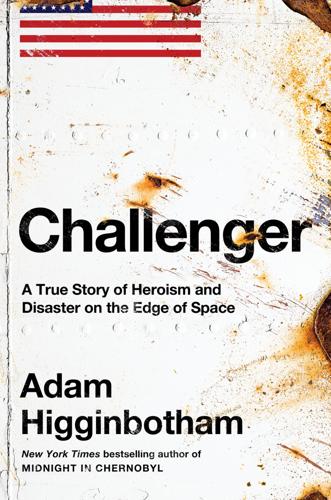
Challenger: A True Story of Heroism and Disaster on the Edge of Space
by
Adam Higginbotham
Published 14 May 2024
However routine it began to seem for the American public, the architects of Apollo knew that spaceflight had always been experimental, and sending men so far, into such a hostile environment, with so many opportunities for failure, was fraught with lethal hazards. Although there had been no more fatal accidents since the launchpad fire that had almost ended the program before it started, there had been enough close calls to make it clear that death was never far away. After the aborted lunar voyage of Apollo 13 in 1970, in which three astronauts survived a catastrophic explosion in outer space only through a combination of good fortune and last-minute improvisation, the engineers began to fear that their luck would soon run out. If they pushed on to the planned end of the program, the chances were good that at least one Apollo mission would never return from the moon.
…
On call twenty-four hours a day, Abbey had five young children at home, but rarely saw them: after leaving his office, he often lingered into the small hours among those who manned the consoles at Mission Control, or in the taverns and hotel bars scattered along the two-lane highway specially built to serve the center, NASA Road 1. As part of the team who had successfully brought home the crew of Apollo 13, in 1970 he had been awarded the Presidential Medal of Freedom. But unlike other, highly visible administration characters like Flight Director Gene Kranz—instantly recognizable by his severe blond flattop and fancy vests—Abbey remained unknown to the general public, a doughy middle-aged functionary in a blazer and khakis.
…
Officially, the change was designed to avoid bureaucratic confusion when missions were postponed and reshuffled. But many NASA veterans believed it was a result of Administrator James Beggs’s superstition about the number thirteen, a fear that had become widely ingrained at the agency after the near catastrophe of Apollo 13—infamously launched at 13.13 Houston time and scheduled to reach lunar orbit on April 13. So Beggs issued instructions for an entirely new numbering system. “I don’t care what you do,” he said, “but we’re not going to fly an STS-13.” Using the new method, what would have been the thirteenth shuttle mission was now renamed STS-41-C: it would be Dick Scobee’s first flight, taking the copilot’s seat in the cockpit of Challenger beside Commander Bob Crippen.
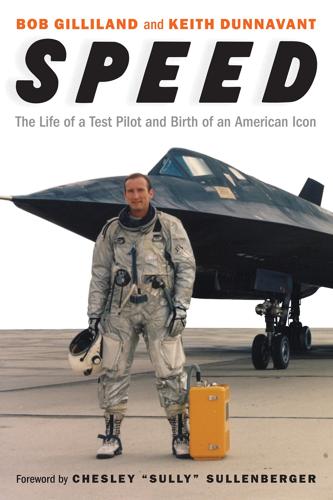
Speed
by
Bob Gilliland
and
Keith Dunnavant
You’ll love this thrill ride into the life of a legendary test pilot. This book brings you so close to the action that you can feel the excitement and smell the jet fuel.” —Gen. Steve Ritchie, the only U.S. Air Force fighter pilot ace of the Vietnam War “This fascinating book puts you in the cockpit with Bob Gilliland.” —Jim Lovell, astronaut and commander of Apollo 13 “I wholeheartedly recommend this book! It gives great insight into the story of one of America’s greatest test pilots and his crucial work in making the Blackbird program successful.” —Ed Yeilding, SR-71 pilot, Smithsonian flight speed record holder “Bob had an exemplary military career and was a consummate test pilot. . . .
…
“Too much ego got a lot of guys killed,” Gilliland said. “There were guys who had so much faith in themselves that they refused to bail out, until it was too late.” Any pilot worth his pay believed he could always find a way out of trouble. Many years before he circumnavigated the moon in Apollo 8 and commanded a team that averted disaster in Apollo 13, Jim Lovell was a young naval aviator flying Banshee fighters. The navy was just starting to experiment with carrier-based night flying, and on his first mission into the darkness, the weather turned bad. His radio frequency beacon system had been set incorrectly, which left him lost and running low on fuel over the Sea of Japan.
…
In time, he would add the Airbus A350 to his list of firsts, further demonstrating his passion for cutting-edge experiences. But this flight was historic in a different way. In one row of the first-class cabin sat Neil Armstrong, the first man on the moon. Jim Lovell, one of the first astronauts to circumnavigate the moon on Apollo 8 and the commander of the ill-fated Apollo 13 mission, which transformed him into a folk hero immortalized by Tom Hanks, was strapped in across the aisle. Nearly four decades after becoming the last man to walk on the moon, helping cement a ubiquitous image of dusty, pressurized weightlessness during those heady days when Apollo reflected America’s noblest instincts, Gene Cernan felt a familiar sensation as his body gyrated in the choppy air.
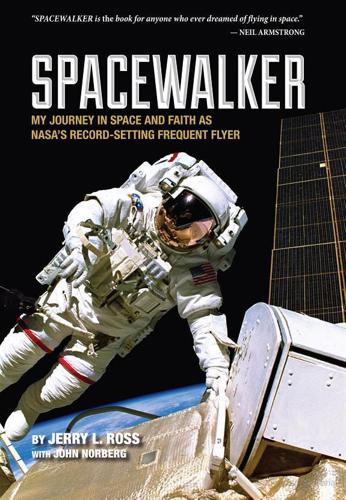
Spacewalker: My Journey in Space and Faith as NASA's Record-Setting Frequent Flyer
by
Jerry Lynn Ross
and
John Norberg
Published 31 Jan 2013
I met with Academy Award-winners Brian Grazer, Ron Howard, and Tom Hanks.They were doing research for their upcoming movie Apollo 13 and were looking for advice and support for their project. It was fascinating to meet a group of professionals in a completely different field from mine and see that they approached their work with the same intensity and enthusiasm.The movie was partly filmed at the Kennedy Space Center and on a set in a zero-g KC-135 flown from Ellington Field near Johnson Space Center. Apollo 13 was a huge success, grossing over $355 million worldwide, receiving nine Academy Award nominations and winning two Academy Awards.
…
In my role as payload officer, I worked with many groups around the Johnson Space Center and got to know some people who had been part of the Apollo program. I met Gene Kranz, the legendary Flight Director who led Mission Control’s efforts to land Apollo 11 on the Moon and to safely return the crew of Apollo 13 to Earth. Gene was a former US Marine fighter pilot, and his flat-top haircut, broad shoulders, and powerful personality embodied the tough and competent approach that he instilled in his Flight Directors and his flight control teams. Gene’s legacy still guides the activities in the Mission Control Center supporting the International Space Station operations twenty-four hours a day, seven days a week.
…
One trip blended into another, and sometimes I lost track. The STS flight numbering was convoluted. The numbering started out simple enough with STS-1 through STS-9 in sequence. Then the system changed. What would have been STS-10 became STS-41B. I believe that, without saying so, NASA remembered the nearly tragic Apollo 13 mission and decided to avoid having a Shuttle mission with the “unlucky”number.The stated reason for the change was the need to be able to distinguish between flights scheduled to launch from Kennedy Space Center and those that were soon to be launching from the Vandenberg Air Force Base launch site Pad SLC6, which was nearing completion in California.

Peers Inc: How People and Platforms Are Inventing the Collaborative Economy and Reinventing Capitalism
by
Robin Chase
Published 14 May 2015
This kind of deep innovation bears an uncanny resemblance to what Mission Control at NASA had to do in 1970 when it applied the ingenuity of a team of engineers to save the crew of the Apollo 13 mission. If you weren’t there watching with the world in awe as a solution to the crisis started to unfold (I personally don’t remember that), then you probably saw the 1995 movie, in which Tom Hanks, in the role of mission commander, radios, “Houston, we’ve got a problem.” Fifty-six hours after launching and 200,000 miles from earth, the crew of the Apollo 13 spacecraft switched on the hydrogen and oxygen tank-stirring fans. Ninety-three seconds later, the three astronauts heard a loud bang.
…
INDEX Agricultural model, 235–237 Airbnb, 38 benefits to peers, 50 cumulative totals, 74, 75 disaster response initiative, 244 empowering individuals, 58–59 excess capacity, 77–78 implementing constraints, 107 power parity, 127 power users, 116–117 predictive platform, 45 and regulation, 154 triumph over established hotel chains, 74–76 types of value created, 185 Airbnb Groups, 128 Ajema, Daniel, 130 Algorithms, transparency, 129–130 Alibaba, 37 Amazon, as Peers Inc configuration, 88–89 Amoruso, Sophia, 55–56 Anderson, Chris, 53–54 Angel investors, 9–10 Apollo 13, deep innovation, 222–223 AppGratis, 122, 124–125 Apple, and app approval, 122 Application programming interface (API), Twitter, 121 Apps approval process, 122 dependence on Facebook, 119–120 proliferation, 61 use of excess capacity, 27, 48–49 Apps for the Army, 169–170 Apps for Democracy, 39–40, 61 Apps Marketplace, 169–170 Aqueduct, 41 Archimedes, 41 Aros, 64 Assets community-built, protecting, 205–207 open vs. closed, 251 @FeministaJones, 83–84 Auto rickshaws, 239–243 Autonomy, 57–59 B corp, 202, 230 Back-office technology, 14 Barcelona Open Challenge, 172–174 Barriers to entry capitalist economy, 126 collaborative economy, 252 Bartolone, John, 227 Basic income policies, 191 Benefits, workers’, 189–190 and employment status, 156 separated from employment, 59–60 taxes to pay, 192 universal, 160 Benevolent dictators, 201, 210 Berners-Lee, Tim, 200 Best practices, sharing with peers, 128–129 Bieler, Dan, 163–164 Bilton, Nick, 120–121 Bitcoin, 211–217 BlaBlaCar beginning, 21 “everybody welcome” phase, 111 passengers transported, 76 social and environmental benefits, 201 use of excess capacity, 76 Black markets, and overregulation, 152 Blank, Steve, 109 Block chain, 213, 215–217 Bloomberg, Michael, 174 Bollier, David, 256–257 Bottom-up process, 168–169 Boyd, Danah, 135–136 Breitbart, Joshua, 246 Brown, John Seely, 178 Business models, most successful, 162–164 Buxton, Peter, 81–82 Buytaert, Dries, 134, 164 Buzzcar, 155 Cambridge, Massachusetts, 7–8 Capitalism historical vs. current, 195 industrial, vs. collaborative economy, 18–19, 249–250 realities, 197–198 valuing corporation over people, 253 Car, cost of owning or renting, 21–22 Car ownership, downsides, 9 Carbon emissions, and new energy models, 93–95.
…
See Regulations Hackathons, 39–40 Hagel, John, 178 Hansen, James, 232 Hardware, in-vehicle, 14 Haselmayer, Sascha, 170–171, 173 Heiferman, Scott, 238–239 HelloWallet, 41 HelpAround, 82–83 Heminway, Mark, 15–16 Hemmesch, Annie, 82–83 Hilton Hotels, 74 Hives, as innovative distribution mechanism, 235–236 Hoffman, Reid, 127 “How to Run Your Own Apps for Democracy Innovation Contest,” 40 Humans, working in conjunction with computers, 85–87 Hurricane Sandy, lessons learned, 243–244 IKEA, resistance to change, 175 Income enabling various sources, 58–59 rising inequalities, 187–188, 195–196, 220–221 India, auto rickshaw innovation, 239–243 Individual strengths, 18 Indonesia, forest fires, 230–232 Industrial economy vs. collaborative, 18–19, 250 prior to Internet, 249 valuing corporation over people, 253 Industrial model, 164–166 Industrial strengths, 18 InnoCentive, 83 Innovation Apollo 13, 222–223 dictated by platform structure, 44–45 gap between idea and service, 172–173 no permission required, 141, 142 open platforms, 104–107 reforming Defense Intelligence Agency, 167–169 Instacart, 55 Institutions benefiting from peer collaboration, 61–68 lack of flexibility, 188–189 sustainability efforts, 226–229.
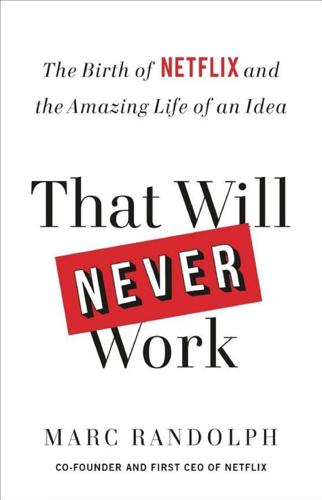
That Will Never Work: The Birth of Netflix and the Amazing Life of an Idea
by
Marc Randolph
Published 16 Sep 2019
Travis Kalanick spends $800 on a private driver on New Year’s Eve and thinks there has to be a cheaper way—that’s Uber. There’s a popular story about Netflix that says the idea came to Reed after he’d rung up a $40 late fee on Apollo 13 at Blockbuster. He thought, What if there were no late fees? And BOOM! The idea for Netflix was born. That story is beautiful. It’s useful. It is, as we say in marketing, emotionally true. But as you’ll see in this book, it’s not the whole story. Yes, there was an overdue copy of Apollo 13 involved, but the idea for Netflix had nothing to do with late fees—in fact, at the beginning, we even charged them. More importantly, the idea for Netflix didn’t appear in a moment of divine inspiration—it didn’t come to us in a flash, perfect and useful and obviously right.
…
Turns out you didn’t need to build huge, expensive warehouses all across the country to ship DVDs if 90 percent of the DVDs people wanted were already in circulation. Tom had applied to shipping a principle we all understood intuitively: when it came to movies, people were lemmings. They wanted to watch what everyone else was watching. If you’d finished Apollo 13 yesterday, then it was highly likely that somebody else wanted it today. Conversely, if the next movie in your queue was Boogie Nights, it was just as likely somebody else was returning it that day. Tom’s brilliant idea was to recognize that when a user mailed a DVD back to us, it didn’t need to go to a warehouse the size of a Costco.
…
People who had run their own companies, or had done the logistics for multinational corporations, or had built the infrastructure of the internet. We were now deep in the throes of our battle with Blockbuster for rental supremacy. By then, Reed had started trotting out the familiar origin story for the company. Remember it? It went something like this: Reed came up with the idea for Netflix when he found an old rental copy of Apollo 13 in his house, went to return it to Blockbuster, and saw a $40 late fee. Then he thought: What if I never had to do this again? If this book has taught you anything, I hope it’s shown you that the story behind Netflix was a little more complicated than that. And I also hope it’s shown you how useful narrative can be.

Boom: Bubbles and the End of Stagnation
by
Byrne Hobart
and
Tobias Huber
Published 29 Oct 2024
Space, famously dubbed “the final frontier” in Star Trek, turns into an abyssal source of horror in films like Alien. Instead of boldly going where no one has gone before, our current spacefarers desire nothing more than to return from the darkness of space into the comfort zone of Earth—think of 1995’s Apollo 13, 2013’s Gravity, and 2015’s The Martian. Immediately after the Moon landing in 1969, Woodstock happened, and the Space Age gave way to the New Age. This striking observation, by the venture capitalist Peter Thiel, 64 represents the broader turn to subjective spirituality and interiority that took place in the 1970s and continues to this day.
…
Thus, while NASA took a 20-month break from crewed space flights in the wake of the Apollo 1 disaster, it did not quit. With billions of dollars spent, three deaths, and still no Moon landing, a reasonable person would have been convinced that the entire program was folly. But for the program workers and astronauts, giving up would mean that those astronauts died in vain. It’s no wonder Gene Kranz, an Apollo 13 flight director, called “irrational exuberance” a prerequisite to space exploration. 189 Speaking in 2004, he used the same phrase then-Federal Reserve chair Alan Greenspan had deployed when describing the dot-com bubble. The greatest risk of manned space missions is, as one former NASA astronaut put it, “not death” but “not to explore at all.” 190 Worse still is the idea that one might miss out on being the first to reach the next frontier—FOMO on a cosmic level. 191 In sum, Apollo was a reality-distortion field that heavily skewed perception of the program’s risks and rewards.
…
There was one level of centralization, with von Braun serving as the hub for information, but his role was really to highlight problems in a way that facilitated decentralized solutions. Another organizational method NASA adopted was at once simple and punishingly difficult. In April 1970, when Apollo 13 was heading for the Moon, Joseph Shea, program manager for the command module and lunar module, required his direct reports to assemble a summary of everything they had accomplished and every outstanding decision that needed his input. These handwritten notes, which ran to hundreds of pages long, were delivered weekly.
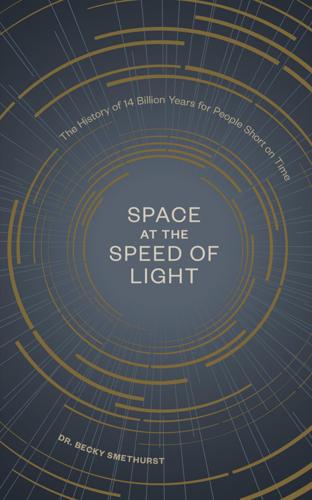
Space at the Speed of Light: The History of 14 Billion Years for People Short on Time
by
Becky Smethurst
Published 1 Jun 2020
Einstein’s laws of gravity, on the other hand, work in both the everyday regime and the incredibly fast, extremely heavy regime of objects in space. The farthest distance a human being has ever ventured from the surface of the Earth is 400,171 kilometers (248,655 miles) on April 15, 1970. This record was set during the attempted Moon landing mission of Apollo 13, during which an oxygen tank explosion crippled the ship, meaning that a safe landing on the Moon was no longer possible. At the time of the explosion, the astronauts—Jim Lovell, Fred Haise, and Jack Swigert—were more than fifty-five hours into their sixty-hour journey to the Moon. They were too distant from Earth for NASA’s original mission abort contingency plans to bring the crew back to Earth safely.
…
Although the researchers quickly get out of sync with Earth time, people often report that living with a day 24.5 hours long is ideal—it gives you that extra half hour to get the little things in life done. 2The lunar rovers driven by Apollo 15, 16, and 17 astronauts covered between 27 and 36 kilometers (16.7–22.4 miles) each, tipping the full distance traveled on the Moon over that traveled on Mars by robotic rovers. Apollo 13 used gravity to slingshot around the Moon and return to Earth. The universe sprang into being, in a wondrous storm of creation, 14 billion years ago; 9.5 billion years later, the Sun, the Earth, and the solar system started to take shape. After another billion years, life developed in the Earth’s oceans, paving the way for dinosaurs to walk the land (a mere 13.5 billion years since the big bang).

Retire Before Mom and Dad
by
Rob Berger
Published 10 Aug 2019
When our Saving Rate goes to 20%, our Spending Rate goes down to 80%. Not only are we saving more but we need to save less money to equal one month of expenses. Recall from the Apollo 13 mission that NASA used the Slingshot Effect to safely bring home three astronauts. Apollo 13 launched on April 11, 1970 on a mission to the moon. The moon landing was aborted two days later, however, when an oxygen tank exploded. Despite the loss of cabin heat, limited oxygen, a shortage of drinking water, and a crippled ship, Apollo 13 landed safely back to Earth six days after launch. To get the crew home, NASA executed a circumlunar trajectory, using the moon’s gravity to slingshot the ship back to Earth.
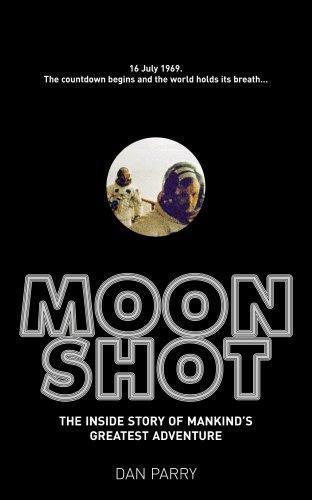
Moonshot: The Inside Story of Mankind's Greatest Adventure
by
Dan Parry
Published 22 Jun 2009
Without a heat-shield the LM could never survive re-entry into the atmosphere. But equipped with a powerful engine, an independent set of thrusters and its own supplies of oxygen and electricity, it could provide a shelter in the event of a serious problem. The theory was later proved in practice when an explosion drained life from the command module during Apollo 13. The spacecraft was left with only enough power to carry the crew through the atmosphere, so for the four-day journey back to Earth the astronauts took refuge in their LM. The crew of Apollo 8 didn't have a lunar module, and were taking a gamble with every minute they remained in space. ( ) The fragile lunar module was only of use if it survived the rigours of being hurled into space while squashed inside its adapter.
…
In November 1969, Pete Conrad and the crew of Apollo 12 survived a lightning strike during lift-off, before landing with pinpoint accuracy beside Surveyor 3 in the Ocean of Storms. Conrad relished the chance to walk on the Moon and did so with an exuberance typical of his larger than life attitude.1 By the time Apollo 13 launched in April 1970, flying to the Moon was becoming old news and the TV networks struggled to provoke interest. Jim Lovell and Fred Haise (both of whom had been part of the Apollo 11 backup crew) planned to explore a highland region near the Fra Mauro crater but were lucky to make it home after an explosion crippled their service module.
…
Subsequently choosing to enter academia, Armstrong completed a masters degree in aerospace engineering at the University of Southern California (by submitting a thesis based on Apollo 11). Leaving NASA in 1971, he became a professor of aerospace engineering at the University of Cincinnati, and was involved in teaching and research until going into business in 1979. In 1970, Neil took a lead role in investigating the explosion that struck Apollo 13, and in 1986 he carried out similar work following the loss of the space shuttle Challenger. Like many Apollo astronauts, Neil's time at NASA didn't leave him unscathed. He and Janet subsequently parted, and on more than one occasion the man who for 15 minutes had the Moon to himself has had to be rescued from an excited mob.

Beyond: Our Future in Space
by
Chris Impey
Published 12 Apr 2015
The Saturn V was as tall as a thirty-six story building; it had a peak thrust of eight million pounds of force and could lift 60 tons to Earth orbit. The Moon landings were and still are unprecedented. The twenty-four men who journeyed there are the only people ever to have left the Earth’s gravity, and the twelve who landed are the only people to have set foot on another world. Despite this feat, and the ingenuity and heroism of the Apollo 13 crew, who in 1970 nursed their crippled spacecraft back to Earth following an oxygen explosion, public interest in the Moon landings waned. Through a misty lens of history, it seems the Apollo program had broad public support. But in fact a majority thought the government was spending too much on space.
…
However, the Space Shuttle did provide case studies in the importance of having astronauts rather than robots work in space. Robots are not versatile or reliable enough to match a well-trained astronaut. We can all admire the “seat-of-the-pants” problem-solving skills demonstrated by Neil Armstrong as he guided Apollo 11 over a boulder field with hardly any fuel left, and by the Apollo 13 crew as they nursed their crippled spacecraft around the Moon and home to safety. In particular, the five servicing missions of the Hubble Space Telescope defined the state of the art for astronauts, with multiple long space walks, challenging technical jobs, and difficult decisions made under time pressure.
…
When Soyuz 1 crashed in 1967, cosmonaut Vladimir Komarov knew he was going to die and raged against the engineers for ignoring prior warnings. Three cosmonauts died in 1971 returning from the Salyut 1 space station. Their ventilation valve ruptured 100 miles up, exposing them to the vacuum of space and asphyxiating them. There were also some close calls. The most memorable was Apollo 13, but in 1965 the Russian Voskhod 2 spacecraft missed its reentry site and the cosmonauts landed in a heavily forested wilderness at night. The two cosmonauts huddled in the cold, gripping pistols as wolves and bears roamed outside. The first Moon landing was so risky that President Richard Nixon had a speech prepared in case Neil Armstrong and Buzz Aldrin were stranded.
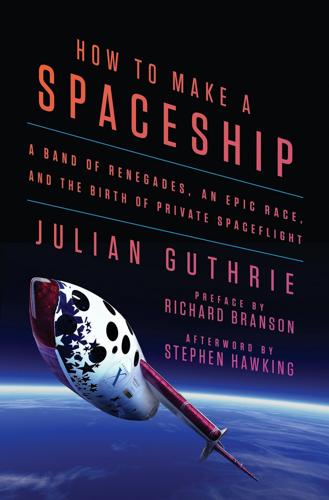
How to Make a Spaceship: A Band of Renegades, an Epic Race, and the Birth of Private Spaceflight
by
Julian Guthrie
Published 19 Sep 2016
The very last stop on their tour was building 33, AeroAstro, which had produced more astronauts than any other place outside U.S. military academies. Military officers had received aviation training for World Wars I and II here. Breakthroughs in hypersonic flight testing were achieved. Buzz Aldrin got his PhD here in 1963. Other astronauts—Jim Lovell, Apollo 13; Ed Mitchell, Apollo 14—took MIT’s astronautical guidance class. There was a picture of a half dozen NASA astronauts visiting the Instrumentation Lab: three men were the Apollo 1 astronauts—Virgil Grissom, Roger Chaffee, and Ed White—who died during a prelaunch test. Next to them were MIT students and astronauts Dave Scott, Rusty Schweickart, and Jim McDivitt.
…
He could do his thing in the Mojave Desert, with no interference, little oversight, and without the “gotcha” media watching and waiting. Goldin respected Burt, considered him brilliant, and had been at the receiving end of his needling before. NASA was a lot of things, he said, but it was not risk averse. “‘Failure is not an option’ was the mantra from one human being during Apollo 13!” Goldin said angrily. “[Gene] Kranz wasn’t speaking for all of NASA. He was saying, ‘These three people’s lives are at stake. We cannot fail. We gotta bring them back.’ It has been misinterpreted.” Goldin said that people expected “perfection from NASA, and it’s a news story when NASA fails.” Goldin was the first to admit he had never wanted to run the space agency, but got what he called the “hug of life” from President George H.
…
Morgan was moved by how his grandfather’s time in the air gave him powerful insights into the vastness of the universe and man’s place in it. A practitioner of meditation, Morgan was searching for his own epiphanies. When he read that his grandfather had sat on a beach and studied his own hand as a sort of time travel to primitive life, Morgan’s mind drifted to Apollo 13 astronaut James Lovell as he famously looked back at Earth from space, put his hand up to the window, and realized he could hide all of Earth with just his thumb. Morgan was certain that the world needed the XPRIZE; that peace and wisdom were attainable through access to space. He intended to talk onstage about the need to inspire a new generation of dreamers.
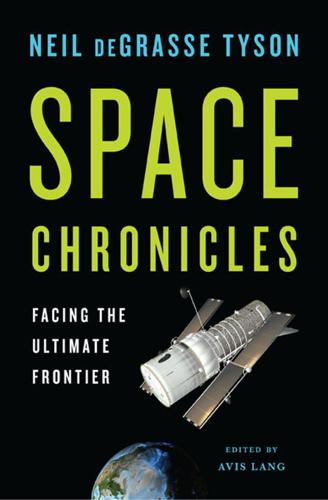
Space Chronicles: Facing the Ultimate Frontier
by
Neil Degrasse Tyson
and
Avis Lang
Published 27 Feb 2012
The human record for “altitude” does not go to anybody for having walked on the Moon. It goes to the astronauts of the ill-fated Apollo 13. Knowing they could not land on the Moon after the explosion in their oxygen tank, and knowing they did not have enough fuel to stop, slow down, and head back, they executed a single figure-eight ballistic trajectory around the Moon, swinging them back toward Earth. The Moon just happened to be near apogee, the farthest point from Earth in its elliptical orbit. No other Apollo mission (before or since) went to the Moon during apogee, which granted the Apollo 13 astronauts the human altitude record. (After calculating that they must have reached about 245,000 miles “above” Earth’s surface, including the orbital distance from the Moon’s surface, I asked Apollo 13 commander Jim Lovell, “Who was on the far side of the command module as it rounded the Moon?
…
(After calculating that they must have reached about 245,000 miles “above” Earth’s surface, including the orbital distance from the Moon’s surface, I asked Apollo 13 commander Jim Lovell, “Who was on the far side of the command module as it rounded the Moon? That single person would hold the altitude record.” He refused to tell.) In my opinion, the greatest achievement of flight was not Wilbur and Orville’s aeroplane, nor Chuck Yeager’s breaking of the sound barrier, nor the Apollo 11 lunar landing. For me, it was the launch of Voyager 2, which ballistically toured the solar system’s outer planets. During the flybys, the spacecraft’s slingshot trajectories stole a little of Jupiter’s and Saturn’s orbital energy to enable its rapid exit from the solar system.
…
ABC, 232 Advanced Camera for Surveys, 140 Advisory Committee on the Future of the US Space Program, 221 aerobraking, 163 Aeronautics and Space Engineering Board, 169 aerospace industry, 73, 199–200, 206, 208–9, 237 technology integration and, 323–24 see also Commission on the Future of the United States Aerospace Industry Age of Exploration, 85 Airbus, 73 Air Force, US, 166 Albaugh, James, 221 Aldrin, Buzz, 14–15, 66, 86, 219 algebra, 205 ALH-84001 (meteorite), 48 Almagest (Ptolemy), 65 Alpha Centauri, 178 American Museum of Natural History, xiii American Recovery and Reinvestment Act, 11–12 Ames Research Center, 149–50 ammonia, 30, 92 anchor tenancy contracts, 308–9 Anderson, Carl D., 171 Anderson, John D., 248–49 Andromeda galaxy, 57, 239 Milky Way galaxy and, 118–19 Nebula in, 100 Antarctica, 76 Anti-Deficiency Act, 288 antimatter, 164, 170–71 Antitrust Civil Process Act, 311 Anyone, Anything, Anywhere, Anytime, 146 Apollo program, 6, 8, 11, 15, 25, 109, 111, 133, 151, 154, 162, 168, 179, 195, 214, 219, 245 Apollo 1, 17, 66, 96 Apollo 8, 69–70, 145, 172 Apollo 11, 4–5, 7, 14, 21, 23, 69, 86, 88, 102, 112, 127, 144–45, 149–50, 196, 220 Apollo 12, 5, 198 Apollo 13, 112 Apollo 14, 3 Apollo 16, 198 Apollo 17, 17, 69, 132, 187, 188 Apophis (asteroid), 53 Apple Computer, 136 Arecibo Observatory, 28, 41 “argument from ignorance,” 182–83 Aristarchus, 34, 97 Aristotle, 34 Armstrong, Neil, 5, 14, 66, 69, 86–87, 111–12, 149, 187, 219–20 asteroid belt, 245 asteroids, 45–54, 103, 188, 201, 227, 228, 252, 255, 259 collision rates of, 49–50, 50 composition of, 46 cratering record of, 47–48 detecting and diverting, 52–54, 236 ecosystems and impact of, 51–52 impact records of, 45–46 impact risk of, 46–47, 49–51, 50 keyhole altitude range of, 53 near-Earth, 46–47 planet formation and, 45–46 predicting, 54 shock waves of, 47 Trojan, 117, 176 see also comets Astronaut Pen, 194 astronauts, 141, 145 Astronomy Explained (Ferguson), 254 Atlantis space shuttle, 147, 162 atomic bomb, 50, 87, 97, 224 Atomic Energy Act of 1954, 274–75 Atomic Energy Commission, 274 Augustine, Norm, 146, 221 Australia, 239 aviation, see flight bacteria, 246–47 ballistics, see orbits Bean, Alan, 5 Belgium, 7 Bell, Jocelyn, 29 Bell Telephone Laboratories, 92 Bell X-1 (rocket plane), 109 Benz Patent Motorwagen, 213 Berlin Wall, 80 Big Bang theory, 92, 95, 129, 141, 176 biomarkers, 30 black holes, 71, 94, 139, 141, 142 Blériot, Louis, 110 Blob, The (film), 35, 203 Blue Marble, The, 187–88 Boeing, 236 Bolden, Charles F., Jr., 146 Book of Predictions, The (Truax), 218 Brazil, xiv, 7, 23, 73 Breakthrough Propulsion Physics Project, 170 Brooklyn Daily Eagle, 215 Bruno, Giordano, 217 Bush, George H.
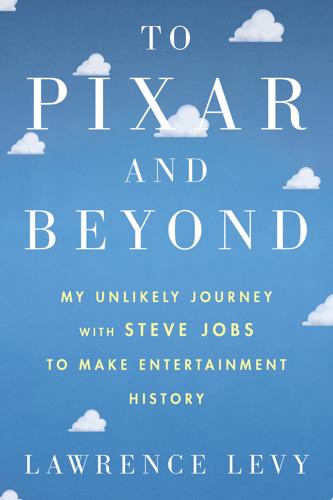
To Pixar and Beyond
by
Lawrence Levy
John explained how the idea had emerged from his earlier short films, how excited he was that Tom Hanks and Tim Allen had signed on to be the voices of Woody and Buzz, and that Randy Newman was doing the music. These were some big names. Tom Hanks had just come off a string of successes that was making him one of the world’s biggest stars—Sleepless in Seattle, Philadelphia, Forrest Gump—and the coming summer he was slated to star in a film with a lot of buzz, Apollo 13. Tim Allen had a hit TV show, Home Improvement, that was in its third season and experiencing great ratings. Randy Newman had enjoyed a stellar career as a recording artist and a composer of film scores. “They are a coup!” I said. “You must be ecstatic.” “I am,” John said. “And they are so amazing to work with.
…
Before we knew it we were sitting in our seats, watching as the theater began to fill up. “Look, there’s Tom Hanks,” Hillary announced excitedly. Indeed, there Hanks was, in the flesh, walking into the theater. His star could not have been brighter at that moment, fresh off the summer’s hit film Apollo 13. We saw many of the “voices” in the film as they came in: Tim Allen, Wally Shawn, John Ratzenberger. Even Michael Eisner, Disney’s CEO, was present, which we took as a special compliment to Pixar given the number of Disney premieres to which he must be invited. And of course we saw John Lasseter, Ed Catmull, and the other key contributors at Pixar, all accompanied by their families, as Disney had made this into a truly family event.
…
“It’s amazing,” Steve started excitedly. “I’ve talked to Disney marketing, I’ve talked to John. I’ve talked to Eisner. This is huge. They’re thinking this could be the biggest film of the year.” The biggest film of the year so far had been Batman Forever, with a total domestic box office of $184 million. Second was Apollo 13, with $172 million. It had never really occurred to any of us that we might reach into that territory. “Are you serious?” I said. “That means it’ll get close to two hundred million.” “It’s possible,” Steve said. “We did it, Lawrence. We totally did it.” I felt chills down my spine again as I got off the phone and shared what Steve had said.
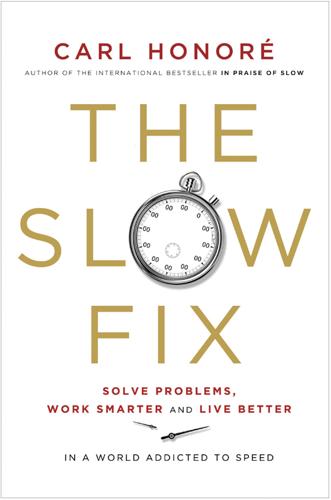
The Slow Fix: Solve Problems, Work Smarter, and Live Better in a World Addicted to Speed
by
Carl Honore
Published 29 Jan 2013
There are times – patching up a soldier on the battlefield, for instance, or cooling a damaged nuclear reactor in Japan – when sitting back to stroke your chin and ponder the big picture and the long term is not an option. You have to channel MacGyver, reach for the duct tape and cobble together a solution that works right now. When the astronauts on the Apollo 13 radioed Houston about their “problem” back in 1970, the boffins at NASA mission control did not launch a full inquiry into what caused the space craft’s oxygen tanks to explode. Instead, they rolled up their sleeves and toiled round the clock to devise a quick-and-dirty workaround that would modify the carbon dioxide filters so the astronauts could use the lunar module as a lifeboat.
…
Instead, they rolled up their sleeves and toiled round the clock to devise a quick-and-dirty workaround that would modify the carbon dioxide filters so the astronauts could use the lunar module as a lifeboat. Inside 40 hours the crack problem-solvers in Houston came up with an ingenious solution using materials on board the ship: cardboard, suit hoses, plastic stowage bags, even duct tape. It was not a permanent fix, but it brought the Apollo 13 crew home safely. Afterwards NASA pulled the Andon rope, spending thousands of hours working out exactly what went wrong with those oxygen tanks and devising a Slow Fix to make sure they never exploded again. Yet how many of us follow NASA’s lead? When a quick fix eases the symptoms of a problem, as that acupuncture session did for my back, our appetite for pulling the Andon rope tends to fade.
…
Football management as a revolving door: Annual figures compiled in 2012 by Sue Bridgewater of Warwick Business School for the League Managers Association. Inside 40 hours: From the Apollo Lunar Service Journal at http://www.hq.nasa.gov/alsj/a13/a13.summary.html. NASA spent thousands of man-hours: From the Apollo 13 Mission Review, Hearing Before the Committee on Aeronautical and Space Sciences, United States Senate, Ninety-First Congress, Second Session, 30 June 1970. Chapter 1 – Why the Quick Fix? Side salad illusion: Alexander Chernev, “The Dieter’s Paradox,” Journal of Consumer Psychology, Volume 21, Number 2 (2011), pp. 178–83.
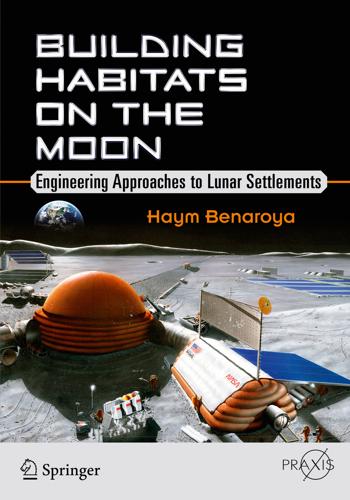
Building Habitats on the Moon: Engineering Approaches to Lunar Settlements
by
Haym Benaroya
Published 12 Jan 2018
The ethos of keeping your cool, not freaking out, getting a grasp of the situation no matter how dire, then thinking it through, doing the math, prioritizing and sequencing the problems, then focusing on one problem at a time, always mindful the solution to one problem can inadvertently create other ones, is essentially the same philosophy embodied in the character of Mark Watney in The Martian. The Apollo 13 team, including the astronauts, had to deal with truth as it was – in all of its ugly and complex manifestations – not what they wanted it to be. For their truly heroic efforts, Gene Kranz, his team and the crew subsequently received the Presidential Medal of Freedom. I followed the emerging crises of Apollo 13 in real time completely transfixed by the tremendous competence, tenacity and creativity of Kranz and his team. I remember consciously thinking that was one of the things I wanted to do in my life.
…
Westphal, then only 30 years old, who later became a professor at Caltech, Director of the Palomar Observatory in the 1990s, a recipient of MacArthur Foundation genius grant and lead investigator for the development of the Hubble Space Telescope’s Wide-Field and Planetary Camera. Six months after completing the course, I met Werner von Braun and was invited to attend the First National Conference on the Peaceful Uses of Space. But it was the rescue of the Apollo 13 crew in the spring of 1970 that gave me the ‘compass heading’ for my path. Flight Director Gene Kranz and his flight control team had to deal with the initial hours of an unfolding catastrophe, essentially a race against time to keep the spacecraft (and the crew) alive. Kranz and his team (1) Set the constraints for the consumption of spacecraft consumables (oxygen, electricity and water); (2) Made the decision to use the Lunar Module as a lifeboat; (3) Created a jury-rigged mechanism to reverse dangerously increasing levels of carbon dioxide using cardboard, paper, scissors and duct tape from available materials; (4) Controlled the three course-correction burns during the trans-Earth trajectory; as well as (5) Created in-space power-up procedures for an essentially dead Command Module (never before done or even simulated) that allowed the astronauts to jump into it at the last second, jettison the Lunar Module and parachute safely back to Earth.
…
Quotes “After Apollo 17, America stopped looking towards the next horizon. The United States had become a space-faring nation, but threw it away. We have sacrificed space exploration for space exploitation, which is interesting but scarcely visionary.” Eugene Cernan. “For some time, I thought Apollo 13 was a failure. I was disappointed I didn’t get to land on the Moon. But actually, it turned out to be the best thing that could have happened.” Jim Lovell. “I think most astronauts are not risk takers. We take calculated risks for something that we think is worthwhile.” Michael J. Massimino. “I believe every human has a finite number of heartbeats.
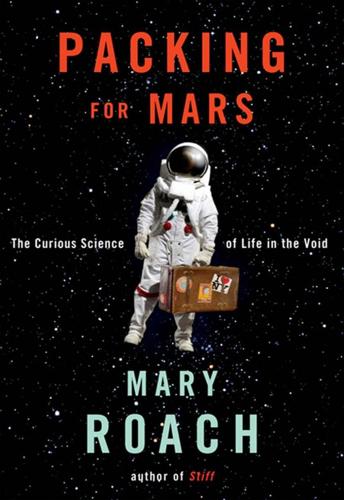
Packing for Mars: The Curious Science of Life in the Void
by
Mary Roach
Published 1 Jan 2010
I’ve been an astronaut for six years, and I’ve been in space for eight days.” Hadfield told me that the famous Apollo 13 incident—the explosion on the way to the moon and the solution Jim Lovell and his crewmates undertook—had actually been “simmed” by NASA at least once. Apparently everything Lovell did in space had been simmed on the ground. Including not taking a bath for two weeks. HOUSTON, WE HAVE A FUNGUS Space Hygiene and the Men Who Stopped Bathing for Science Jim Lovell is best known as the commander of Apollo 13, the astronaut with the problem. As anyone who’s seen the Tom Hanks movie knows, an oxygen tank exploded on the way to the moon, knocking out power in the Command Module and forcing Lovell and his two crewmates to hunker down in the Lunar Module for four days with limited oxygen, water, and heat.
…
As anyone who’s seen the Tom Hanks movie knows, an oxygen tank exploded on the way to the moon, knocking out power in the Command Module and forcing Lovell and his two crewmates to hunker down in the Lunar Module for four days with limited oxygen, water, and heat. For forty years, people have been coming up to Lovell saying, “My god, what an ordeal.” I said that to him too, but not in reference to Apollo 13. I was talking about Gemini VII: two men, two weeks, no bathing, same underwear. Inside a pressure suit, inside a capsule so cramped that Lovell could not straighten his legs. Gemini VII, launched on December 4, 1965, was a medical dress rehearsal for the Apollo lunar program. A round-trip moon mission takes two weeks, and no astronaut had spent that much time in zero gravity.
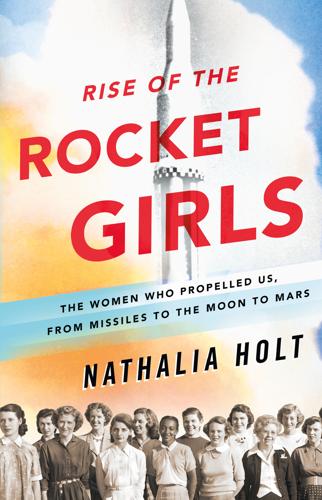
Rise of the Rocket Girls: The Women Who Propelled Us, From Missiles to the Moon to Mars
by
Nathalia Holt
Published 4 Apr 2016
One of the leaders, Hosea Williams, was quoted in the Rome (Georgia) News-Tribune as saying, “We are protesting our country’s inability to choose humane priorities.” Many, especially in the wake of the Apollo 13 disaster, shared his feelings. At NASA, it was generally expected that the program would run to Apollo 20, but that hope soon faded. After the success of Apollo 15, the first to include a three-day stay on the surface and a lunar rover, President Nixon considered canceling the program altogether. He worried that another disaster like Apollo 13 could be detrimental to his 1972 reelection campaign. Finally, he was persuaded to allow Missions 16 and 17 to go ahead. But it was clear there would be no more.
…
The men were just beginning to dip their toes into the technology, and they lagged behind their female colleagues. While those at JPL immersed themselves in emerging technology, Apollo missions were beginning to feel routine. On April 10, 1970, the news that the Beatles were breaking up far overshadowed the Apollo mission scheduled to take place the next day. Despite the lack of attention, Apollo 13 lifted off Earth smoothly and was on its way to the moon. But only two days later, an oxygen tank aboard the ship exploded two hundred thousand miles from Earth. Soon after astronaut Jim Lovell said, “Houston, we’ve had a problem,” the world became riveted. At mission control in Houston, NASA flight controllers acted heroically, abandoning the original mission of landing on the moon and transforming the lunar module into a lifeboat.
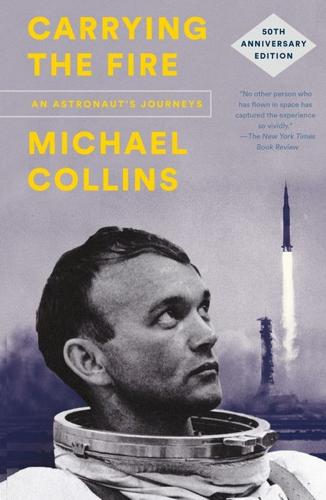
Carrying the Fire: An Astronaut's Journeys: 50th Anniversary Edition
by
Michael Collins
and
Charles A. Lindbergh
Published 15 Apr 2019
The most famous failure during a manned space flight was the oxygen tank rupture during Apollo 13. This is an example of the system at its worst and at its best. The possibility of a service module oxygen supply tank leak had been considered years before, but it was not deemed catastrophic because there was a second tank just like it, and they emptied evenly, so you always had some oxygen left; analysis showed you could always make it back to earth from the moon if you hurried. You had only to make sure to work your valves so that none of the oxygen from the remaining good tank vented overboard through the leak. O.K. so far. But when the tank on Apollo 13 blew, it did so with such destructive force that it ruptured the line leading from the other tank, a possibility the designers had never considered, and it rapidly became apparent that the two tanks were not truly independent of each other, as they were designed to be.
…
It became equally apparent that the command module, with Lovell, Swigert, and Haise inside, was rapidly running out of oxygen, which meant they would shortly be unable to generate electricity, produce drinking water, or breathe. Death for all three, because of a faulty plumbing design? It very nearly was, except that fortunately Apollo 13 was on its way to the moon, instead of returning from it, and the lunar module was still attached, with all its supplies of oxygen, water, and electricity untouched. Could they be used, could the LM be pressed into this unfamiliar role? Yes, it not only was theoretically possible but it had been considered before and documented in detail.
…
. “… We have regular abort times along the course to the moon … then we finally reach a point where it would be swifter to just go on around the moon than it would be to try to abort…” As it turned out, Borman didn’t need this kind of information, but his navigator, Jim Lovell, did a couple of years later. In fact, when a tank exploded and Lovell, Swigert, and Haise lost most of their oxygen on Apollo 13, they clearly owed their lives to the Houston computer and trajectory gnomes. Borman at the same press conference hit upon another vital point, namely that Apollo 8 was acting as a catalyst, a forcing function, to clear all closets of skeletons, to force people to state their doubts about going so far from home, and to cause the moon to become an arena of actual operations, not just some far-off place it was theoretically possible to visit “… We designed Apollo, we said we were going to the moon, and … finally when we get down to examining the details and saying we are really going, people start getting a little queasy about it.”
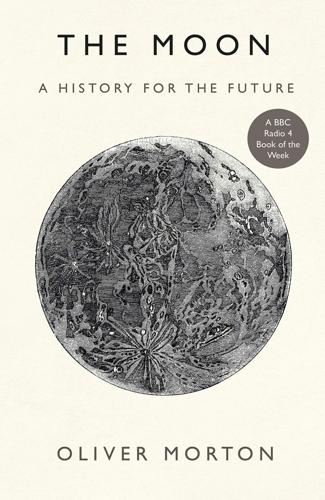
The Moon: A History for the Future
by
Oliver Morton
Published 1 May 2019
Theia’s off-centre impact would have applied a massive torque to Tellus, producing a planet that spun very rapidly and the Moon that would, over billions of years of tidal braking, slow it back down. Put forth after Apollo by, among others, Bill Hartmann—the man who first appreciated the ubiquity of ringed impact basins—and Don Davis, who helped guide Apollo 13 safely back to Earth, the giant-impact theory gained widespread credence in the mid-1980s. Early supercomputer models, some using code written to explore the effects of nuclear weapons, were able to sketch out what might have happened, an endeavour which seemed both sexy and confirmatory. But at the heart of the theory’s success were the twin virtues of a great deal of explanatory power and no serious rivals.
…
was changing: the ever-faster, ever-farther era that burst on it with the steam locomotives that rushed past the Bridgewater Foundry, and which heard its apotheosis in the thunder of the F-1 engine, was over. The taste for speed’s genuinely modern pleasure was sated. No humans have ever gone faster than the crew of Apollo 13. The shuttle’s military applications were also part of its attraction. But they were limited to putting spy satellites into low Earth orbit. It wasn’t as if there was anything farther out in space that people could any longer be scared —For years I’ve had a recurrent nightmare of waking up and seeing headlines that the Russians had landed on the Moon and declared the Lunar Soviet.
…
The trip—known as #dearMoon—is to be the simplest sort of Moon journey there is: a “free return” trajectory. The vehicle heads out to the Moon but instead of going into orbit simply swings round it and heads back to the Earth. It is the sort of trajectory that Luna 3, the Soviet probe which first saw the far side, used in 1959, and which the Apollo 13 mission resorted to after damage caused by an explosion in its service module precluded its planned orbit of the Moon. But if the trajectory is nothing new, the rest of the trip is unprecedented. It is being paid for by a private individual. It is being purchased from a private company. It will be undertaken on a spacecraft which could, in principle, make the journey again at a later date, a number of times.
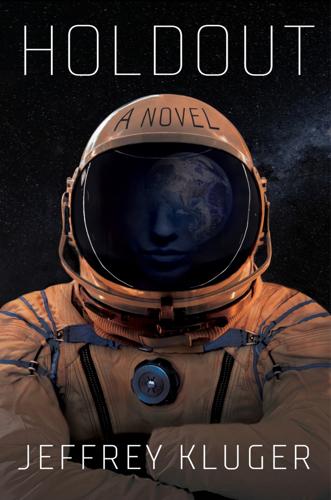
Holdout: A Novel
by
Jeffrey Kluger
Published 2 Aug 2021
ALSO BY JEFFREY KLUGER NONFICTION Apollo 13, with coauthor Jim Lovell The Apollo Adventure: The Making of the Apollo Space Program and the Movie Apollo 13 Journey Beyond Selene: Remarkable Expeditions Past Our Moon and to the Ends of the Solar System Splendid Solution: Jonas Salk and the Conquest of Polio Simplexity: Why Simple Things Become Complex (and How Complex Things Can Be Made Simple) The Sibling Effect: What the Bonds Among Brothers and Sisters Reveal About Us The Narcissist Next Door: Understanding the Monster in Your Family, in Your Office, in Your Bed—in Your World Apollo 8: The Thrilling Story of the First Mission to the Moon FICTION Nacky Patcher & the Curse of the Dry-Land Boats Freedom Stone YOUNG ADULT NONFICTION To the Moon!
…
Joy has long been—and will always be—deeply dear to me. Finally, my thanks and love to my daughters—all day, every day, forever and ever. ABOUT THE AUTHOR Jeffrey Kluger is an editor at large at Time, where he has written more than forty cover stories. He is the author or coauthor of twelve other books, including Apollo 13—which served as the basis of the 1995 movie—as well as two novels for young adults. What’s next on your reading list? Discover your next great read! Get personalized book picks and up-to-date news about this author. Sign up now.
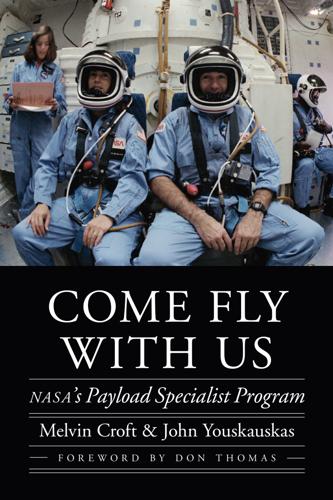
Come Fly With Us: NASA's Payload Specialist Program
by
Melvin Croft
,
John Youskauskas
and
Don Thomas
Published 1 Feb 2019
James Abrahamson, associate administrator in the Office of Space Flight at NASA Headquarters, had nothing but praise for the mission, exclaiming, “First of all, I assume that there is nobody that doesn’t think that this was a fabulous mission.” He believed the international cooperation “was just a fabulous success” and heralded “the tremendous start for the science and operational phase of this Spacelab program.” Abrahamson shared some comments from a former flight director who was instrumental in bringing home the Apollo 13 astronauts in 1970 after an explosion damaged their spacecraft on the way to the moon. “Gerry Griffin, the center director at Johnson, offered a complimentary perspective. He said that the way the whole team was working out problems today made him think back to some of the real challenges that the Apollo program and the Mercury and Gemini had.
…
He said that the way the whole team was working out problems today made him think back to some of the real challenges that the Apollo program and the Mercury and Gemini had. Said it really made him feel good because he saw that that team was not only still there but more polished and more oiled than before, so, this whole thing is a very human program.” Gene Kranz, another flight director involved in the Apollo 13 mission, was initially skeptical of whether the scientists could operate the POCC in the same professional and efficient fashion as the MCC was operated. Harry Craft, in The Spacelab Accomplishments Forum, shared that Kranz confessed to him following the mission, “I expected any day to have to pick you guys up off the floor.
…
The Hughes engineers assessed the situation and decided that the only logical culprit was a separation switch that controlled activation of the satellite. They began thinking of ways to determine if the switch was fully in the on position and, if not, how to get it there. Ground control began looking for a solution with a similar fervor to that which brought the Apollo 13 crew home safely in April 1970. Finally, the mission with no pizazz became really interesting; for the first time in the space program’s history, a shuttle crew would improvise a repair to a satellite they had just deployed. Jeff Hoffman and David Griggs were going to perform the first contingency EVA in NASA’s history.
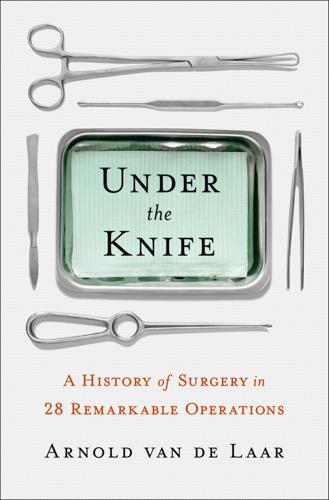
Under the Knife: A History of Surgery in 28 Remarkable Operations
by
Arnold van de Laar Laproscopic Surgeon
Published 1 Oct 2018
What is important is that, after the operation, Shepard no longer suffered from his attacks. NASA’s doctors examined him and passed him for flight duty. In May 1969, aged forty-five, Shepard was reinstated as an astronaut and began training for the Apollo 13 mission. But because of his age, he needed longer to get fit for the voyage to the Moon and so he was moved back one mission. A lucky decision for him, with hindsight, as Apollo 13 experienced trouble during the flight (the immortal words ‘Houston, we have a problem’ were uttered by the astronaut who replaced him). But, on 31 January 1971, Alan B. Shepard finally got his flight to the Moon.
…
Shepard, Edgar Mitchell, David Scott, James Irwin, John Young, Charles Duke, Harrison Schmitt and Eugene Cernan. Of them all, Shepard was the oldest. Imagine that, despite his endolymphatic-shunt operation, he had experienced symptoms of his disease while he was up there. He could have choked if he had vomited while wearing his helmet. After the drama of Apollo 13, that would have meant a definite end to the lunar missions. It is not known if he suffered symptoms of Ménière’s disease after returning to earth. Shepard died of leukaemia in 1998. 21 Umbilical Hernia The Miserable Death of a Stout Lady: Queen Caroline THE ANCIENT GREEK philosophers hit the nail on the head with their ideas about how the world works.
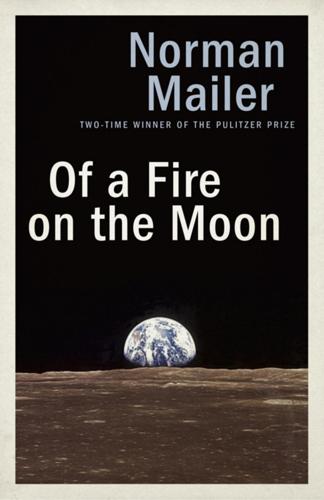
Of a Fire on the Moon
by
Norman Mailer
Published 2 Jun 2014
A variety of routes existed whenever it was desired to shift some system in Apollo 11 from one condition to another, just as one always has a choice of superhighways, highways, country roads, feeder roads, and in emergency, simple dirt lanes in transit from one place to another. So the electrical system had three fuel cells for powerplants, which each drew on two separate supplies of hydrogen and oxygen and had for products electricity, water, and heat. There was actually need for only one fuel cell, but they were relatively delicate (as Apollo 13 would once again prove), so for safety not two but three were installed, and since any one of them could be used at any moment, while the tanks of hydrogen and oxygen were doubled, there were in consequence six combinations for one source of power. Every part of every system which might be switched into other systems was capable of being employed that way.
…
Let us rather take a good look at the moon. She is now a presence outside the drawn shade of the capsule’s window, she is … she is not thirty-four thousand miles away and every instant nearer, and her pull upon the craft comes greater. Yes, let us look at the moon. * * * *No need to draw on the adventures of Apollo 13, nor the postponements of 14. CHAPTER 4 The Near Side and the Far Side On the fourth morning, a half hour after the usual routine of awakening on consumable updates, sleep reports, drift checks, REFSMMATs, fuel cell purges, PTC maneuvers, and radiator-flow checks, there was finally a conversation about their port of call.
…
Schirra had the keen cut of nose and cut of upturned lip which had him always looking about a room for the next fly he could catch. He looked more like a ruddy young movie executive than an astronaut. He never failed to smile. He smiled the way other people shake hands, or a cop directed traffic. Or Jim Lovell, who would command Apollo 13. He was big for an astronaut. Stolid. Imperturbable. He was reminiscent of the kind of clubfighter who usually came out of Canada—durable would be his middle name. You could hit such a fighter all night, but he would win the fight. Not by knockout. Points. Lovell would listen solemnly to such theories.

Super Thinking: The Big Book of Mental Models
by
Gabriel Weinberg
and
Lauren McCann
Published 17 Jun 2019
First principles are the group of self-evident assumptions that make up the foundation on which your conclusions rest—the ingredients in a recipe or the mathematical axioms that underpin a formula. Given a set of ingredients, a chef can adapt and create new recipes, as on Chopped. If you can argue from first principles, then you can do the same thing when making decisions, coming up with novel solutions to hard problems. Think MacGyver, or the true story depicted in the movie Apollo 13 (which you should watch if you haven’t), where a malfunction on board the spacecraft necessitated an early return to Earth and the creation of improvised devices to make sure, among other things, that there was enough usable air for the astronauts to breathe on the trip home. NASA engineers figured out a solution using only the “ingredients” on the ship.
…
Thank you to Michael Zakhar and Stephen Hanselman, as well as everyone else at Portfolio and Penguin for editing support, especially Vivian Roberson, Leah Trouwborst, and Kaushik Viswanath. Thank you to Madé Dimas Wirawan for his illustrations. Image Credits 1: Adapted from The Avengers, dir. Joss Whedon (Marvel Studios, 2012). 2: Adapted from Apollo 13, dir. Ron Howard (Imagine Entertainment, 1995). 3: Based on a meme from “What is the next step with our MVP?” Gerry Claps, Quora, September 10, 2015, www.quora.com/what-is-the-next-step-with-our-mvp. 4: Adapted from Creative Commons image: Ghiles, “Somewhat noisy linear data fit to both a linear function and to a polynomial of 10 degrees,” Wikimedia Commons, March 11, 2016, https://commons.wikimedia.org/wiki/File:Overfitted_Data.png. 5: Cartoon by Wiley Miller. 6: Headlines from August 31, 2015, on foxnews.com and cnn.com.
…
A&P, 70 absence of evidence is not the evidence of absence, 167 A/B testing, 136 Accidental Empires (Cringley), 253 accountability, 275 acne, 169–71 activation energy, 112–13 actor-observer bias (self-serving bias), 21, 272 Adams, John, 222 adaptability, 121, 129 ad hominem, 226 adverse selection, 46–47 advertising, 103–4, 120, 262 advisers, 44, 45, 296 Affordable Care Act (ACA), 46, 47 Afghanistan, 54, 243 agent, 44–45 aggregation, 205 aggression, obnoxious, 264 agreeableness, 250 AIDS, 233 Airbnb, 276, 288, 292 air pollution, 41 air travel, 53–54 Aldi, 70 Alexander, Christopher, 92 algorithms, 94, 97 Allen, David, 76 all-nighter, 83 alpha, 161, 182 al-Qaeda, 52, 54 alternative hypothesis, 163, 164, 166, 167 altruism, effective, 80 alumni, 119 Amazon, 61, 70, 95–96, 283, 290, 300 American Revolution, 221–22, 239, 240 American Statistical Association, 168 Amway, 217 analysis paralysis, 60–62, 93 anchoring, 14–15, 30, 199 anecdotal evidence, 133, 139, 146 antibiotics, 37, 47–49 Antifragile (Taleb), 2, 105 antifragility, 2–3, 31–33 anti-patterns, 93 AOL, 106 Apollo 13, 4 appeasement, 237 Apple, 103, 104, 231, 241, 258, 289–91, 305, 309 iPad, 290 iPod, 296–97 Newton, 290 approval ratings, 152–54, 158 arbitrage, 282–83 Archilochus, 254 Archimedes, 78 arguing from first principles, 4–7, 31, 207 Ariely, Dan, 14, 222–23 arithmetic, ix–x, 23–24, 30, 178 arms races, 209–12, 214 Ashley Madison, 229 Associated Press (AP), 306 asymmetric information, 45–47 atomic bomb, see nuclear weapons Atwood, Jeff, 253 authority, 219–20, 226 automation, 95, 310 availability bias, 15–18, 30, 33, 300 average, 146, 187 Avon, 217 Aztecs, 243–44 babies, 198, 279 sleep and, 131–32 babysitters, 222 backfire effect, 26 back-of-the-envelope calculation, 299 bacteria, 47–49, 295 bait and switch, 228, 229 bandwagon effect, 202 barriers to entry and barriers to exit, 305 baseball, 83, 145–46, 289 base rate, 157, 159, 160 base rate fallacy, 157, 158, 170 BATNA (best alternative to a negotiated agreement), 77 Battle of Heraclea, 239 Battle of Tsushima, 241 Bayes’ theorem and Bayesian statistics, 157–60 beachhead, 300–301 Beatles, 105 Beautiful Mind, A, 213 beliefs, 103, 107 bell curve (normal distribution), 150–52, 153, 163–66, 191 Bell Labs, 89 benefit of the doubt, 20 benefits: cost-benefit analysis, 177–86, 189, 194 eliminating, 224 net, 181–82, 184 Berlin, Isaiah, 254 Bernoulli distribution, 152 best practices, 92 beta, 162, 182 Better Angels of Our Nature, The (Pinker), 144 Bezos, Jeff, 61–62, 286–87 bias, 3, 139 availability, 15–18, 30, 33, 300 confirmation, 26–28, 33, 103, 159 disconfirmation, 27 groupthink, 201–3 hidden, 139–43 hindsight, 271–72 nonresponse, 140, 142, 143 observer-expectancy, 136, 139 optimistic probability, 33 present, 85, 87, 93, 113 publication, 170, 173 response, 142, 143 selection, 139–40, 143, 170 self-serving, 21, 272 survivorship, 140–43, 170, 272 Big Short, The (Lewis), 289 bike-shedding, 75, 93 Bird, Larry, 246 birth lottery, 21–22, 69 black-and-white thinking, 126–28, 168, 272 black boxes, 94–95 Black Flags rebellion, 276 blackouts, electric, 120 black swan events, 190–91, 193 Blank, Steve, 294 bleeding them dry, 239 blinded experiments, 136 Blockbuster, 106 blowback, 54 Boaty McBoatface, RSS, 35 body mass index (BMI), 137 body temperature, 146–50 boiling frog, 55, 56, 58, 60 bonds, 180, 184 Bonne, Rose, 58 Boot, Max, 239 boots on the ground, 279 Boston Common, 36–38, 42 Boyd, John, 294 Bradley, Bill, 248 brainstorming, 201–3 Brandeis, Louis, 307 breast cancer, 156–57, 160–61 Breathalyzer tests, 157–58, 160 Brexit, 206, 305 bright spots, 300 bring in reinforcements, 279 British Medical Journal (BMJ), 136–37 broken windows theory, 235–36 Broderick, Matthew, 230 Brody, William, 290–91 Brookings Institution, 306 brute force solution, 93, 97 Bryson, Bill, 50 budget, 38, 74–75, 81, 95, 113 national, 75–76 Buffett, Warren, viii, 69, 286, 302, 317, 318 burning bridges, 243 burnout, 82, 83 Burns, Robert, 49 burn the boats, 244 Bush, George H.
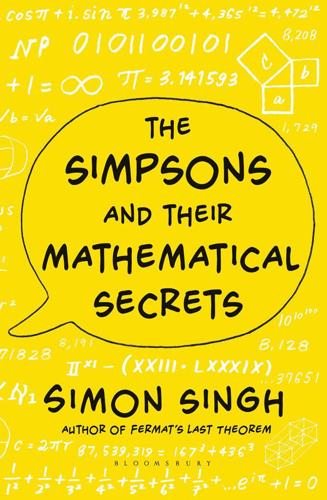
The Simpsons and Their Mathematical Secrets
by
Simon Singh
Published 29 Oct 2013
While the film was in production, the director advertised for experienced seamen of Anglo-Irish extraction to man the ships, and Westbrook volunteered because he was a keen sailor who fit the ethnic bill. As a result, he was given a minor role in the film alongside leading actor Russell Crowe. Crowe is important, because he was in The Quick and the Dead (1995) with Gary Sinise, who co-starred with Bacon in Apollo 13 (1995). Hence, Westbrook has a Bacon number of 3, which puts him just behind Stallone. In short, he has impressive Hollywood credentials. Thus, Westbrook has both a Bacon number of 3 and an Erdős number of 3. It is possible to combine these numbers into a so-called Erdős-Bacon number of 6, which gives an indication of Westbrook’s overall connectivity in the worlds of both Hollywood and mathematics.
…
Bayer was also given a minor role toward the end of the film, when the Princeton mathematics professors offer their pens to Nash to acknowledge his great discoveries. Bayer proudly explained: “In my scene, known as the Pen Ceremony, I say, ‘A privilege, professor.’ I’m the third professor to lay down a pen before Russell Crowe.” So, Bayer was in a Beautiful Mind, acting alongside Rance Howard. In turn, Rance Howard was in Apollo 13 with Kevin Bacon, which means that Bayer has a Bacon number of 2. As a highly respected mathematician, it is no surprise that Bayer has an Erdős number of 2, which gives him a combined Erdős-Bacon number of just 4. When A Beautiful Mind was released in 2001, Bayer claimed to have the world’s lowest Erdős-Bacon number.
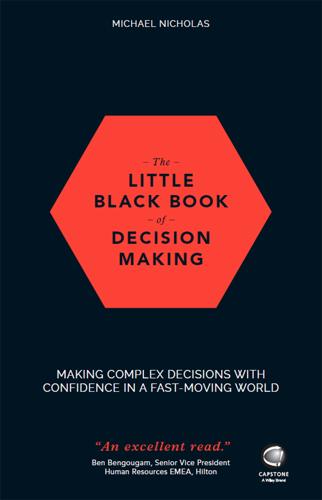
The Little Black Book of Decision Making
by
Michael Nicholas
Published 21 Jun 2017
First Appearances are Often Deceptive Full details of the events leading up to the Challenger disaster are a matter of public record,1 so I won't recount them in detail here. Bear in mind as you read the string of glaring errors below that this was the same organisation that achieved the incredible feat of landing men on the moon and returning them home safely, and which resolutely refused to succumb to the enormous challenges it faced in getting the stricken Apollo 13 crew back home safely when that mission suffered an oxygen tank explosion over two hundred thousand miles from Earth. Let's return to that ill-fated Tuesday morning in January 1986. Several key facts shed light on the finding of the Rogers Commission that decision-making errors were at the heart of the catastrophe: The O-rings had not been designed for use at the unusually cold conditions of the morning of the launch, which was approximately -2°C.
…
New companies would be created, there would be a period where basic principles for value creation were worked out, then the model would be set into the corporate culture and delivered via systems and processes designed to ensure prolonged success. Legend has it that in 1997, an unremarkable event occurred: a Blockbuster customer named Reed Hastings was charged $40 for the late return of “Apollo 13”.3 Blockbuster's late fees were highly profitable for the company, but much disliked by customers. But, unlike other customers, Reed Hastings didn't simply walk away dissatisfied – he created Netflix. From the start, he was was highly innovative: He wanted to get away from having employees and running shops, and so set up a model that used the post to distribute DVDs.
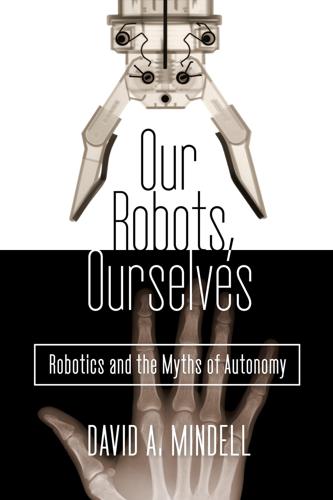
Our Robots, Ourselves: Robotics and the Myths of Autonomy
by
David A. Mindell
Published 12 Oct 2015
De Crespigny became so overwhelmed responding to the computers’ instructions that he could not diagnose the ultimate source of the failures. “It was like being in a military stress experiment . . . We were chasing a computer program around,” de Crespigny wrote, “when perhaps we should have been flying the plane and just landing.” Finally, de Crespigny recalled the actions of Flight Controller Gene Kranz during the Apollo 13 emergency: don’t focus on your failures, figure out what’s working, and work with that for a safe return. De Crespigny marshaled his remaining resources, focused his attention, and the crew landed flight QF32 safely back in Singapore with no injuries. Every time lives are lost due to human error, we can think of other times when they have been saved by human judgment and skill.
…
Abbott, Kathy, 75–76 ABE (autonomous benthic explorer), 54, 191–96 acoustic communications and, 195–96 geological mapping by, 192–93, 194 loss of, 191–92 nature of autonomy of, 194–97 original mission of, 192 acoustic communications, and AUVs, 195–96 acoustic transponder networks, for navigation, 29 Afghanistan, 139 Airbus, 86–87 A-310, 82 Flight QF32, 71–72, 77 aircraft/aviation, 69–111, 226–29 adding unmanned automation technology to, 215–18 Automated Labor In-cockpit System (ALIAS), 217–18 drones (See drones) FAA survey of technology and pilot skill, 2013, 75–76 future of, 110–11 heads-up display (HUD) and, 88–108, 225 history of, 77–84 landings and, 84–88 optionally piloted aircraft (OPAs), 213–15 pilots role in flying modern aircraft, 69–72, 75–77 synthetic vision and, 108–9, 225 technological change and increasing automation, effect of, 72–75 unmanned helicopters, 210–13 Air France Flight 447, 1–2, 1–4, 69–70, 72, 73, 81, 162, 196 Akers, Thomas, 170, 171–72 Alaska Airlines, 92 Alvin (deep-sea submersible), 26–30, 33–34, 35, 45–51, 57, 59–66, 176, 194, 197, 225 ABE’s geological mapping and, 192–93, 194 acoustic navigation system of, 29 arguments and justifications for new, 63–65 hydrogen bomb recovery effort using, 27 Jason, differences between and rivalry with, 59–62 plate tectonics evidence gathered by, 28–29 Titanic wreck and, 45–51 Amber, 126 amphoras, 23–24 AMUVS (Advanced Maneuverable Underwater Vehicle System), 43–44 ANGUS (Acoustically Navigated Geologic Underwater Survey System), 30–34 Apollo missions, 225 Apollo 11, 159–61 Apollo 13, 72 Apollo 15, 178 Apollo 17, 177, 179 field geology and, 176–79 Argo (tethered sled), 35–36, 41–43 Armstrong, Neil, 77, 78, 159–61, 221 Asiana Airlines, 106–7 Flight 214, 72, 106 Association for Unmanned Vehicle Systems International (AUVSI), 219 Atlantis II (research vessel), 45 Aurora Flight Sciences, 211, 214, 217 Automated Labor In-cockpit System (ALIAS), 217–18 automatic landing systems (autoland) Apollo landings and, 159–61 in commercial aviation, 86–88, 94, 97 space shuttles and, 161–63 automation, 4–6, 10, 11 automation bias, 74 automation dependency, 74 automation surprise, 74 automobiles, driverless.
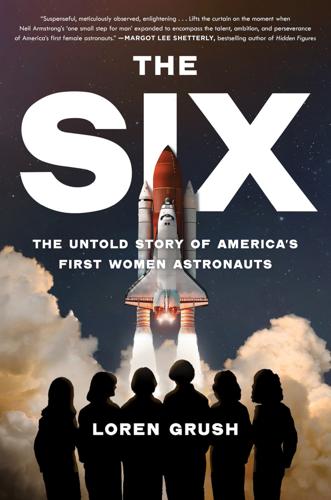
The Six: The Untold Story of America's First Women Astronauts
by
Loren Grush
Published 11 Sep 2023
But underlying everything they did was a silent acknowledgment of the enormous risk they were preparing themselves for. One training day, the ASCANs filed into a room to listen to a speech by Gene Kranz, the legendary flight director during the Apollo missions. He’d led the Mission Control team during the ill-fated Apollo 13 mission, when teams of NASA engineers helped save the crew from disaster when a fire started in their spacecraft’s oxygen tank. The ASCANs listened intently as Kranz wrapped up his talk. Then he got up to turn on a recording that was piped through speakers. At that moment, the ASCANs heard the voices of Gus Grissom, Ed White, and Roger B.
…
During one training run, the crew did every procedure they possibly could to overcome the swarm of virtual failures, and the Space Shuttle still crashed, theoretically killing them all. That moment shocked Sue. It served as a wake-up call that spaceflight wasn’t a risk-free enterprise. The last major spaceflight failure Sue remembered had been Apollo 13, and the crew had survived that one. After the Shuttle conducted its fourth flight, NASA had declared the vehicle “operational,” implying that all its subsequent flights would be routine and safe. That her friend might die in some fiery explosion sent shivers down Sue’s spine. But Sally, as was her way, didn’t betray any fear at all.
…
And the “D” referred to the mission’s payload being the fourth one manifested for fiscal year 1984. This was supposedly what a less complicated name looked like, in NASA’s eyes. Later, the astronauts would speculate there was a much more superstitious reason behind the name changes: NASA simply didn’t want to have an STS-13, given how Apollo 13 had fared. To Judy and the others whom George sat down with that day, they couldn’t care less what the flight was called. All that mattered was that they were now in the crew rotation. And Judy already knew some of her crewmates well. She’d worked with Steve and the Mikes before, and she’d grown closer to Steve because of her friendship with Sally.
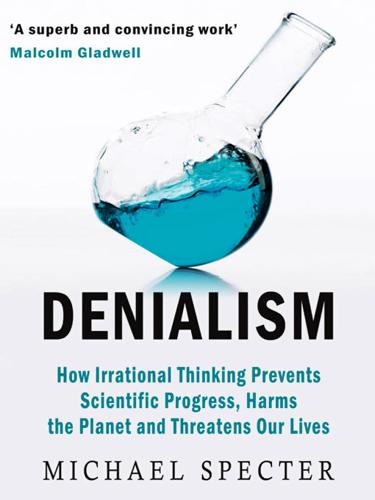
Denialism: How Irrational Thinking Hinders Scientific Progress, Harms the Planet, and Threatens Our Lives
by
Michael Specter
Published 14 Apr 2009
That’s why anyone alive on January 28, 1986, is likely to remember that clear, cold day in central Florida, when the space shuttle Challenger lifted off from the Kennedy Space Center, only to explode seventy-three seconds later, then disintegrate in a dense white plume over the Atlantic. It would be hard to overstate the impact of that accident. The space program was the signature accomplishment of American technology: it took us to the moon, helped hold back the Russians, and made millions believe there was nothing we couldn’t accomplish. Even our most compelling disaster—the Apollo 13 mission—was a successful failure, ending with the triumph of technological mastery needed to bring the astronauts safely back to earth. By 1986, America had become so confident in its ability to control the rockets we routinely sent into space that on that particular January morning, along with its regular crew, NASA strapped a thirty-seven-year-old high school teacher named Christa McAuliffe from Concord, New Hampshire, onto what essentially was a giant bomb.
…
See organic foods AIDS activism AIDS deniers AIDS epidemic AIDS virus albuterol Aleve (naproxen) alternative medicines and antioxidents and Briggs CAM dangers of deregulation of and food additives and food labeling and health care and HIV/AIDS homeopathy and nutrition and placebo effect and snake oil and supplements and Weil Alzheimer’s disease amalgam protestors American Association for the Advancement of Science American Medical Association (AMA) American Museum of Natural History, New York American Neurological Association, Eugenical Sterilization Ames, Bruce N. amorphadiene Amyris Biotechnologies anthrax attacks (2002) antibiotics antioxidents APOE protein Apollo 13 mission APP (amyloid precursor protein) APPROVe study Armstrong, Neil artemisinin arthritis, and Vioxx ashwagandha Asilomar Conference, California (1975) aspirin asthma: and genetics in Hispanics AstraZeneca atomic bomb Australasian Journal of Bone and Joint Medicine authority, questioning autism: advocacy groups on anecdotal evidence on blame sought in cases of definitions of developmental disorders in and fear genetic research on litigation-driven hypotheses on research funding on rise in cases of and special education and state aid symptoms similar to mercury poisoning and vaccines avian influenza ayurvedic medicine Bacon, Francis Baltimore, David BASF, and canola Benedetti, Fabrizio Berg, Paul Bextra Big Oil Big Pharma Big Tobacco Bill and Melinda Gates Foundation BioBricks biochemistry Biodesic biofuels biotech games biotechnology: birth of and organic food risks of and world hunger bioterrorism bird flu birth control pills, deaths from Blair, Cherie Blair, Tony Blake, William Blue Heron Borlaug, Norman Borloo, Jean-Louis Briggs, Josephine Bromley.
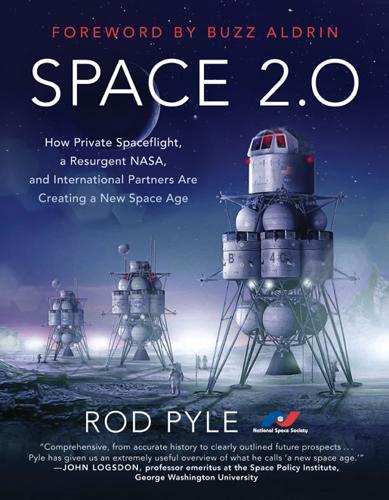
Space 2.0
by
Rod Pyle
Published 2 Jan 2019
Let me repeat that: America was giving up its sole functioning capability to fly astronauts to the space station that we had designed and built, at staggering expense, without a domestic replacement. This stunned much of the spaceflight community, and a lot of people, including a number of Apollo-era astronauts, were quite vocal in their dissent. Neil Armstrong, the first man to walk on the moon; Jim Lovell of Apollo 13 fame; and Gene Cernan, the last man to depart the lunar surface, all strongly condemned the decision. In an open letter to the president, the three former astronauts explained that the choice to cancel the Constellation program was “devastating.” The letter continued: “America’s only path to low Earth orbit and the International Space Station will now be subject to an agreement with Russia to purchase space on its Soyuz . . . until we have the capacity to provide transportation for ourselves.
…
INDEX Note: Page numbers in italic refer to photos or illustrations and accompanying captions A AAS (American Astronautical Society), 267 Abbey, George, 195 ACES. see Advanced Cryogenic Evolved Stage acid rain, 228 active radiation shielding, 90–91 Adams, Douglas, 261 Ad Astra magazine, 266 Aditya satellite, 177 Advanced Cryogenic Evolved Stage (ACES), 145, 145–148, 208–209 Advanced Development Programs, 138 Advanced Programs (ULA), 147 Aerospace Corporation, 125 AIAA (American Institute for Aeronautics and Astronautics), 267 Airbus A380 jumbo jet, 129 air circulation, 74, 74 airliners, commercial, 120, 245 Aldrin, Buzz, 45, 73, 168, 170, 211–212, 251 Aldrin Cyclers, 211–212, 213 Allen, Paul, 102, 151 Altair, 8 aluminum, spacecraft construction material, 87, 87 Alzheimer’s disease, 86 Amazon.com, 35, 136, 136, 236 American Astronautical Society (AAS), 267 American Institute for Aeronautics and Astronautics (AIAA), 267 Ames Research Center, 199 Anderson, Chad, 155, 155–158, 220 Angara rocket, 186 Antarctic Treaty (1959), 165, 218 Antares rocket, 153, 153 anti-satellite weapons (ASAT), 170 Apollo program (in general) capsules, 18, 19 cost of, 27 defined, 289 docking with Soyuz, 166 and Gemini flights, 44 inspiration from, 31, 32 lunar landing program, xiii–xiv, 13, 44, 55, 65, 141, 214 Lunar Module, 141 radiation exposure, 82–83 reentering of, into Earth’s atmosphere, 19 replacement of, 13 scientific samples from, 219 Apollo 8 mission, 32, 184 Apollo 11 mission, 45, 168, 184 Apollo 13 mission, 7 Apollo 14 mission, 32 Apollo 16 mission, 71 Apollo 17 mission, xiii, 23, 205 Apollo-Soyuz Test Project (ASTP), 165–166 Apophis (asteroid), 230 Apple, Inc., 157 ARM (Asteroid Redirect Mission), 9, 10 Armageddon (movie), 230 Arms Export Control Act, 169 Armstrong, Neil, xiii, 6, 7, 8, 45, 73–74 artificial gravity, 80, 80–82 ASAT (anti-satellite) weapons, 170 Asteroid Redirect Mission (ARM), 9, 10 asteroids, 64, 158 Chicxulub impactor, 223–224 Chinese intentions of exploring, 197 collecting resources from, 205, 206, 218 defending Earth from, 223–231, 248 destruction of, 228–229, 230, 231 detection of, 224 Hayabusa, 175 impact of, 227 mining resources from, 88, 89 as outposts, 64 radiation exposure on, 83 traveling to, 60 ASTP (Apollo-Soyuz Test Project), 165–166 astronauts, 69–91 and artificial gravity, 80–82 effects of cramped quarters on, 76–80 and global perspective, 32 medical experiments involving, 72–76 and radiation, 82–91 suits for, 69–71, 199 “taikonauts,” 192, 193 ATK, 152 Atlantis, 2–7, 12 Atlas rocket, 11, 118, 122, 142, 164, 175, 187 Atlas V, 289 design of, 142 preparing for launch, 143, 147 Russian parts on, 140, 149 sales of, 188 and Starliner, 50 US Air Force payload with, 119 as US rocket, 55 Vulcan as replacement for, 135, 143 Atomic Energy Commission, 214 AT&T, 211 ATV (Automated Transfer Vehicle), 172 aurora, 61 Ausbun, Kaylee, 115 Australia, 270 Australian Space Research Institute, 270 Automated Transfer Vehicle (ATV), 172 Axiom Space, 55 B B-52 bomber, 96, 96 Bangladesh, 180 BE-3 engine, 139 BE-4 engine, 139–140, 140 BEAM (Bigelow Expandable Activity Module), 54, 54 Bell Laboratories, 211 Bezos, Jeff and Blue Origin, 135–136, 136, 140–141, 236 future visions for Earth, 35–36 and international space agencies, 181 as space investor, 151, 154 and Virgin Galactic, 101–102 Bigelow, Robert, 54 Bigelow Aerospace, 246 Bigelow Expandable Activity Module (BEAM), 54, 54 Bigelow expandable modules, 247 Bigelow habitation module, 237 Bigelow test module, 55 Big Falcon Rocket, 86, 125, 129, 244, 245, 249 Big Falcon Spaceship, 129, 244, 245, 249 “billionaires’ club,” 151, 154 Block 1 shuttle, 53 Block 5 rocket, 126 Bloom, Howard, 34 Blue Moon lander, 141, 141, 211, 218, 244, 246, 247 Blue Origin, 135–141 Advanced Development Programs, 138 BE-3 engine, 139 BE-4 engine, 138, 139–140, 140 Jeff Bezos and, 35–36, 136, 236 Blue Moon lander, 211, 218, 247 cislunar infrastructure with, 246 defined, 289 Rob Meyerson and, 139 New Glenn rocket, 136, 244, 245 New Shepard, 51, 51, 137 and new space race, 135–141 pilot space settlements by, 248 public support of, 252 and reusability, 186, 197, 204 as rival to Virgin Galactic, 101–102 rockets of, 55 suborbital test flights from, 127 for tourist flights, 59, 245 and United Launch Alliance, 187–188 Boeing commercial space provider, 2, 158 late deadlines of, 7, 187 NASA partnerships with, 140, 141, 210 as private launch company, 9–11, 157, 185 Starliner program, 12, 50, 50 Bolden, Charles, 116 bone-density loss, 72, 73 Bowie, David, 260 Branson, Richard, 51, 94, 97, 97, 100 breakthrough technologies, 217 Brezhnev, Leonid, 165–166 British Interplanetary Society, 268 Brookhaven National Lab, 86 Bruno, Tory, 143, 143–145, 147, 148 Buran space shuttle, 184 Bureau of Political-Military Affairs, 169 Bush, George W., 6, 214 C California Central Coast, 112 caloric intake, 76 Caltech, 36 Canadarm robots, 179, 179 Canadian Space Agency, 48, 113, 167 accomplishments of, 179 Canadarm, 179 NASA partnership with, 179 Canadian Space Society, 269 Cantrell, Jim, 104 carbon dioxide “bubbles,” 74, 74 Cardon, Thatcher, 108 Carina (constellation), 83 Cassini-Huygens mission, 169–170 Cassini mission, 169–170, 170 CASSIOPE satellite, 113, 133 Centre national d’études spatiales (CNES), 172 centrifugal force, 22, 80–81 centrifuges, 81, 81–82 Cernan, Gene, 7, 8, 205 Challenger disaster, 5–6 Chandrayaan satellites, 177 Chang-Díaz, Franklin, 32–33, 33, 252 Chiao, Leroy, 195 Chicxulub impact, 223–224, 225 Chinese National Space Agency (CNSA), 191–200, 289 budget of, 196 crewed stations in LEO, 61, 62 first trip to space, 48 habitation modules created by, 247 launch costs lowered by, 148, 246 and Mars-500 study, 79 and militarization of space, 170–171, 220–221 moon landing planned by, 65 as new space power, xiv, 12, 188 radiation guidelines of, 86 and space entrepreneurs, 181 stated intentions of, 196, 197 Tiangong stations launched by, 54 unsuccessful Mars voyages of, 177 Chryse Planitia, 250 Chrysler corporation, 125 CisLunar-1000 Economy, 207, 208, 214–215 cislunar space, 60, 60, 246–248 clean-sheet design, 289 Clinton, Bill, 167 CNES (Centre national d’études spatiales), 172 CNSA. see Chinese National Space Agency COLBERT space treadmills, 82 Cold War, 12–13, 28, 42, 72, 141, 171, 192, 198 Collins, Mike, xiii, 73 Colorado School of Mines, 147, 208 Columbia, 5 Columbus module, 172–173 comets, 224 commercial airliners, 120, 245 Commercial Crew Program, 135 commercialization of space, 212–217, 234 Commercial Orbital Transportation Services (COTS), 130, 194, 215, 289 Commercial Resupply Services (CRS), 215–216, 289 Commercial Space Launch Competitiveness Act (2015), 219 Conrad, Pete, 72 Constellation program, 6–9, 8, 141 Convair, 142 cooperation, international. see international cooperation COTS. see Commercial Orbital Transportation Services cramped quarters, psychological effects of, 76–80 craters, 224, 227 Cretaceous Period, 223 crewed landings, 247 crewed stations, 61–62, 64, 184 CRS (Commercial Resupply Services), 215–216, 289 cryogenic state (fuel), 148 cubesats, 103, 104–106, 106, 160 Cultural Revolution (1966), 192 Cupola, 77 Curiosity Mars rover, 84, 85 Cygnus, 12, 152, 153 D DART mission (Double Asteroid Redirection Test), 228, 228–229 deep-space economy, 206, 208–211 Deep Space Gateway, 241–242 Deep Space Industries, 180, 217, 218 defense systems, 248 Defense Trade Controls, 169 deflector shields, 90 Deimos, 60, 175 Delta IV Heavy, 142, 146 Delta IV rocket, 52, 55, 135, 142, 146, 289 Delta rockets, 118, 122 delta-v, 19–20 Denmark, 156 depression, in astronauts, 79 Deutsches Zentrum für Luft- und Raumfahrt e.
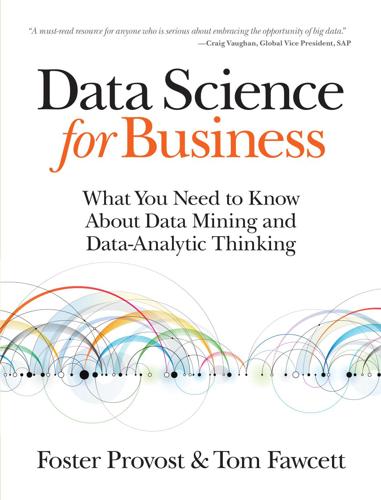
Data Science for Business: What You Need to Know About Data Mining and Data-Analytic Thinking
by
Foster Provost
and
Tom Fawcett
Published 30 Jun 2013
In reality, the business and data science team should be prepared for all manner of mess and contraints, and must be flexible in dealing with them. Sometimes there is a wealth of data and data science techniques available to be brought to bear. Other times the situation seems more like the critical scene from the movie Apollo 13. In the movie, a malfunction and explosion in the command module leave the astronauts stranded a quarter of a million miles from Earth, with the CO2 levels rising too rapidly for them to survive the return trip. In a nutshell, because of the constraints placed by what the astronauts have on hand, the engineers have to figure out how to use a large cubic filter in place of a narrower cylindrical filter (to literally put a square peg in a round hole).
…
In a nutshell, because of the constraints placed by what the astronauts have on hand, the engineers have to figure out how to use a large cubic filter in place of a narrower cylindrical filter (to literally put a square peg in a round hole). In the key scene, the head engineer dumps out onto a table all the “stuff” that’s there in the command module, and tells his team: “OK, people … we got to find a way to make this fit into the hole for this, using nothing but that.” Real data science problems often seem more like the Apollo 13 situation than a textbook situation. For example, Perlich et al. (2013) describe a study of just such a case. For targeting consumers with online display advertisements, obtaining an adequate supply of the ideal training data would have been prohibitively expensive. However, data were available at much lower cost from various other distributions and for other target variables.
…
–Summary applying to business questions, Answering Business Questions with These Techniques–Answering Business Questions with These Techniques baseline performance and, Evaluation, Baseline Performance, and Implications for Investments in Data–Evaluation, Baseline Performance, and Implications for Investments in Data classification accuracy, Plain Accuracy and Its Problems–Generalizing Beyond Classification confusion matrix, The Confusion Matrix–The Confusion Matrix data warehousing, Data Warehousing database queries, Database Querying–Database Querying expected values, A Key Analytical Framework: Expected Value–Costs and benefits generalization methods for, Generalizing Beyond Classification–Generalizing Beyond Classification machine learning and, Machine Learning and Data Mining–Machine Learning and Data Mining OLAP, Database Querying regression analysis, Regression Analysis statistics, Statistics–Statistics analytic technologies, Data Preparation analytic tools, Holdout Data and Fitting Graphs Angry Birds, Example: Evidence Lifts from Facebook “Likes” Annie Hall (film), Data Reduction, Latent Information, and Movie Recommendation Apollo 13 (film), Examine Data Science Case Studies Apple Computer, Example: Clustering Business News Stories–The news story clusters, The Data applications, The Ubiquity of Data Opportunities, Decision Analytic Thinking I: What Is a Good Model? area under ROC curves (AUC), The Area Under the ROC Curve (AUC), Example: Performance Analytics for Churn Modeling, Example: Performance Analytics for Churn Modeling Armstrong, Louis, Example: Jazz Musicians assessing overfitting, Overfitting association discovery, Co-occurrences and Associations: Finding Items That Go Together–Associations Among Facebook Likes among Facebook Likes, Associations Among Facebook Likes–Associations Among Facebook Likes beer and lottery example, Example: Beer and Lottery Tickets–Example: Beer and Lottery Tickets eWatch/eBracelet example, Co-occurrences and Associations: Finding Items That Go Together–Co-occurrences and Associations: Finding Items That Go Together Magnum Opus system for, Associations Among Facebook Likes market basket analysis, Associations Among Facebook Likes–Associations Among Facebook Likes surprisingness, Measuring Surprise: Lift and Leverage–Measuring Surprise: Lift and Leverage AT&T, From an Expected Value Decomposition to a Data Science Solution attribute selection, Introduction to Predictive Modeling: From Correlation to Supervised Segmentation, Selecting Informative Attributes–Supervised Segmentation with Tree-Structured Models, Example: Attribute Selection with Information Gain–Example: Attribute Selection with Information Gain, The Fundamental Concepts of Data Science attributes, Models, Induction, and Prediction finding, Introduction to Predictive Modeling: From Correlation to Supervised Segmentation heterogeneous, Dimensionality and domain knowledge, Heterogeneous Attributes variable features vs., Models, Induction, and Prediction Audubon Society Field Guide to North American Mushrooms, Example: Attribute Selection with Information Gain automatic decision-making, Data Science, Engineering, and Data-Driven Decision Making average customers, profitable customers vs., Answering Business Questions with These Techniques B bag of words approach, Bag of Words bags, Bag of Words base rates, Class Probability Estimation and Logistic “Regression”, Holdout Data and Fitting Graphs, Problems with Unbalanced Classes baseline classifiers, Advantages and Disadvantages of Naive Bayes baseline methods, of data science, Summary Basie, Count, Example: Jazz Musicians Bayes rate, Bias, Variance, and Ensemble Methods Bayes, Thomas, Bayes’ Rule Bayesian methods, Bayes’ Rule, Summary Bayes’ Rule, Bayes’ Rule–A Model of Evidence “Lift” beer and lottery example, Example: Beer and Lottery Tickets–Example: Beer and Lottery Tickets Beethoven, Ludwig van, Example: Evidence Lifts from Facebook “Likes” beginning cross-validation, From Holdout Evaluation to Cross-Validation behavior description, From Business Problems to Data Mining Tasks Being John Malkovich (film), Data Reduction, Latent Information, and Movie Recommendation Bellkors Pragmatic Chaos (Netflix Challenge team), Data Reduction, Latent Information, and Movie Recommendation benefit improvement, calculating, Costs and benefits benefits and underlying profit calculation, ROC Graphs and Curves data-driven decision-making, Data Science, Engineering, and Data-Driven Decision Making estimating, Costs and benefits in budgeting, Ranking Instead of Classifying nearest-neighbor methods, Computational efficiency bi-grams, N-gram Sequences bias errors, ensemble methods and, Bias, Variance, and Ensemble Methods–Bias, Variance, and Ensemble Methods Big Data data science and, Data Processing and “Big Data”–Data Processing and “Big Data” evolution of, From Big Data 1.0 to Big Data 2.0–From Big Data 1.0 to Big Data 2.0 on Amazon and Google, Thinking Data-Analytically, Redux big data technologies, Data Processing and “Big Data” state of, From Big Data 1.0 to Big Data 2.0 utilizing, Data Processing and “Big Data” Big Red proposal example, Example Data Mining Proposal–Flaws in the Big Red Proposal Bing, Why Text Is Important, Representation Black-Sholes model, Models, Induction, and Prediction blog postings, Why Text Is Important blog posts, Example: Targeting Online Consumers With Advertisements Borders (book retailer), Achieving Competitive Advantage with Data Science breast cancer example, Example: Logistic Regression versus Tree Induction–Example: Logistic Regression versus Tree Induction Brooks, David, What Data Can’t Do: Humans in the Loop, Revisited browser cookies, Example: Targeting Online Consumers With Advertisements Brubeck, Dave, Example: Jazz Musicians Bruichladdich single malt scotch, Understanding the Results of Clustering Brynjolfsson, Erik, Data Science, Engineering, and Data-Driven Decision Making, Data Processing and “Big Data” budget, Ranking Instead of Classifying budget constraints, Profit Curves building modeling labs, From Holdout Evaluation to Cross-Validation building models, Data Mining and Its Results, Business Understanding, From Holdout Evaluation to Cross-Validation Bunnahabhain single malt whiskey, Example: Whiskey Analytics, Hierarchical Clustering business news stories example, Example: Clustering Business News Stories–The news story clusters business problems changing definition of, to fit available data, Changing the Way We Think about Solutions to Business Problems–Changing the Way We Think about Solutions to Business Problems data exploration vs., Stepping Back: Solving a Business Problem Versus Data Exploration–Stepping Back: Solving a Business Problem Versus Data Exploration engineering problems vs., Other Data Science Tasks and Techniques evaluating in a proposal, Be Ready to Evaluate Proposals for Data Science Projects expected value framework, structuring with, The Expected Value Framework: Structuring a More Complicated Business Problem–The Expected Value Framework: Structuring a More Complicated Business Problem exploratory data mining vs., The Fundamental Concepts of Data Science unique context of, What Data Can’t Do: Humans in the Loop, Revisited using expected values to provide framework for, The Expected Value Framework: Decomposing the Business Problem and Recomposing the Solution Pieces–The Expected Value Framework: Decomposing the Business Problem and Recomposing the Solution Pieces business strategy, Data Science and Business Strategy–A Firm’s Data Science Maturity accepting creative ideas, Be Ready to Accept Creative Ideas from Any Source case studies, examining, Examine Data Science Case Studies competitive advantages, Achieving Competitive Advantage with Data Science–Achieving Competitive Advantage with Data Science, Sustaining Competitive Advantage with Data Science–Superior Data Science Management data scientists, evaluating, Superior Data Scientists–Superior Data Scientists evaluating proposals, Be Ready to Evaluate Proposals for Data Science Projects–Flaws in the Big Red Proposal historical advantages and, Formidable Historical Advantage intangible collateral assets and, Unique Intangible Collateral Assets intellectual property and, Unique Intellectual Property managing data scientists effectively, Superior Data Science Management–Superior Data Science Management maturity of the data science, A Firm’s Data Science Maturity–A Firm’s Data Science Maturity thinking data-analytically for, Thinking Data-Analytically, Redux–Thinking Data-Analytically, Redux C Caesars Entertainment, Data and Data Science Capability as a Strategic Asset call center example, Profiling: Finding Typical Behavior–Profiling: Finding Typical Behavior Capability Maturity Model, A Firm’s Data Science Maturity Capital One, Data and Data Science Capability as a Strategic Asset, From an Expected Value Decomposition to a Data Science Solution Case-Based Reasoning, How Many Neighbors and How Much Influence?

Blink: The Power of Thinking Without Thinking
by
Malcolm Gladwell
Published 1 Jan 2005
“Everybody said that they couldn’t see Tom Hanks as an astronaut,” Grazer says of his decision to cast Hanks in the hit movie Apollo 13. “Well, I didn’t know whether Tom Hanks was an astronaut. But I saw this as a movie about a spacecraft in jeopardy. And who does the world want to get back the most? Who does America want to save? Tom Hanks. We don’t want to see him die. We like him too much.” If we couldn’t thin-slice—if you really had to know someone for months and months to get at their true selves—then Apollo 13 would be robbed of its drama and Splash would not be funny. And if we could not make sense of complicated situations in a flash, basketball would be chaotic, and bird-watchers would be helpless.

The Battery: How Portable Power Sparked a Technological Revolution
by
Henry Schlesinger
Published 16 Mar 2010
Apparently, the American military had shared the top-secret technology with the Soviet Union during the war. Even more surprising, in 1961 an official Soviet government publication called Knowledge Is Power gave credit to the United States for development of the batteries. It would not be the last time Ruben’s batteries traveled into space. During the failed Apollo 13 mission, astronauts used light-up pens powered by Ruben’s cells as a light source. “As you know, due to the explosion, we were forced to ration our electric power and water. With regards to the former, we never turned on the lights in the spacecraft after the accident,” the astronauts James Lovell, Fred Haise, and John Swigert wrote Ruben.
…
AAA battery, 142, 214, 224 AA battery, 142, 267, 268, 273 Abramson, Moe, 249 AC current, 221 acid, 67, 68, 87, 94, 122, 127, 139, 142, 143, 145, 163, 170, 171, 172, 221 Acousiticon, 215 Adams, Joseph H., Harper’s Electricity Boom for Boys, 201–202 advertising, 213–15, 229, 231, 252, 273 airplane, 200 alchemy, 4, 6, 16, 143 Aldini, Giovanni, 53–54, 62 alkaline battery, 172–75, 249–50, 270, 271 alkaline manganese battery, 224 Altair 8800, 202–203 Amazing Stories, 203 amber, 3, 6, 11, 13, 14 America, 29–38, 78, 110, 188 nineteenth-century science, 78–94 telegraph, 103–118, 129–40 See also specific inventions American Ever-Ready Company, 181, 183 American Journal of Science, 82 American Marconi Company, 205–206 ammonium chloride, 142 Ampère, André-Marie, 74, 129 amp, 81, 128, 129 amplifier, 243–44 anatomy, 19, 43 ancient world, 2–6, 11 animal electricity, 39–44, 45, 47, 50, 53, 162 anode, 77, 86, 87 Apollo 13, 235–36 arc lights, 147, 148, 153 Arfwedson, Johan, 271 Aristotle, 2, 4, 14 AT&T, 133, 210, 247 Atlantic Telegraph Company, 120, 126 atomic clock, 242–43 Augustine, St., 7, 82 City of God, 7 Automatic Radio Corporation, 251 automobiles, 173, 250, 257 electric, 173–75, 281 industry, 219 radio, 230 Auto-Sembly process, 249 baby boomers, 256, 257 Bacon, Francis, 16, 17, 18 New Atlantis, 16 Bacon, Roger, Opus majus, 9 BA 5590, 275 Baghdad battery, 283–85, 285, 286–87 Banks, Sir Joseph, 46, 47, 48, 71 Bardeen, John, 244, 247 battery: alkaline, 172–73, 174–75, 249–50, 270, 271 dry cell, 143, 160, 179–80, 180, 181, 181, 190, 199, 213, 249, 271 early-mid nineteenth century, 46–50, 51–68, 69–96, 97–131 early-mid twentieth century, 175, 198–212, 213–50 early radio, 198–212, 221–24, 251–61 future, 279–82 Galvani, 39–46 Grove, 67–68, 87, 95, 96, 110, 113, 139, 144, 146 industry, 139–40, 219–20, 239 Leclanché, 142–43, 143, 144, 160, 179 mid-late nineteenth century, 108–130, 131–40, 141–68, 169–94 mid-late twentieth century, 236–50, 251–73 patents, 49–50, 179 Planté cell, 144–46, 250 rechargeable, 144–46, 190, 268–69, 270–73, 276, 276, 277–78 storage, 144–46, 151–55, 190, 221, 250 telegraph and, 97–140 terminology, 37, 49, 76–77, 81, 142 twenty-first century, 274–78 voltaic, 43–50, 52, 65, 85, 108 World War II and, 225–36 See also specific batteries and inventors battery eliminator, 224 Baum, L.

Chasing New Horizons: Inside the Epic First Mission to Pluto
by
Alan Stern
and
David Grinspoon
Published 2 May 2018
We won’t have learned much of anything about Pluto, and New Horizons will become a poster child for dashed dreams and failure.” THE LINK As soon as Alan reached the large, mostly windowless office building where the MOC was housed, he parked, pushed dark thoughts out of his mind, and went in to get to work. The MOC looks very much like you’d expect a spacecraft control center to look, just like in Apollo 13 or other space movies: dominated by the glow of giant projection screens along the walls, and rows of smaller computer screens at consoles. Throughout the nine long years of travel toward the ninth planet, the radio link to New Horizons was the lifeline that allowed its team to contact and control the craft and to receive spacecraft status and data from its observations.
…
Alan: They literally said, “We can fuel the RTG a day later, on Saturday the 14th, if you prefer, and we’ll even pay the overtime for it. We just don’t want you worried at launch or as you fly it to Pluto that the spacecraft went live on Friday the 13th.” The first thing that came to my mind was a boyhood memory of Apollo 13, and how some people then had thought they should never have given the mission the number 13, or launched it at 13:13 on the clock in Houston. But then I reminded myself: I’m a scientist. Superstitions about Friday the 13th are completely irrational. So I decided that fueling on the 13th was preferable to giving up another precious day of launch window and that instead we would make Friday the 13th a rallying cry for the project.

How to Spend a Trillion Dollars
by
Rowan Hooper
Published 15 Jan 2020
It provides clean water and produces oxygen; it cycles the water around the planet; it regulates the climate and cleans the air. If something goes wrong on our spacecraft, we will get into trouble. Remember Apollo 13 and ‘Houston, we have a problem’?* Something went wrong on the way to the Moon and carbon dioxide in the spacecraft started building up to dangerous levels. The analogy to the world right now is uncomfortably close, but where it breaks down is that NASA was able to save the lives of the three astronauts on Apollo 13 through engineering ingenuity. Our life support problem is on another scale. A rich biosphere is essential for ecosystems to function properly.

Ghost Work: How to Stop Silicon Valley From Building a New Global Underclass
by
Mary L. Gray
and
Siddharth Suri
Published 6 May 2019
By 1946, Langley Field’s campus had reorganized as the National Advisory Committee for Aeronautics (NACA), NASA’s precursor, with only a handful of women holding the professional title “mathematician.”30 The majority remained designated as lower-paid “subprofessionals” for several years after the war, including African American engineer Katherine Johnson, featured in the 2016 hit movie Hidden Figures, who would go on to calculate the launch windows for Apollo 13.31 The lower wages and ranking attached to computers reduced lab costs. Directors could justify the entry-level, contract-based assignments because none of the women hired would be considered “professional” with no more than high school or vocational training. Johnson and fellow lead computer Dorothy Vaughan, who ran Langley’s all-black “West Area Computers” wing, were hired at Grade P-1.
…
[back] Index A | B | C | D | E | F | G | H | I | J | K | L | M | N | O | P | Q | R | S | T | U | V | W | X | Y | Z 80/20 rule, 101–5, 163, 171 A Abel, Marjorie, 227 n8 Accord on Fire and Building Safety, 193 account suspensions, 67, 78–79, 85–91, 134, 188 accountability, xxx–xxxi, 72, 142–43, 144, 147, 194 advancement on-demand work as stepping stone, 109–13 lack of, 95, 97–101 on LeadGenius, 149–50 Affordable Health Care, 189 Akbar, 132 Alcala, Aleli, 153, 154, 155 algorithmic cruelty, 67–93 background of, 67–68 Facebook and, 67–68, 232 n1 hypervigilance vs flexibility, 76–80 inequality of power in, 91–93 isolation vs autonomy, 80–84 payment, lack of, 85–91 transaction costs, requesters, 70–75 transaction costs, workers, 75–76, 174, 182–83, 184–85 algorithms, 67–68 AlphaGo, xx, 220 n14 AlphaGo Zero, xx, 220 n14 alternative work arrangements, 168–69 always-on workers, 104, 105, 126, 150–51, 158–59, 170, 190 Amara collaboration, 183 competition, 161 demographics, 226 n31 description of, xxix, 27 history of, 225 n29, 241 n12 investment of, 164–65 Karen on, 26–31 skill development, 111, 113 volunteers as workers, 152–55 Amara On Demand (AOD) Team, 27, 30, 153–55 Amazon Mechanical Turk (MTurk). See MTurk Amazon Pay, 14–15 Amazon.com, 1–2 Anand, 129 APIs. See application programming interface (API) Apollo 13, 52 application programming interface (API) circumventing, 74 collaboration, 178–80 definition, xiv growth of, 169 head count on, 103–4 hiring via, 4–6 improvements to, 138–39 inequality of power in, 91–93 limitations of, 170–71, 174 logistics of, xiv, 62 networking, 127 thoughtlessness of, 67–68 training and trust, 71–72 articulation work, 238 n1 artificial intelligence (AI), 231 n41 advancement of, 176–77 humans, dependency on, ix–x, xviii–xxiii, 231 n41 misconceptions about, 191–92 natural language processing, 30 rise of, 6–8 training, xxiii, 6–8, 16, 170, 222 n11 Asra, 106–8 assembly lines, 41–42 automation cost shifts from, 173–77 human labor and, xviii–xxiii, 58–59, 176–77 machinery use in Industrial Revolution, 42–45 paradox of automation, 170 projections for, 243 n5 autonomy vs isolation, 80–84 Avendano, Pablo, 142, 143, 145 Ayesha, 81, 219 n8 B B Corps, 147, 164 bait-and-switch strategy, 83 Bangalore, xi, 17, 76, 219 n5, 238 n7 Bangladesh, 193–94 Beckett, Samuel, 29 benefits APIs, 171 at Caviar, 142 at CrowdFlower, 35 disappearance of, 98, 156 at DoorDash, 157–58, 162 full-time employment, 47, 48, 49, 60 at LeadGenius, 159–60 permatemps (Microsoft), 56–57 recommendations for, 189–92 statistics on, xxiii Uber lawsuit, 146 as worker cost, 32 See also employment, reasons for Bezos, Jeff, 2–3, 90, 135–37, 222 n5 Biewald, Lukas, 35 Bing, xii Blight, David, 226 n2 blue collar work.
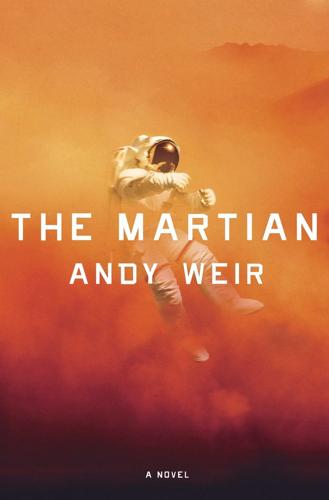
The Martian
by
Andy Weir
Published 1 Jan 2011
When I do my trip to Ares 4 for real, I’ll need to bring the oxygenator. But it’s big and I don’t want to screw with it right now. So I’ll rely on O2 and CO2 filters for Sirius 4. CO2 isn’t a problem. I started this grand adventure with 1500 hours of CO2 filters, plus another 720 for emergency use. All systems use standard filters (Apollo 13 taught us important lessons). Since then, I’ve used 131 hours of filter on various EVAs. I have 2089 left. Eighty-seven days’ worth. Plenty. Oxygen’s a little trickier. The rover was designed to support three people for two days, plus some reserve for safety. So its O2 tanks can hold enough to last me seven days.
…
“The press is crawling down my throat for this. And up my ass. Both directions, Venkat! They’re gonna meet in the middle!” “It’ll have to wait a few days. We’re going to try and link Pathfinder to the rover computer—” “A few days!?” Annie gasped. “This is all anyone cares about right now. In the world. This is the biggest story since Apollo 13. Give me a fucking picture!” Venkat sighed. “I’ll try to get it tomorrow.” “Great!” she said. “Looking forward to it.” LOG ENTRY: SOL 98 I have to be watching the camera when it spells things out. It’s half a byte at a time. So I watch a pair of numbers, then look them up on an ASCII cheat sheet I made.
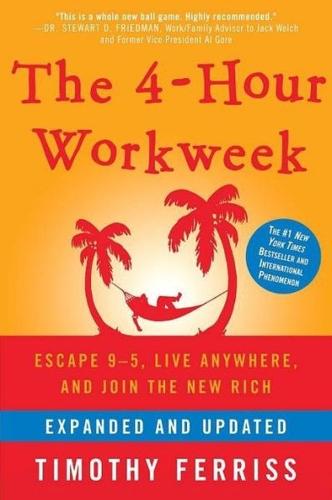
The 4-Hour Workweek: Escape 9-5, Live Anywhere, and Join the New Rich
by
Timothy Ferriss
Published 1 Jan 2007
If I have the occasional tough question—very occasional—is there any chance I could keep in touch via e-mail?38 LIFESTYLE DESIGN IN ACTION OVER THE MOON My 13-year-old daughter would like to be an astronaut when she grows up. Last year she had an extreme challenge to deal with. The phrase from Apollo 13 “Failure is not an option” sort of became our motto. I got the idea of contacting the commander of Apollo 13, Jim Lovell. It didn’t take much to find him and he sent her a wonderful letter about his ordeal just to get into the Apollo program, not to mention dealing with a crippled spacecraft. His letter made a big difference to my daughter. A couple months later, we were able to take things a little further by getting her VIP access to a shuttle launch.

Empire of the Sum: The Rise and Reign of the Pocket Calculator
by
Keith Houston
Published 22 Aug 2023
James, “The Deaths of the Slide Rule,” Journal of the Oughtred Society 23, no. 2 (2014): 6–17. 88 Michael Freudiger et al., “Mathematics on the Moon: The ‘Apollo’ Pickett,” Journal of the Oughtred Society 10, no. 2 (2001): 15–18. 89 Freudiger et al., “Mathematics on the Moon.” 90 “Slide Rule, 5-Inch, Pickett N600-ES, Apollo 13,” National Air and Space Museum, accessed August 17, 2020, https://airandspace.si.edu/collection-objects/slide-rule-5-inch-pickett-n600-es-apollo-13/nasm_A19840160000. 91 “Pickett N600-ES”; Peter D. Kramer, “Moon Landing: No Small Step, No Giant Leap Without NJ Slide Rules,” NorthJersey, December 10, 2019, https://eu.northjersey.com/story/news/2019/07/19/apollo-11-slide-rules/1742820001/. 92 Cliff Stoll, “When Slide Rules Ruled,” Scientific American 294, no. 5 (2006): 80–87. 93 James, “Deaths of the Slide Rule.” 4. the clockwork age 1 Elizabeth King, “Clockwork Prayer: A Sixteenth-Century Mechanical Monk,” Blackbird 1, no. 1 (2002), https://blackbird.vcu.edu/v1n1/nonfiction/king_e/prayer_introduction.htm; Clare Vincent and J.

Through the Glass Ceiling to the Stars: The Story of the First American Woman to Command a Space Mission
by
Eileen M. Collins
and
Jonathan H. Ward
Published 13 Sep 2021
Had NASA known there was a breach in the wing, we could have mounted an all-out effort to launch a rescue mission. I believe we likely could have saved the astronauts, even if Columbia herself was doomed. The rescue mission would have captivated the world’s attention. People would have been riveted watching NASA bring the Columbia astronauts safely home. It would have surpassed Apollo 13. “NASA to the rescue, thrilling the world.” NASA at its best. Instead, the investigation board highlighted numerous missed opportunities resulting from faults in NASA’s organizational culture. The board defined organizational culture as the “basic norms, beliefs, and practices of an institution.
…
See Chandra X-Ray Observatory aerobatic maneuvers, 49, 108, 111, 135, 163 age, space flight challenges, 278–279 aircraft commander school, 83 Air Force, 14, 286 Academy, 88–90, 131 “bottle-to-throttle” rule, 201 enlisted vs. officer, 19 Flight Screening Program (FSP, “Fishpot”), 34–36 flight training program, women, 29, 32–33 humanitarian missions, 82–83 Institute of Technology, 88 IUS Operations Control Center, 215 Manual 51-37, 44 Personnel Center, 87 Pilot Test School, 86–87 Professional Officer Corps (POC), 28 Regulation 60-16, 91 Reserve Officer Training Corps (ROTC), 23–24, 28–33 Reserve Officer Training Corps (ROTC) Third Lieutenant Program, 30–31 time-in-service waiver, 94 transfer policy, 93 Undergraduate Pilot Training (UPT), 35–51, 90 women pilots, 24 See also Test Pilot School Air Force Magazine, 22 Air Force Systems Command, 112 Air Force Times, 87, 92 air traffic control, declaring emergencies to, 66–68, 135–137 airplanes, 13–14 Air Force Century Series, 22–23 airport security, 177 airsickness, 27–28, 31, 160, 163–164, 189 Alaska, 76 Albright, Madeleine, 217 alcohol, on space missions, 192 alcoholism, 8–11, 19 Aldrin, Buzz, 218 altitude chamber, 39, 106 Altman, Scott (Scooter), 225 Altus AFB, 75, 83 Amateur Radio on the ISS (ARISS). See Space Amateur Radio Experiment (SAREX) Ames Research Center, 209 Ammoniaci, Lt., 111 Andersen AFB, 76 Anderson, Mike, 244, 254 Apollo 13, 252 Arbach, Bob, 106 Armstrong, Neil, 103, 153, 218 Arnold, Bruce, 108–109 Arnot Ogden Hospital, 15 Ashby, Jeff, 208, 212, 220, 233 asteroids, 231 astronaut astronaut interview, 118–119, 124 qualifications for selection, 72, 87–88, 117, 152, 158, 179 selection process, 118–130 astronaut beach house, 158–159, 219 astronaut candidate (ASCAN), 131, 146 Astronaut Crew Quarters, 124, 144, 146, 159, 217–219, 221, 222, 268 Astronaut Office chief information officer (CIO), 238 Astronaut Office Vehicle Systems Branch, 238 Astronaut Support Person (ASP), 139–145 duties, 140 Astronaut’s Prayer, 2 astronomy, 70, 205, 207, 231 Atlantis “cleanest vehicle” reputation, 181 cracks in flow liners, 241 fuel leaks, 132 Launch on Need rescue vehicle, 263 rudder/speed break actuators (RSBs), 261 STS-27R tile damage, 253 See also STS-84, STS-114 Austin, Bryan, 215 Austin, Texas, 135 Automated Transfer Vehicle, 197 autopilot, 4, 231–232, 263 basic training, 24–28 Beale AFB, 106 Beirut, Lebanon marine barracks bombing, 78–79 Ben Guerir, Morocco, 4 Bergstrom AFB, 135 Berlin Wall, 103–104 bicycle ergometer, 163–164 Bitburg, Germany, 193 Blagov, Viktor, 155 blind spots, gaps in knowledge, 284 Boeing, 214–215 Bolden, Charlie, 125 books, 13, 22, 180, 187, 285 Bowersox, Ken, 240 Brake, Jeff, 79 Brandenstein, Dan, 133 Brandt, Marlene, 38 bravery, 80, 121, 188, 286 Brown, Dave, 254 Budarin, Nikolai, 240 Building 9 (JSC), 132 Buran, 154 C-5 Galaxy, 31 C-9, 74 C-17 Globemaster III, 92 C-27A, 111 C-123, 27 C-130 Hercules, 31, 107 C-141 Starlifter, 74–75, 79–80, 82, 92, 138 crew, 75 as training to command space shuttle, 83–84 Cabana, Bob, 177, 205–206, 245 Cain, LeRoy, 259 call signs, 64–65, 139, 190, 228 Caltech, 119 Camarda, Charlie, 259, 263, 270, 276–277 Cambridge, Massachusetts, 215, 235 Camp El-Ne-Ho (summer camp), 13–14, 53 CAPCOM (capsule communicator), 145, 173, 177–178, 198, 225, 229, 243 Cape Canaveral, 267 Cape Crusader.
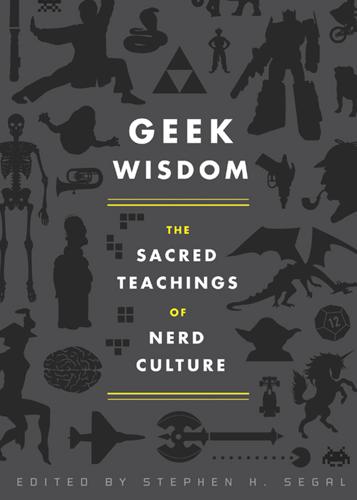
Geek Wisdom
by
Stephen H. Segal
Published 2 Aug 2011
Having traveled no farther than we did in 1972, another era of human exploration is over, and this plaque might be the last ambassador from Earth any alien sphere will see for a while. A question with no particular answer: What does it say about our cultural values that a hit movie has been made out of a moon-mission disaster (Apollo 13), but not out of any of the successful moon voyages? “WE’RE ON A MISSION FROM GOD.” —ELWOOD BLUES, THE BLUES BROTHERS CONVICTION. Without it, you got nuthin’. And we’re not talking about the sort of conviction that Jake Blues had on his police record. When Jake got out of jail, he was a man adrift: what to do, what to do?
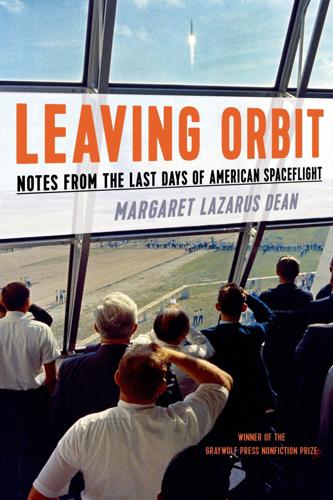
Leaving Orbit: Notes From the Last Days of American Spaceflight
by
Margaret Lazarus Dean
Published 18 May 2015
The next vehicle should go farther than the previous one, it seemed obvious. After discovering the New World, Columbus did not take a renewed interest in the area around the Mediterranean. Yet the public had tired of the expense of Apollo even before the missions to the moon had gotten started. After a brief resurgence in interest caused by the drama on Apollo 13, Americans went back to caring less and less about Apollo, saying in larger numbers that it was pointless and too expensive. A scaled-back space vehicle funded partly for its ability to get military and commercial satellites into orbit—a reusable shuttle with a large payload bay—was the only one that had a chance of gaining the approval of Congress.
…
Kennedy’s charge to Congress to put a man on the moon by the end of the decade February 1962: First American to orbit Earth: John Glenn Project Gemini: Moving toward the Moon (1962–1966) Ten missions to develop hardware and techniques for travel to the moon March 1965: First flight to carry two astronauts June 1965: First American spacewalk: Ed White December 1965: First rendezvous of two American spacecraft March 1966: First docking of two American spacecraft Project Apollo: Walking on the Moon (1963–1972) Eleven crewed missions, including six successful trips to the lunar surface January 1967: All three Apollo 1 astronauts—Roger Chaffee, Gus Grissom, and Ed White—killed in a cabin fire during a launchpad test December 1968: First trip to lunar orbit on Apollo 8 July 1969: Apollo 11 crew makes first moon landing; Neil Armstrong and Buzz Aldrin walk on moon April 1970: Apollo 13 crew prevented from landing on the moon by oxygen tank explosion July 1971: First use of lunar rover on Apollo 15 December 1972: Final moon landing Apollo 17 The Shuttle Era: Ongoing Access to Low-Earth Orbit (1981–2011) 135 total flights of the orbiters Columbia, Challenger, Discovery, Atlantis, Endeavour—133 successful missions and two disasters resulting in loss of spacecraft and crew.
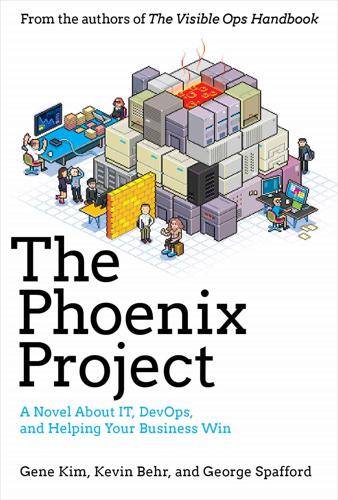
The Phoenix Project: A Novel About IT, DevOps, and Helping Your Business Win
by
Gene Kim
,
Kevin Behr
and
George Spafford
Published 14 Jul 2013
Old habits die hard. I hear the NOC before I see it. It’s a large bullpen area, with long tables set up along one wall, displaying the status of all the various IT services on large monitors. The level 1 and 2 help desk people sit at the three rows of workstations. It’s not exactly like mission control in Apollo 13, but that’s how I explain it to my relatives. When something hits the fan, you need all the various stakeholders and technology managers to communicate and coordinate until the problem is resolved. Like now. At the conference table, fifteen people are in the midst of a loud and heated discussion, huddled around one of the classic gray speakerphones that resembles a UFO.
…
This is not an outage we’re dealing with here. We’re in a situation where we could accidentally lose order entry or accounts receivable data. This terrifies me. And that should absolutely terrify you. “As Patty said, we need timelines and hypotheses for what might have caused the invoicing system to fail,” I say. “This is our Apollo 13 moment, and I’m Gene Kranz in Houston Mission Control. I don’t want guesswork. I want hypotheses backed up with facts. So get back to your screens, assemble timelines and data, and I want to hear your best thinking on cause and effect. Failure is not an option.” By 6 p.m., Patty’s team has documented over twenty different potential failure causes that have been proposed.
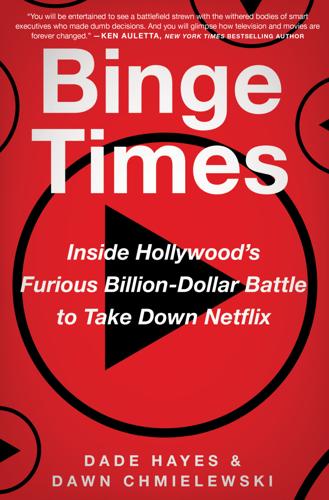
Binge Times: Inside Hollywood's Furious Billion-Dollar Battle to Take Down Netflix
by
Dade Hayes
and
Dawn Chmielewski
Published 18 Apr 2022
Or the voilà moment when Airbnb founders Brian Chesky and Joe Gebbia turned their loft into a bed-and-breakfast—renting out air mattresses at $80 a guest—as a way to cover their exorbitant San Francisco rent. Netflix’s saga starts, at least according to popular legend, with a moon shot. Cofounder Hastings describes getting socked with a $40 late fee on Apollo 13 at Blockbuster and wondering, “What if there were no late fees?” But the streaming giant’s origin story is more complicated than this convenient narrative, which neatly distilled the service’s initial consumer proposition of renting DVDs without worrying about return dates or late fees. The idea was hardly a bolt from the blue, says cofounder Randolph, but a concept arrived at over countless brainstorming sessions with Hastings as they logged miles together.
…
Farrow, 186 All in the Family, 36–37 Alpha House, 293 Altered Carbon, 233 Altman, Jeffrey, 300 Altman, Robert, xviii Alvarez, Canelo, 135 Amazing Stories, 183 Amazon, xv, 5, 291–301, 316–17 acquisition of MGM, 291–92, 298–99, 300–301, 316–17 founding of, 23, 27 Netflix and, 34, 229–30, 292, 316 sports licensing, 134–35, 139, 141–42 streamatis personae, ix streaming, 46–47, 94, 139, 140, 229–30 Amazon Fire TV, 124, 139, 203, 204, 281, 282 Amazon Prime, xv Amazon Prime Video, ix, 123, 146, 159, 191, 258, 265, 281, 291–301, 316 Amazon Studios, 81, 146, 182, 264–66, 291–98 Amazon Unbound (Stone), 295 Amazon Web Services, 242–43 Ambeault, Joe, 86–87 Amblin Television, 183 AMC Networks, 5, 14, 88, 98, 140, 201, 309–10 American Beauty, 193 American Cinematheque, 30 American Film Institute, 186, 257–58 American Horror Story, 29, 75, 174, 234 American Idol, 143, 145 American Pickle, An, 260 Americans, The, 152 America’s Cup, 38 Amodei, Joe, 37–38, 261 Anchorage Capital Group, 299 Andersen, Thom, 30 Anderson, Chris, 81–82 Anderson, Paul Thomas, 156 Anderson, Wes, 156 Andreessen, Marc, 255–56 Andrews, Julie, 169 Angels in America, 68 Angelyne, 197–98 Anheuser-Busch, 161, 162–63 Animal Kingdom, 212 Aniston, Jennifer, 6, 8, 10, 98, 103, 246 Annette, 265 Anthony, Marc, 304 Antioco, John, 35–36 AOL Time Warner, 25, 69–71 Apodaca, Nathan “Doggface,” 193 Apollo 13, 33 Apple alliance with Disney, 78, 79–81, 83–84, 173 deal with Beats, 101–2 Netflix and, 48, 98, 105 sports licensing, 133–35 streamatis personae, ix streaming, 7–8, 46–47, 97–106, 178–86, 198 Apple Arcade, 103, 178 Apple iPads, 7, 81, 100, 101, 178, 179 Apple iPhones, 7, 10, 84, 100–101, 178, 179 Apple iPods, 7, 79–80, 84, 180 Apple iTunes, 27, 47, 80, 102, 105, 180–81, 185, 245 Apple Music, 8, 179 Apple News, 102–3 Apple Park, 104 Apple Pay, 179 Apple TV, 48, 99–103 Apple TV+, xix, 6–10, 69, 103–6, 178–86, 196, 216, 244–48, 308–9, 317.

As the Future Catches You: How Genomics & Other Forces Are Changing Your Work, Health & Wealth
by
Juan Enriquez
Published 15 Feb 2001
… José … By 2050, one out of four Americans could be Hispanic … However, during a 2000 gathering of more than 3,200 Latin American scholars in sunny Miami … they talked agriculture, Cuba, democracy, economics, justice, law, gender, international relations, migration, race, religion … everything except science … Sorry, nobody home on that subject.)15 As Apollo 13 astronaut Jim Lovell said: “Houston, we have a problem.” Lack of technical skills leads to lower average wages for African Americans and Hispanics … Less faith in the power of education … And much higher dropout rates … (One-quarter of Hispanics drop out of high school, 13 percent of African Americans, and 7.6 percent of whites.)16 This is a problem when close to three-quarters of the children in the Los Angeles County Unified School District are Hispanic … and when the United States has become the world’s second-largest Spanish-speaking country.17 Meanwhile, because tech companies need few people to generate great wealth … And because only the educated tend to get stock options … Salary disparities continue to widen rapidly.
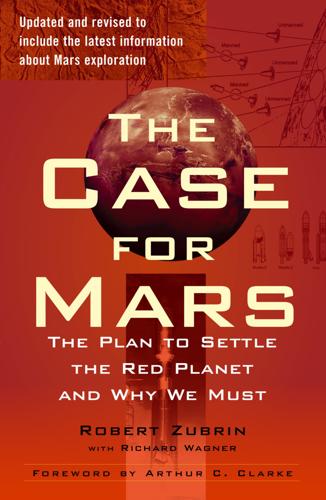
Case for Mars
by
Robert Zubrin
Published 27 Jun 2011
For certain departure velocities it is possible to go to Mars on a trajectory that will take you straight back to Earth if you decide not to (or for some reason can’t) go ahead with orbit capture at Mars. These are known as free-return trajectories. If the ship’s propulsion system fails completely during the outbound transit, or if the mission needs to be aborted for any other reason, following such trajectories can allow the crew to get home safely, just as was done in the nearly disastrous Apollo 13 mission, which employed a free-return trajectory to get to the Moon. The safety advantage of setting off to Mars on such trajectories is so obvious that considering outbound nonfree-return trajectories that might save thirty days, at best, is hardly worthwhile. In Table 4.2 we list the options for free-return trajectories to Mars.
…
See Advanced Miniature High Frequency System (AMHFS) Ammonia, 250, 266–267 Amundsen, Roald, 16–18, 86 Andrews, Dana, 244 Antarctic exploration, 212 Antarctic Meteorite Lab, Johnson Space Center, 308, 309 Antarctic Meteorite Newsletter, 310, 311 Anti-nuclear movement, 103 Apogee, 97 Apollo 13 mission, 83 Apollo program, 3, 45, 54, 55, 58–59, 70, 77–78, 87, 88, 99, 137, 142, 143, 146, 273–274, 277–279 Arcadia, 209 Areogator, 167–169 Ares booster, 3, 6–9, 13, 61–63, 67, 88, 286 Argon propellant, 228 Argos satellite system, 160–161 Ariane, 280 Aristarchus of Samos, 22, 23 Aristotle, 23 Armstrong, Neil, 45 Artificial gravity systems, 61–62, 122–126 Ash, Robert, 43, 60–61, 152 Asteroid belt, 225–230 Astronomy, early, 21–25 Atmosphere of Mars, 25, 27, 34, 39, 57, 129, 130, 136, 140, 145, 146, 148, 149, 177, 192, 194, 222, 249–251 Atmospheric pressure, 251–256, 272 Attentive public, 276–277 Austin, Gene, 64 Back contamination, 113, 132–135 Bacterial ecosystems, 250, 263, 266–268 Bacterial stromatelites, 140 Baker, David, 52, 54–56, 62–66, 73, 88, 223 Ballhaus, Bill, 66 Ballistic Missile Defense Organization, 106 Bar, defined, 249 Barth, Charles, 71 Base-building period, 165, 171–215, 218 brick manufacture, 174–175, 187–188 ceramic and glass production, 184–185 founding base, 173 greenhouse agriculture, 181, 195–199 habitation, 175–181 metallurgy, 199–205 plastic manufacture, 182–184 power, 205–211 support of long-range mobility, 212–215 tapping water, 185–193 Beagle spacecraft, 6–9 BEIR.

The End of Work: Why Your Passion Can Become Your Job
by
John Tamny
Published 6 May 2018
But as their biographer David McCullough notes, “they had no college education, no formal technical training, no experience working with anyone other than themselves, no friends in high places, no financial backers, no government subsidies, and little money of their own.”45 Assuming they’d had the means to attend college, what could they have been taught that would have helped them develop a flying machine? “For years, I struggled in school,” recalls the film and television producer Brian Grazer (Splash, Parenthood, Apollo 13, Arrested Development, 24, Empire, etc.).46 He managed to graduate from the University of Southern California but hardly as a marquee student. So what? What school could have taught Grazer to produce a film about a man falling for a mermaid? More recently, actor-director-producer Peter Berg (Friday Night Lights, Lone Survivor, Patriots Day, etc.) decided, “I could probably get more following a bellman around in a hotel . . . for three months than I could by going to film school and learning about cameras.”47 The Internet was introduced to consumers in the mid-1990s.
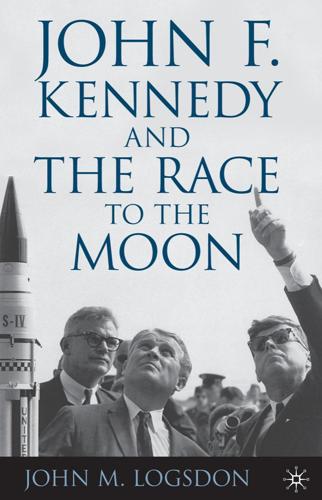
John F. Kennedy and the Race to the Moon (Palgrave Studies in the History of Science and Technology)
by
John M. Logsdon
Published 15 Dec 2010
The successive achievements of Projects Mercury and Gemini, and most notably the February 1962 first U.S. orbital flight of John Glenn, became initial steps in JFK’s lunar quest and thus made the U.S. space program of the 1960s a source of international prestige and national pride. The psychological and political advantages of early Soviet space successes were quickly and effectively countered. The success of Apollo 11 in July 1969 and five subsequent missions to the lunar surface (Apollo 13, of course, had a major failure on the way to the Moon and did not complete its landing mission) cemented the international perception of the United States as a country committed to peaceful space achievements “for all mankind.” Americans who were abroad at the time of the first Moon landings, U.S. diplomats, and Apollo astronauts returning from post-mission international tours all attested to an immense flow of admiration for the country that could accomplish such a feat.
…
Welsh, Memorandum for the Vice President, “Proposed Increase in FY 1962 Budget for NASA,” March 22, 1961, Vice Presidential Security Files, Box 15, LBJL. 21. Agenda for NASA-BOB Conference with the President, March 22, 1961, NSF, Box 282, JFKL. 22. James E. Webb, “Administrator’s Presentation to the President,” March 21, 1961. NSF, Box 282, JFKL. 23. Seamans, Project Apollo, 13. See also Robert Seamans, Oral History Interview, November 2, 1987, Glennan-Webb-Seamans Project for Research in Space History, National Air and Space Museum, for Seamans’s account of this meeting. 24. Letter from James Webb to T. Keith Glennan, March 30, 1961, NHRC. 25. David Bell, Memorandum for the President, “National Aeronautics and Space Administration budget problem,” undated but March 23, 1961, National Aeronautics and Space Council Papers, Box 3, JFKL. 26.

Shoot for the Moon: The Space Race and the Extraordinary Voyage of Apollo 11
by
James Donovan
Published 12 Mar 2019
When he was done, he turned the power off, got out, thanked Buckbee, looked through the rest of the museum, and headed home. Epilogue Max, they’re going to go back there one day, and when they do they’re going to find out it’s tough. Bob Gilruth to Max Faget In the three and a half years after Apollo 11, NASA sent six more manned spaceflights to the moon. They all came back, though the crew of Apollo 13 never landed. In fact, they barely escaped with their lives after an oxygen tank exploded during the translunar leg and critically damaged the service module. It wound up being NASA’s finest hour, as Mission Control came up with ingenious solutions to one life-threatening problem after another. By December of 1972, when the last Apollo flight lifted off from the lunar surface, the American public had become bored with moon trips.
…
Gonzales, TX: Privately published, 2012. Logsdon, John M. The Decision to Go to the Moon: Project Apollo and the National Interest. Cambridge, MA: MIT Press, 1970. Lord, M. G. Astro Turf: The Private Life of Rocket Science. New York: Walker, 2005. Lovell, Jim, and Jeffrey Kluger. Lost Moon: The Perilous Journey of Apollo 13. Boston: Houghton Mifflin, 1994. Lunney, Glynn. Highways into Space. N.p.: Privately published, 2014. ———, et al. From the Trench of Mission Control to the Craters of the Moon. Third ed. N.p.: Privately published, 2012. MacKinnon, Douglas, and Joseph Baldanza. Footprints. Washington, DC: Acropolis, 1989.
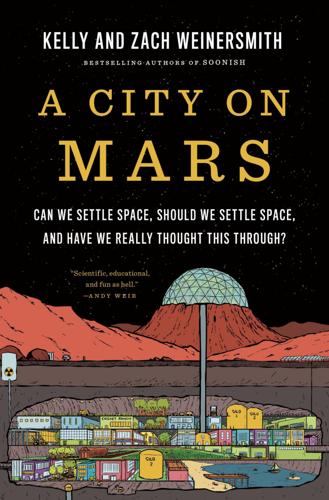
A City on Mars: Can We Settle Space, Should We Settle Space, and Have We Really Thought This Through?
by
Kelly Weinersmith
and
Zach Weinersmith
Published 6 Nov 2023
Now, make sure to settle in and get comfy, because Earth has raced ahead of you in its comparatively short journey around the Sun.[*] Even for an initial Mars trip, that’s a good two to three years total spent away from Earth.[*] Once you’re partway into your trip, you cannot go home until Earth and Mars are about to sync up once more. This is risky. When the service module for the Apollo 13 mission experienced an explosion en route to the Moon, part of why the men survived is that physics provided a very short “free return trajectory” back home with a minimal use of propellant. The Martian equivalent would take longer than a year. If something goes wrong on the surface of the Moon, there’s some world in which you can be rescued by a ship from Earth or an escape pod home.
…
Sunday 19 Mar 2006. Guest: Dr. Vadim Y. Rygalov.” The Space Show. Accessed October 3, 2022. https://www.thespaceshow.com/show/19-mar-2006/broadcast-470-special-edition. Logsdon, J. John F. Kennedy and the Race to the Moon. New York: Palgrave Macmillan, 2011. Lovell, Jim, and Jeffrey Kluger. Apollo 13: Lost Moon. New York: Pocket Books, 1995. Lucas, Rex A. Minetown, Milltown, Railtown: Life in Canadian Communities of Single Industry. Ontario: Oxford University Press, 2008. Lucid, Shannon. Tumbleweed: Six Months Living on Mir. Middleton, DE: MkEk Publishing, 2020. Lyall, Francis, and Paul B.
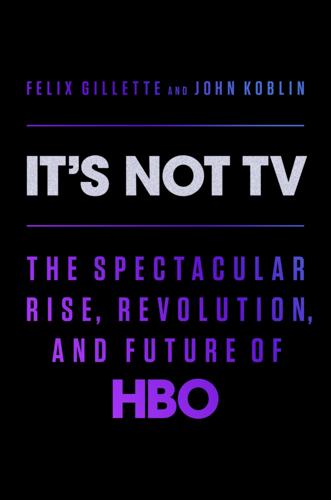
It's Not TV: The Spectacular Rise, Revolution, and Future of HBO
by
Felix Gillette
and
John Koblin
Published 1 Nov 2022
* * * • • • IN THE SPRING OF 1998, HBO was getting ready to air From the Earth to the Moon, an ambitious twelve-part miniseries produced by Tom Hanks, Brian Grazer, and Ron Howard, chronicling America’s Apollo space program in the 1960s and ’70s. Its production would prove to be an important inflection point in the network’s history. Early in the development process, Carmi Zlotnik, HBO’s then-director of production, got a phone call from Grazer, who had recently finished making Apollo 13, a big-budget Hollywood space adventure starring Tom Hanks and Kevin Bacon. The movie had grossed over $350 million at the global box office for Universal Pictures. HBO’s tendency to skimp on its productions—from the lack of a proper sound stage on Dream On to the missing kitchen on the set of Larry Sanders—was well known in the industry.
…
When it came to space adventures, special effects mattered immensely. “Tom Hanks wants to go to the moon,” Grazer told Zlotnik. “Your job is to take him there.” Afterward, Zlotnik relayed the conversation to Albrecht. To do all the special effects that Grazer and Hanks wanted—to make space travel look like it did in Apollo 13—the production would need more than the $50 million originally budgeted for the miniseries. Zlotnik said an extra $15 million should probably suffice. Back in New York, Jeffrey Bewkes considered Zlotnik’s request and decided to approve the extra spending. This time around, HBO would spare no expense.

Aurora
by
Kim Stanley Robinson
Published 6 Jul 2015
Sometimes ‘sick organism syndrome,’ apparently to allow for the acronym SOS, which was an old distress signal in oceanic shipping. Then it stood for ‘save our ship,’ and was easy to send and comprehend in Morse code.” “So…” She sighed, pulled herself together (metaphorically, though she did wrap her arms around her torso). “We’ve got a problem.” “‘Houston, we’ve had a problem.’ Jim Lovell, Apollo 13, 1970.” “What happened to them?” “On a trip to Luna, they lost a compressed air element and then most of their electrical power. They orbited the moon once, and came home using jury-rigged systems.” “And they all made it?” “Yes.” “How many of them were there?” “Three.” “Three?” “Apollo capsules were small.”
…
Poaching of these remnant recovery populations was not uncommon. Dogs and cats were eaten. Lab mice were eaten, after being sacrificed for experimental purposes (approximately 300 calories per mouse). No other topic of conversation at this point. General distress. Freya told them the story of Apollo 13. She told them the story of Shackleton’s Endurance expedition, of the boat journey that saved them. She told them the story of the island of Cuba, after oil imports that had supported its agriculture abruptly went away. She read aloud Robinson Crusoe, also Swiss Family Robinson, and many other books concerning castaways, marooning victims, and other survivors of catastrophic or accidental isolation, a genre surprisingly full of happy endings, especially if certain texts were avoided.

The Start-Up of You: Adapt to the Future, Invest in Yourself, and Transform Your Career
by
Reid Hoffman
and
Ben Casnocha
Published 14 Feb 2012
Anyone can apply this entrepreneurial skill set to his or her career. This is a book about how to do just that. It’s about keeping Detroit from happening to you and making the Silicon Valley way work for you. THE PATH TO THE FUTURE In 1997 Reed Hastings, a software entrepreneur living in the hills of Silicon Valley, was faced with a problem. He had rented Apollo 13 from a video store, returned it days late, and was dealt a late fee so nasty that he was too embarrassed to tell his wife what had happened. His entrepreneurial instinct kicked in: What if you could rent a movie and never face the risk of a late fee? So he began researching the industry and learned that the new DVD technology was light and cheap to ship.14 He realized that the shift toward e-commerce, in concert with the DVD revolution, could be a huge opportunity.
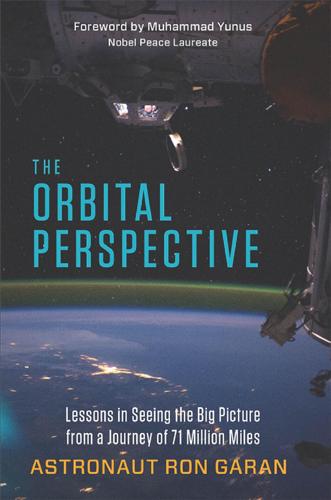
The Orbital Perspective: Lessons in Seeing the Big Picture From a Journey of 71 Million Miles
by
Astronaut Ron Garan
and
Muhammad Yunus
Published 2 Feb 2015
Space Apps was the brainchild of NASA’s Open Innovation team, with the support of collaboration agency SecondMuse and digital humanitarian organization Geeks Without Bounds, and focused on using space data to improve life on Earth and in space. M a ss Coll a bo r at io nâ•… 135 This kind of undertaking is not new for NASA. In fact, NASA’s response to the Apollo 13 mission, in which the spacecraft was crippled by an onboard explosion, might be considered its first hackathon and a first, real-life space apps challenge. During that historic mission, with the lives of the three crewmembers hanging in the balance, NASA had to solve a massive challenge with limited resources and limited time—╉a solution had to be hacked.
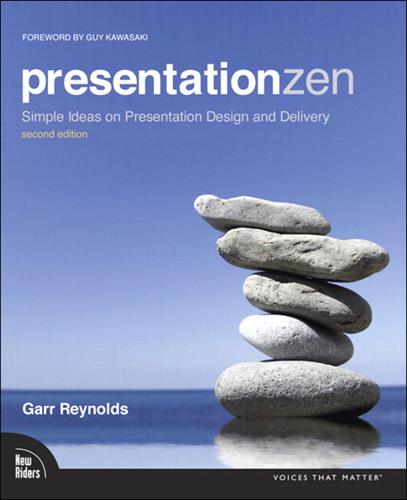
Presentation Zen
by
Garr Reynolds
Published 15 Jan 2012
So do programmers, engineers, scientists, etc. You can see the application of creative genius in many professional fields. Remember, it was a group of brilliant and geeky-to-the-core, left-brain NASA engineers on the ground who were able to jury-rig a solution to the life-threatening buildup of carbon dioxide in the damaged Apollo 13 spacecraft back in 1970. Their heroic fix—literally involving duct tape and spare parts—was ingenious improvisation; it was imaginative and creative. Being creative does not mean wearing a black turtleneck and hanging out in jazz cafés sipping cappuccinos. It means using your whole mind to find solutions.
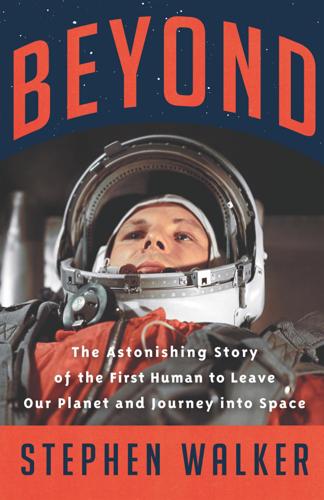
Beyond: The Astonishing Story of the First Human to Leave Our Planet and Journey Into Space
by
Stephen Walker
Published 12 Apr 2021
At this point Albert Zeiler, one of the German engineers who had worked with von Braun on the Nazi V-2s, suggested getting a hunting rifle and shooting live bullets at the rocket’s liquid oxygen tanks to make holes in it, thus allowing the contents to boil off into the outside air and prevent a possible explosion. The idea was rejected. ‘Even to a rookie like me,’ said Gene Kranz, then a member of the mission control team and who would one day help bring the stricken Apollo 13 spacecraft home from the moon, ‘shooting a hole in the tanks did not seem to be a sound plan.’ Fortunately the wind did not pick up. In the end the Redstone’s batteries were allowed to die overnight while a relief valve in the liquid oxygen tank let the gaseous oxygen vent slowly and safely into the outside air.
…
Able (monkey) 113 Agaltsov, Colonel General Filipp 362 Agitprop (Department of Propaganda and Agitation, USSR) 365 Akimova, Klavdia 277–8 Albert, Project 111–12, 115 Alekseyev, Semyon 190 Alfa (dog) 10, 11, 12, 14, 15, 168, 299 Anfuso, Vincent 383 Antares lunar module 404 A.P.O. (Avariynyy Podryv Obyekta) (‘Emergency Object Destruction’) (Vostok on-board bomb/device) 11–12, 13, 14–15, 167, 169, 209–10, 226, 234, 257 Apollo programme 25, 74, 189, 198, 350, 396–7, 399–400, 403–4, 407; Apollo 1 189; Apollo 11 407; Apollo 13 74; Apollo 14 404 Armstrong, Neil 417 Army Ballistic Missile Agency, Huntsville, US 56, 59 Atlas rocket 59, 68, 148 Augerson, William 127 Aviation Week 114, 141, 143, 151 Baikonur Cosmodrome Museum, Kazakhstan 407, 416 Balanina, Maria (mother of Sergei Korolev) 92 Barbree, Jay 54–5, 69, 73, 134, 137, 146, 163, 330, 401 Barmin, Vladimir 176, 182 Barnes, Donald 113 Bay of Pigs (1961) 215–18, 255, 376, 397–9, 401 Belka (dog) 10–11, 23, 69–71, 115, 152, 166, 181, 406–7 Bell, David 199, 395, 396 Berle, Adolph 217 Berlin Wall 411 B.F.
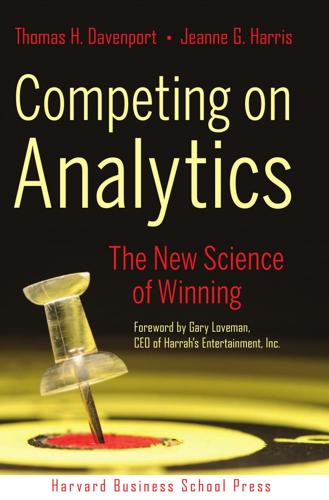
Competing on Analytics: The New Science of Winning
by
Thomas H. Davenport
and
Jeanne G. Harris
Published 6 Mar 2007
He thanks his sons Hayes and Chase for passionate discussions about baseball as an analytical discipline, particularly the Boston Red Sox. Part One THE NATURE OF ANALYTICAL COMPETITION 1 THE NATURE OF ANALYTICAL COMPETITION Using Analytics to Build a Distinctive Capability IN 1997, A THIRTY-SOMETHING man whose resume included software geek, education reformer, and movie buff rented Apollo 13 from the biggest video-rental chain on the block—Blockbuster—and got hit with $40 in late fees. That dent in his wallet got him thinking: why didn’t video stores work like health clubs, where you paid a flat monthly fee to use the gym as much as you wanted? Because of this experience—and armed with the $750 million he received for selling his software company—Reed Hastings jumped into the frothy sea of the “new economy” and started Netflix, Inc.
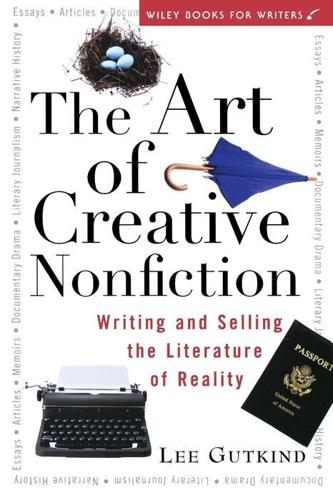
Art of Creative Nonfiction: Writing and Selling the Literature of Reality
by
Lee Gutkind
and
Purba
Published 1 Jan 1997
King's stories have been compelling and terrifying because they are believable. If readers did not accept the locations, the characters, and even the basic plot outline, then Stephen King would not be the household name he is today. Conversely, some movies-or novels--are nearly true. The films Apollo 13 with Tom Hanks and This Boy's Life with Robert DeNiro, both adapted Page 10 Contents Introduction 1 Part 1 The Creative Part 1 For Writers, Thinkers, Silent Observers (and Other People with Stories to Tell) 5 1. 1 Crossing Genres 5 1.2 Thinkers and Scholars-Reaching Out from Academia 5 1.3 And People with Stories,. to Tell 6 1.4 Flies on the Wall 6 1.5 Terminology 7 1.6 A Passion for People 8 2 A 2.2 A Different Level o f Truth in Creative Nonfiction Before I launch into a discussion of the nature of truth, let me qualify the above remark: Traditional journalists learn early in their education that creativity or imagination in newspapers and magazines are basically disallowed.
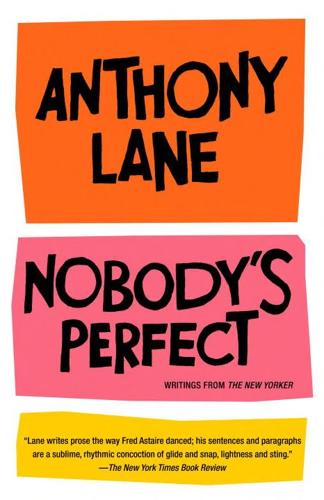
Nobody's Perfect: Writings From the New Yorker
by
Anthony Lane
Published 26 Aug 2002
Although we knew that this had to happen, the point at which Ellie’s eyes open, the slow dawn of her realization, is still unquestionably thrilling, and the next twenty minutes or so, as her colleagues get to work, are the busiest and most stirring in what is otherwise a long and patience-stretching movie. Since Apollo 13, I have had a weakness for scientists reeling off streams of data at each other—the louder and more incomprehensible the better. In one respect, Zemeckis improves upon Ron Howard’s film: he arranges for the technical details to gather pace and fury and then slams them into the side of a sick joke.
…
What murk there is in the finished film adheres to Christof (Ed Harris), the inventor and producer of Trumania. He sits in the control room, calling forth a storm or changing the baleful moon into a searchlight. “Cue the sun,” he says as the hunt for the missing Truman gets under way. Harris’s role here is the demonic mirror image of his mission chief in Apollo 13: instead of guiding the lost boys home, he urges his marooned doofus to stay in inner space, and by the end it is he, more than Carrey, who tenses the movie for its climax. “I am the creator,” he declares, adding, “of a television show.” In that pause, and in Harris’s terrifying attempts at a paternal smile, you catch all the mirthless comedy of Christof’s megalomania; his wire-rimmed spectacles and his beret show you what happens when a poète maudit is turned loose on television.
…
When mankind first headed in that direction, nobody thought to preserve the trip for posterity; the dynamics of rocketry and orbital flight were so engrossing that poor old photography—an invention of the previous century—didn’t stand a chance. As on every mission for the last forty years (most cleverly, and most fruitfully, Apollo 13), a textbook procedure needed a further touch of improvisation, of casual human marginalia; John Glenn had to go and buy himself a 35 mm Minolta over the counter, like a tourist hoping to catch the sunset in Hawaii. Even then, NASA didn’t click until Wally Schirra followed suit in the fall of 1962; he went to a Houston camera store and came back with a basic Hasselblad 500C and an 80 mm lens, having presumably asked the salesman—as you do—what would work best in space.
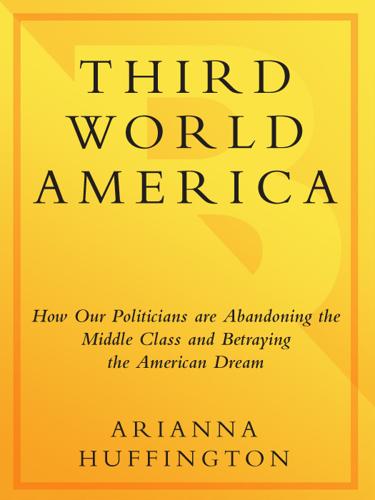
Third World America: How Our Politicians Are Abandoning the Middle Class and Betraying the American Dream
by
Arianna Huffington
Published 7 Sep 2010
Shrinking that oversized industry won’t make Wall Street happy, but what’s bad for Wall Street would be good for America.” It’s no wonder that Wall Street breathed a deep sigh of relief when the Senate passed the Restoring American Financial Stability Act in May 2010. It was considered mission accomplished for financial reform. Unfortunately, it was more of a Bush 43 mission accomplished than an Apollo 13 mission accomplished. That’s because the bill passed by the Senate, like Bush’s ship-deck ceremony, was more notable for what it left undone. First, it didn’t do enough to rein in Wall Street. It didn’t end too-big-to-fail banks, didn’t create a Glass-Steagall-style firewall between commercial and investment banking, kept taxpayers on the hook for future bailouts, and left open dangerous loopholes in the regulation of derivatives.
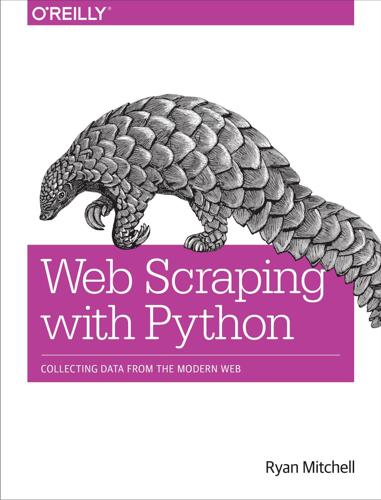
Web Scraping With Python: Collecting Data From the Modern Web
by
Ryan Mitchell
Published 14 Jun 2015
You should already know how to write a Python script that retrieves an arbitrary Wikipedia page and produces a list of links on that page: from urllib.request import urlopen from bs4 import BeautifulSoup html = urlopen("http://en.wikipedia.org/wiki/Kevin_Bacon") bsObj = BeautifulSoup(html) for link in bsObj.findAll("a"): if 'href' in link.attrs: print(link.attrs['href']) If you look at the list of links produced, you’ll notice that all the articles you’d expect are there: “Apollo 13,” “Philadelphia,” “Primetime Emmy Award,” and so on. However, there are some things that we don’t want as well: //wikimediafoundation.org/wiki/Privacy_policy //en.wikipedia.org/wiki/Wikipedia:Contact_us In fact, Wikipedia is full of sidebar, footer, and header links that appear on every page, along with links to the category pages, talk pages, and other pages that do not contain different articles: /wiki/Category:Articles_with_unsourced_statements_from_April_2014 /wiki/Talk:Kevin_Bacon Recently a friend of mine, while working on a similar Wikipedia-scraping project, mentioned he had written a very large filtering function, with over 100 lines of code, in order to determine whether an internal Wikipedia link was an article page or not.

Who Needs the Fed?: What Taylor Swift, Uber, and Robots Tell Us About Money, Credit, and Why We Should Abolish America's Central Bank
by
John Tamny
Published 30 Apr 2016
Likewise Eugene Levy, who, while achieving greater critical renown in later years, owing to his work in the Christopher Guest films (Best In Show most notably), shone as the eminently quotable Walter Kornbluth: “What a week I’m having!” Before Splash, Howard and Grazer created the very funny Night Shift (formerly the Fonz, Henry Winkler played against type à la John Candy in Splash). Since then, this duo has reeled off a string of critically acclaimed movies, including Parenthood, Apollo 13, A Beautiful Mind, Frost/Nixon, and Rush. These films don’t begin to tell the story of their productivity, not to mention what Grazer and Howard’s Imagine Entertainment has done for television, with shows like 24 and Arrested Development. Best friends, Grazer and Howard have a track record that is the envy of Hollywood.
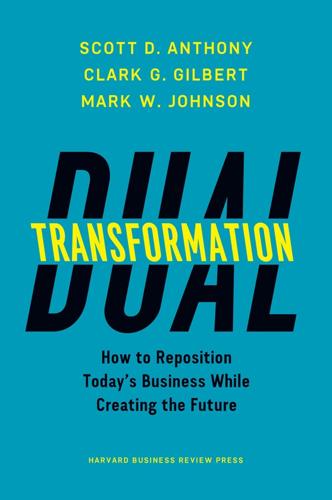
Dual Transformation: How to Reposition Today's Business While Creating the Future
by
Scott D. Anthony
and
Mark W. Johnson
Published 27 Mar 2017
The following three case studies show organizations that demonstrated the courage to choose before convincing data had arrived. Then we describe the seven specific early warning signs of disruptive change. Netflix Legend has it that Netflix’s founding traces to Reed Hastings’s frustration borne of incurring ridiculous late fees for forgetting to return his Apollo 13 DVD. Recall that the original idea was to allow people to rent and return videocassettes through the mail. The rise of the DVD format, which could be easily mailed in slim envelopes and delivered by the US Postal Service, along with the adoption of monthly subscription fees (described in more detail in chapter 2), gave the idea additional juice.
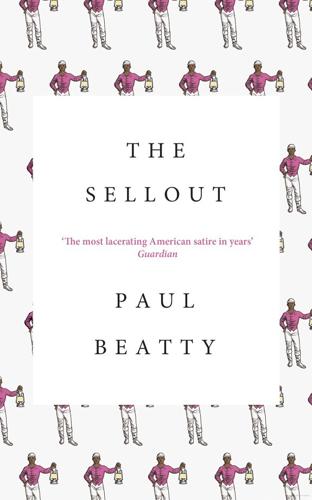
The Sellout: A Novel
by
Paul Beatty
Published 2 Mar 2016
Every film shot in Los Angeles between 1937 and 1964—Shoeshine Boy (uncredited). Other credits include various roles as Messenger Boy, Bell Boy, Bus Boy, Pin Boy, Pool Boy, House Boy, Box Boy, Copy Boy, Delivery Boy, Boy Toy (stag film), Errand Boy, and token Aerospace Engineer Boy in the Academy Award–winning film Apollo 13. He wishes to thank his many fans who have supported him throughout the years. What a long, strange trip it’s been. If that naked old man crying in my lap had been born elsewhere, say Edinburgh, maybe he’d be knighted by now. “Arise, Sir Hominy of Dickens. Sir Jig of Boo. Sir Bo of Zo.” If he were Japanese and had managed to survive the war, the economic bubble and Shonen Knife, then it’s quite possible he’d be one of those octogenarian Kabuki actors who, when he enters during the second act of Kyô Ningyô, the play comes to a reverential halt as the announcer introduces him to great fanfare and a government stipend.

What's Mine Is Yours: How Collaborative Consumption Is Changing the Way We Live
by
Rachel Botsman
and
Roo Rogers
Published 2 Jan 2010
Successful entrepreneurs Marc Randolph, Reed Hastings, and Mitch Lowe founded Netflix in 1999, after Randolph and Hastings had made a fortune by inventing a debugging software tool called Pure Software. Hastings first got the idea for Netflix after going to Blockbuster one day and discovering that his family had been six weeks late in returning Apollo 13. The overdue cassette cost him $40 in late fees. It was later, on his way to the gym, that he had his eureka moment when he realized his fitness club had a much better business model. “You could pay $30 or $40 a month and work out as little or as much as you wanted.” He reasoned that there had to be a similar way “to make money renting movies without gouging customers on late fees.”10 Hastings, who is now in his late forties and lives with his wife and two kids in Santa Cruz, likes movies but admits he is no movie buff.
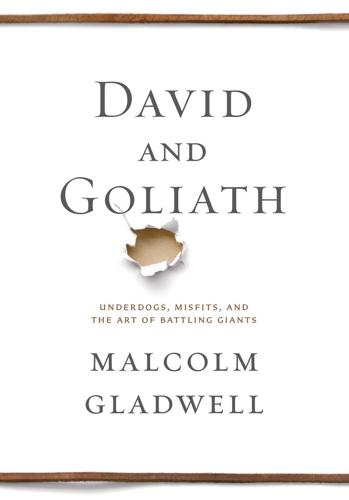
David and Goliath: Underdogs, Misfits, and the Art of Battling Giants
by
Malcolm Gladwell
Published 30 Sep 2013
(I’m a writer for The New Yorker, so there was no way I wasn’t going to mention this, right?) 3 When Blankenhorn took the stand in January of 2010, the case was called Perry v. Schwarzenegger; it became Hollingsworth v. Perry at the Supreme Court level in 2013. 4 Among Grazer’s many films: Splash, Apollo 13, A Beautiful Mind, and 8 Mile. He was also mentioned in my book Blink, discussing the art of casting actors. 5 The “Big Five” is the standard that social psychologists use to measure personality. Social scientists are not always big fans of personality tests like, say, the Myers-Briggs, because they think those “lay” tests overlook key traits or mischaracterize others. 6 Dyslexia, it should be pointed out, affects only reading.
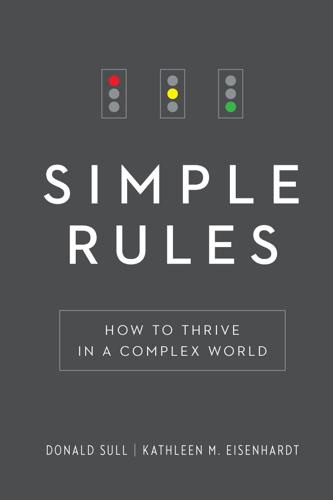
Simple Rules: How to Thrive in a Complex World
by
Donald Sull
and
Kathleen M. Eisenhardt
Published 20 Apr 2015
A useful analogy can help people save time and effort in formulating their rules. Analogies to existing companies and other competitive domains like sports and battle are a favorite approach of entrepreneurs looking for guidance in attacking new opportunities. Netflix is an example. In 1997 Reed Hastings was annoyed by a $40 late fee on his rental of the video Apollo 13 from Blockbuster. As an already successful entrepreneur, he recognized a golden opportunity to create better customer service than that delivered by video rental stores by exploiting the emergence of DVDs and the rise of the Internet. He launched Netflix as a service that let consumers order DVD movie rentals online and receive them at home by mail.
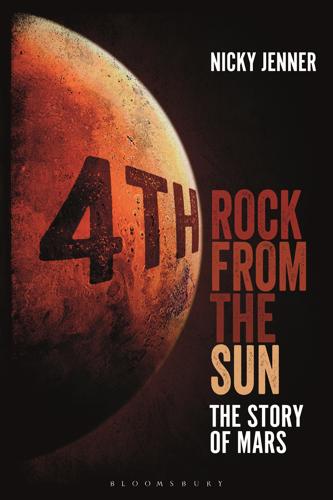
4th Rock From the Sun: The Story of Mars
by
Nicky Jenner
Published 5 Apr 2017
There are multiple little nods and references throughout the film for people who love space exploration, most notably when Watney needs to locate, fix and use the communications system from the defunct Mars Pathfinder probe to speak to NASA on Earth (last operational in the late 1990s). Web comic xkcd perfectly summarised the appeal of The Martian in June 2015 (comic 1536): ‘You know the scene in Apollo 13 where the guy says “we have to figure out how to connect this thing to this thing using this table full of parts or the astronauts will all die?” The Martian is for people who wish the whole movie had just been more of that scene.’ The Martian is an excellent example of factually correct science fiction.
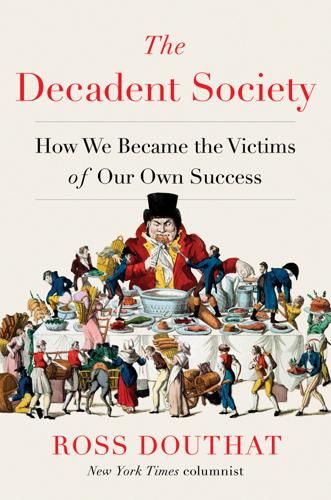
The Decadent Society: How We Became the Victims of Our Own Success
by
Ross Douthat
Published 25 Feb 2020
The movies especially began to treat the infinite spaces differently—as a zone of terrors where no one hears you scream (Alien and its imitators), a source of sinister invasions and a home of malignant demigods (the UFO craze, The X-Files), or as a purgatory to be escaped by a safe return to earth (Apollo 13, Gravity, The Martian, Ad Astra). Where Trek had confidently blended sixties liberalism with the frontier spirit of Wagon Train, its successors Star Wars and Battlestar Galactica were not even visions of the human future at all: they were dispatches from a stellar prehistory; a vision of far away or long ago.
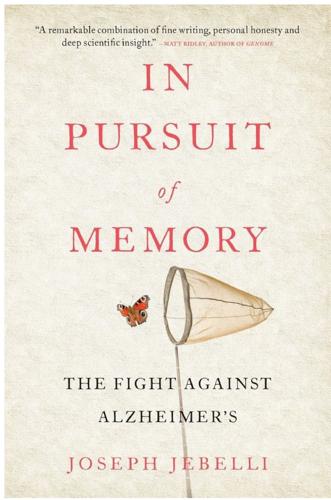
In Pursuit of Memory: The Fight Against Alzheimer's
by
Joseph Jebelli
Published 30 Oct 2017
In 2014, one year before his death, he published a short volume titled Shaking Hands with Death, lucidly relating the feeling of PCA: Imagine that you’re in a very, very slow motion car crash. Nothing much seems to be happening. There’s an occasional little bang, a crunch, a screw pops out and spins across the dashboard as if we’re in Apollo 13. But the radio is still playing, the heater is on and it doesn’t seem all that bad, except for the certain knowledge that sooner or later you will be definitely going head first through the windscreen. That’s just one example. In his book The Mind’s Eye, neurologist Oliver Sacks described an instance of PCA in a pianist named Lilian Kallir, who could no longer read music and, when confronted by people’s faces, said, ‘It is not a blur, it’s a mush.’
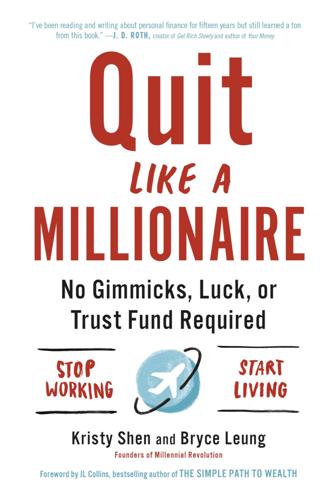
Quit Like a Millionaire: No Gimmicks, Luck, or Trust Fund Required
by
Kristy Shen
and
Bryce Leung
Published 8 Jul 2019
I was afraid that this was my one and only chance at a good life, and I didn’t want to blow it. I was afraid of becoming a burden on my dad, who at the time was supporting our extended family back home. I was afraid that if I failed, I’d drag our family back down into poverty, after all the sacrifices he had made to get us out. To paraphrase the words of Ed Harris’s character from Apollo 13, failure was not an option. SCARCITY MIND-SET VERSUS ENTITLEMENT MIND-SET Many of my peers grew up way differently than I did. They had gone to summer camp and had gotten cars or tickets to Europe as graduation presents, but after graduation they ended up unemployed and living in their parents’ basements.
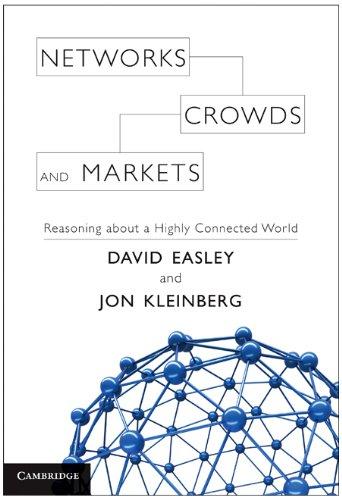
Networks, Crowds, and Markets: Reasoning About a Highly Connected World
by
David Easley
and
Jon Kleinberg
Published 15 Nov 2010
how it’s possible to get from the article on Nash Equilibrium to the article on NASA (the U.S. National Aeronautics and Space Administration) by passing through articles on John Nash (the creator of Nash equilibrium), A Beautiful Mind (a film about John Nash’s life), Ron Howard (the director of A Beautiful Mind), Apollo 13 (another film directed by Ron Howard), and finally on to the article about NASA (the U.S. government agency that managed the real Apollo 13 space mission). In short: Nash equilibrium was created by someone whose life was the subject of a movie by a director who also made a movie about NASA. Nor is this the only short chain of articles from Nash equilibrium to NASA.
…
The need to stress this point reinforces the contrast with the “frozen” nature of the citations in a collection of papers such as those in Figure 13.3. 13.2. INFORMATION NETWORKS, HYPERTEXT, AND ASSOCIATIVE MEMORY389 Nash Game Equilibrium Theory John Forbes Nash RAND A Beautiful Mind (film) Apollo 13 Conspiracy Ron Howard (film) Theories NASA Figure 13.4: The cross-references among a set of articles in an encyclopedia forms another kind of information network that can be represented as a directed graph. The figure shows the cross-references among a set of Wikipedia articles on topic in game theory, and their connections to related topics including popular culture and government agencies.
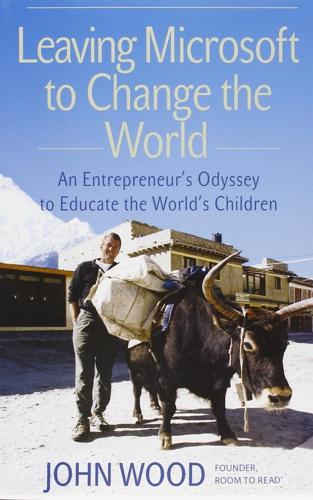
Leaving Microsoft to Change the World: An Entrepreneur's Odyssey to Educate the World's Children
by
John Wood
Published 28 Aug 2006
On January 4, 2005, we had a team meeting to discuss our plans to rebuild schools in Sri Lanka. Knowing that some of the team were fearful and were walking around the office with a “deer in the headlights” look, I wanted to assure them that we were smart enough to figure this out. I thought of the Ed Harris character from the film Apollo 13, who watches his colleagues panic while he methodically determines a way to get the astronauts back to earth safely. His team is pessimistic, focusing on obstacles and doomsday scenarios, while he is reaching deep down to find the Right Stuff that made the original NASA astronauts the American heroes of the 1960s.
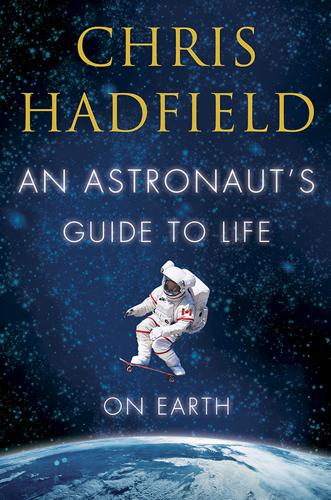
An Astronaut's Guide to Life on Earth
by
Chris Hadfield
Published 29 Oct 2013
In the 1960s, astronauts frequently launched in apparently perfect health, but then, a day or so into the mission, a virus would make its presence known. The crew of Apollo 12 also wound up relying on Actifed; all three astronauts on the Apollo 8 mission experienced gastroenteritis, which is probably even less pleasant on orbit than it is on Earth. But not until 1970 did NASA decide it might be a good idea to isolate crews pre-flight. Apollo 13 was the last straw: three days before launch, a backup was swapped in to replace a crew member who’d been exposed to measles (but didn’t, as it turned out, ever fall ill). In flight, in the midst of a life-threatening crisis—an oxygen tank had exploded, causing serious damage to one of the rocket’s modules—another crew member came down with an infection.
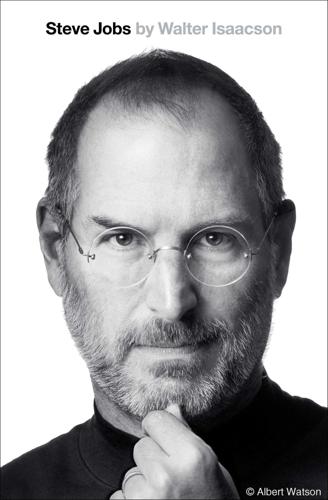
Steve Jobs
by
Walter Isaacson
Published 23 Oct 2011
The question would be whether the egos involved, mainly those of Michael Eisner and Steve Jobs, could get to such a partnership. The stakes were raised when Toy Story opened to blockbuster commercial and critical success. It recouped its cost the first weekend, with a domestic opening of $30 million, and it went on to become the top-grossing film of the year, beating Batman Forever and Apollo 13, with $192 million in receipts domestically and a total of $362 million worldwide. According to the review aggregator Rotten Tomatoes, 100% of the seventy-three critics surveyed gave it a positive review. Time’s Richard Corliss called it “the year’s most inventive comedy,” David Ansen of Newsweek pronounced it a “marvel,” and Janet Maslin of the New York Times recommended it both for children and adults as “a work of incredible cleverness in the best two-tiered Disney tradition.”
…
Abby Road (Beatles), 412 ABC, 219, 436, 438 Academy Awards, 244, 248 Adams, Ansel, 105, 277, 330 Adams, Scott, 523 Adobe, 241, 247, 381, 518 Apple and, 514–16 Adobe Director, 363 Adobe Flash, 380, 514–15, 517 Adobe Illustrator, 242 Adobe Photoshop, 380 Adobe Premiere, 380 Advertising Age, 165, 418 Advocate, The, 280, 282 A4 (microchip), 492–93, 496 Agnelli, Susanna, 126 Aguilera, Christina, 418 Agus, David, 550 Airborne Express, 359 Air Force, U.S., 23 AirPort (base station), 466 Akers, John, 219, 231, 569 Akon (performer), 479 Aladdin (film), 439 Alcorn, Al, xiii, 42–43, 45, 52, 54, 67, 72, 74, 195 Ali, Muhammad, 307 Alinsangan, Susan, 391 Allchin, Jim, 403 Allen, Gary, 376 Allen, Paul, 59, 61 Allen, Tim, 432 Allen, Woody, 429 All One Farm (commune), 39, 50, 53, 59, 63, 103 All Things Digital conference, 463 “All Watched Over by Machines of Loving Grace” (Brautigan), 57 Alps Electronics Co., 146–47 Altair (personal computer), 59, 173 Alto (computer), 95 Amazon, 410, 531, 533 Kindle of, 503, 534 SJ on, 503–4 Amelio, Gil, xiii, 296–97, 327, 332, 335, 336, 341 Apple-NeXT deal and, 299–303 Macworld gaffe of, 307–8, 339 media and, 311–12 Newton crisis and, 309, 338 ouster of, 305–15, 324, 326 ship parable of, 310 SJ’s first meeting with, 297–98, 304, 316–17 American Express, 410 Ames, Roger, 398–99, 401, 402 Ames Research Center, 8–9 Anderson, Fred, 313, 316, 317, 332, 349, 459 backdated stock options controversy and, 450–51 Angelou, Maya, 330 “Annie” skunkworks project, 94, 109 Ansen, David, 290 “Antennagate,” 519–23 Antz (film), 427–30 Anywhere but Here (Simpson), 4, 254–55 AOL, 502 AOL Time Warner, 394–95, 398, 407 Apollo 13 (film), 290 Appel, Richard, 250, 274, 548 Apple Computer Co., 54, 90, 132, 207, 239, 295, 306–7, 308, 317–22, 394–95, 409, 512 Adobe and, 514–16 Apple Corps lawsuits against, 419–20, 523–24 applications controlled by, 516–17 art-technology connection and, 526–27 badge controversy in, 83 Blue Box and creation of, 27–30 business plan of, 76–77 collaborative culture of, 362–63 Cook Doctrine and, 488 Cook’s role in, 360–61 design mantra of, 127 design philosophy of, 344–45 design studio of, 345–47 desktop concept and, 98–99 desktop publishing and, 295–96 incorporation of, 77–78 Intel chips adopted by, 446–48 IPO of, 102–4 logo of, xviii, 68–69, 79–80 Macintosh deal and, 324–25 Microsoft out-competed by, 562–63 motto of, 69 name of, 63 NeXT and, 213–15, 217–18, 221–22, 298–300, 305–6 original partnership of, 63–66, 73 origins of, 61–63 product review process of, 336–39 products of, 565–66 retreats of, 142–45, 147, 154–55, 175, 398–99 Sculley’s reorganization of, 205–7 showcase headquarters of, 534–35 SJ as interim CEO of, 332–33, 364–65, 367 SJ ousted from, xvii–xviii, 202–6, 215–16, 217 SJ’s aesthetic and, 126–27 SJ-Scott dispute in, 83–84 SJ’s resignations from, 215–16, 217, 303–4, 557–59, 563–64 SJ’s return to, 306–8, 317–21 stock options controversy and, 365–66, 448–51, 477 turnover of board of, 318–20 uniforms idea and, 361–62 Wozniak’s departure from, 192–93 Xerox “raided” by, 96–97, 98 Apple Corps, 419–20, 523–24 Apple Foundation, 263 Apple I computer, 56, 63, 66, 163 early competition to, 69–70 first sales order for, 66–68 Wozniak and, 60–61, 67–68, 534 Apple II computer, 91, 93, 94, 109, 114, 125, 137, 138, 154, 173, 189, 192, 200, 207, 565 brochures of, 79–80 capitalization of, 72, 75, 77 circuit board of, 74–75 Commodore company and, 72–73 launch of, 80–81 Markkula and, 80–81 packaging of, 73–74 PC sales and, 160 peripherals and, 74–75 power supply of, 84, 146 sales of, 84, 92, 160 SJ’s vision of, 71–72 Snow White ad for, 132–33 VisiCalc feature of, 84 warranty of, 84 Wozniak and, 80–81, 84–85, 92, 534, 562 Apple III computer, 92–94, 154 failure of, 92–93, 160 AppleLabs, 196–98, 203, 204–6 “Apple Marketing Philosophy, The” (Markkula), 78 Apple products, see individual product names Apple Stores, 368–77, 368, 461, 470, 472, 566 checkout design of, 372 on Fifth Avenue, 376–77, 514 first opening of, 374 floors of, 375 Gap and, 370 genius bar in, 375–76 minimalist nature of, 370 product organization in, 372–74 prototypes of, 371–74 staircases of, 375 success of, 374, 376 Apple University, 461 Arab Spring, 258 Architectural Digest, 276 ARM architecture, 492–93 Arnold Worldwide, 328 Aspen Institute, xvii, 126 Associated Press, 293 AT&T, 27, 136, 521 Atari, 42–45, 52, 53, 57, 63, 72, 74, 81, 217 SJ hired by, 83–84 Atkinson, Bill, xiii, 93–94, 95, 96–97, 99, 101, 110, 111, 113, 117, 118, 122–23, 128–32, 134, 144, 179, 181, 207, 385, 470, 474, 555 Lisa Computer and, 99–101 overlapping windows concept of, 100, 323 QuickDraw program of, 169–70, 180 SJ’s worldview described by, 119–20 Atom (microchip), 492 Augmentation Research Center, 57 Auletta, Ken, 256 Autobiography of a Yogi (Yogananda), 35, 46–47, 527 Avon, 321, 481 Axelrod, David, 497, 547 Bach, Johann Sebastian, 413 Badu, Erykah, 479 Baez, Joan, 57, 153, 168, 261, 269, 412, 415 SJ’s romance with, 250–53 Ballmer, Steve, 375, 474, 569 Bank of America, 83 Barnes, Susan, 204, 212, 216 Barnicle, Mike, 312 Barrett, Craig, 448 Bartz, Carol, 545 BASIC (computer language), 59, 61, 66, 84, 94, 173, 174–75 Batman Forever (film), 290 Bauhaus movement, 126, 265, 372 Baum, Allen, 26, 60, 67, 77 Bay, Willow, 438 Bayer, Herbert, 126, 127 Beatles, 402, 412–13, 415, 418–19, 570 in move to iTunes, 523–24 Beauty and the Beast (film), 439 Beck, Glenn, 508 Be company, 297–301 Be Here Now (Ram Dass), 34, 37, 52 Belleville, Bob, 99, 145–47, 190, 200, 204 Bellini, Mario, 126 Bell Labs, 9 Bell System Technical Manual, 27–28 Berg, Paul, 211–12 Berkeley Barb, 61 Bertelsmann, 395 Bertolucci, Bernardo, 126 Betrayal (Pinter), 204 Bewkes, Jeff, 506–7 Bezos, Jeff, 503 Big Mac (computer), 212, 214 Billboard, 418, 423 bitmapping concept, 95, 97, 111 BlackBerry, 469 Black Eyed Peas, 392, 413 Black-Scholes valuation, 449 Blade Runner (film), 163 Blood on the Tracks (Dylan), 52, 208, 412 Bloomberg News, 479, 497 Blue Box design, 27–30, 73 SJ-Wozniak partnership and, 29–30 Blue Van, 498 Bob Dylan (Dylan), 412 Bohlin, Peter, 430 Bohlin Cywinski Jackson, 375 Bohr, Niels, 171 Boich, Mike, 177 Boing Boing, 563 Bono, 58, 180, 402, 406, 411, 424, 459–60 iPod deal and, 420–23 “Book of Macintosh, The” (Raskin), 109 Boston Globe, 312 “Both Sides Now” (song), 414 Bourke-White, Margaret, 330 Bourne Ultimatum, The (film), 527 Bowers, Ann, 121, 537 Brand, Stewart, 58–59 Brandenburg Concertos (Bach), 413 Braun company, 132, 343 Brautigan, Richard, 57 Breaking Away (film), 126 Breakout (game), 118 Brennan, Chrisann, xiii, 5, 31–32, 41, 49, 86, 103, 104, 119, 257, 259, 265, 279, 280–81, 486 pregnancy of, 88–90 SJ’s relationship with, 86–91 Brennan-Jobs, Lisa, xiii, 90, 140, 256, 257, 270, 542 Mona Simpson and, 282 SJ’s relationship with, 259–61, 265, 266, 278–81, 315, 486, 542, 551–52 Brilliant, Larry, 47, 106, 453 Brin, Sergey, 511–12 Brother Bear (film), 437 Brown, Bryar, 477, 549 Brown, John Seeley, 471 Brown, Tim, 32 “Brown Eyed Girl” (song), 411 Buffalo Springfield, 413 Buffett, Warren, 442 Bug’s Life, A (film), 427–30 Bumiller, Elisabeth, 411–12 Burge, Frank, 79 Burroughs company, 20 Burton, Bill, 497 Bush, George H.
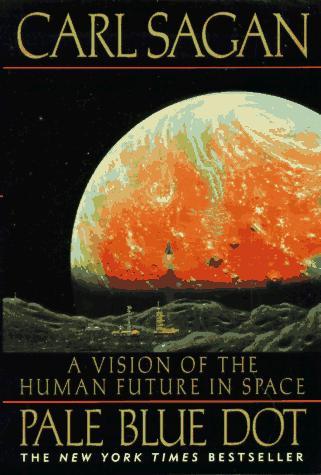
Pale Blue Dot: A Vision of the Human Future in Space
by
Carl Sagan
Published 8 Sep 1997
We could use a space station to accumulate and refine the relevant knowledge, and take as long as we like to do so—so that when the time does come, when we are ready to go to the planets, we will have the background and experience to do so safely. The Mars Observer failure, and the catastrophic loss of the space shuttle Challenger in 1986, remind us that there will be a certain irreducible chance of disaster in future human flights to Mars and elsewhere. The Apollo 13 mission, which was unable to land on the Moon and barely returned safely to Earth, underscores how lucky we've been. We cannot make perfectly safe autos or trains even though we've been at it for more than a century. Hundreds of thousands of years after we first domesticated fire, every city in the world has a service of firefighters biding their time until there's a blaze that needs putting out.

Sex on the Moon: The Amazing Story Behind the Most Audacious Heist in Histroy
by
Ben Mezrich
Published 11 Jul 2011
Blasting off into space, trying to get one foot onto the surface of the moon—actually competing for the opportunity to go on what was basically a suicide mission—and all of it taking place in a time when their biggest supercomputers were less sophisticated than my cell phone.” Thad laughed, but he was no less awed by the thought than she was. He guessed that conversations like this were taking place all over the JSC; tonight had been the annual co-op ritual where everyone gathered together to watch the movie Apollo 13—the story of one of the ill-fated attempts to duplicate Neil Armstrong’s walk on the moon. Having spent time in the old Mission Control room, where the events documented in the movie had taken place, Thad had seen for himself how rudimentary some of the technology had been during the Apollo era.
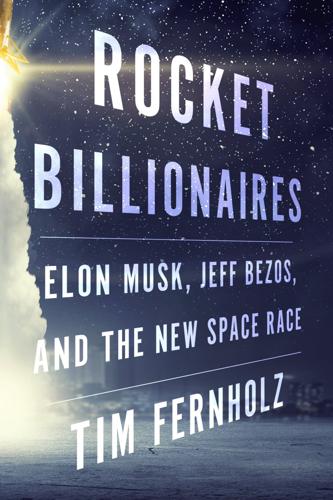
Rocket Billionaires: Elon Musk, Jeff Bezos, and the New Space Race
by
Tim Fernholz
Published 20 Mar 2018
NASA and the prime contractors had come by their risk aversion honestly: it had everything to do with flying humans in space. NASA gift shops sell T-shirts emblazoned with the phrase FAILURE IS NOT AN OPTION. The quote is often attributed to the legendary flight director Gene Kranz, who led the round-the-clock engineering scramble that allowed the space agency to bring home the three astronauts on the Apollo 13 moon mission after a liquid oxygen tank exploded, nearly leaving them lost in space. The phrase is apocryphal; it was actually used by another NASA flight controller who was being interviewed by the writers of the Oscar-nominated movie directed by Ron Howard. But it accurately captured the refusal of the NASA crew to give up on their endangered comrades flying hundreds of thousands of miles from home and their relentless pursuit of technical excellence.

The Wisdom of Crowds
by
James Surowiecki
Published 1 Jan 2004
In fact, the CAIB report includes personal notes from an unnamed NASA source that say that when Ham canceled the DAT’s request for pictures of the Columbia’s wing, “[she] said it was no longer being pursued since even if we saw something, we couldn’t do anything about it.” This was not exactly the ethos that brought Apollo 13 safely back to Earth. One of the real dangers that small groups face is emphasizing consensus over dissent. The extreme version of this, as we’ve already seen, is the kind of groupthink that Irving Janis described in his account of the planning of the Bay of Pigs, where the members of the group become so identified with the group that the possibility of dissent seems practically unthinkable.
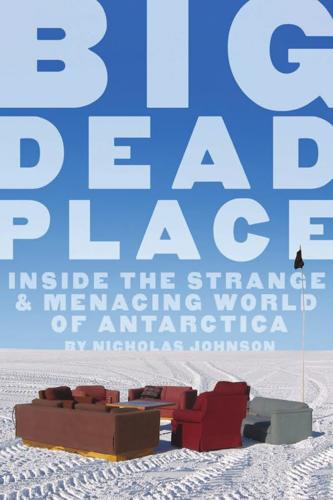
Big Dead Place: Inside the Strange and Menacing World of Antarctica
by
Nicholas Johnson
Published 31 May 2005
Rex, who, in defiance of black-tie convention, had assumed the alter ego of a caped and helmeted superhero named “Dash Fantasy,” befriended the Singaporean expedition who’d skied from the coast and tried to sneak them into the party that night by dressing them in makeshift costumes, but the managers kept kicking them out. Jim Lovell, American astronaut of Apollo 13 fame, came down for New Year’s. He was extended the extraordinary official courtesy of being allowed to sleep in the gym. He and his entourage were also allowed to eat meals in the Galley. Rex volunteered to work in the Galley one night, where he served three types of pizza: meat, supreme, and spam and cheese, labeled respectively as the “New Jersey Meathook,” the “Cleveland Steamer,” and the “Dirty Sanchez.”

SQL Hacks
by
Andrew Cumming
and
Gordon Russell
Published 28 Nov 2006
All it takes is another join to connect Kevin Bacon to "Weird Al" Yankovic, who has a Kevin Bacon number of 3: mysql> SELECT LEFT(x.movie,10) movie1 -> ,LEFT(x.actorOut,10) actor1 -> ,LEFT(y.movie,11) movie2 -> ,LEFT(y.actorOut,10) actor2 -> ,LEFT(z.movie,11) movie3 -> ,LEFT(z.actorOut,10) actor3 -> FROM actorToActor x JOIN actorToActor y ON x.actorOut=y.actorIn -> JOIN actorToActor z ON y.actorOut=z.actorIn -> WHERE x.actorIn = 'Kevin Bacon' -> AND z.actorOut = '''Weird Al'' Yankovic'; +-----------+-----------+------------+-----------+------------+------------+ | movie1 | actor1 | movie2 | actor2 | movie3 | actor3 | +-----------+-----------+------------+-----------+------------+------------+ | Apollo 13 | Ed Harris | Creepshow | Leslie Nie| Naked Gun: | 'Weird Al' | | Tremors | Fred Ward | Naked Gun 3| Leslie Nie| Naked Gun: | 'Weird Al' | | Tremors | Fred Ward | Naked Gun 3| George Ken| Naked Gun: | 'Weird Al' | You can continue the number of links, but it gets more expensive at every level.
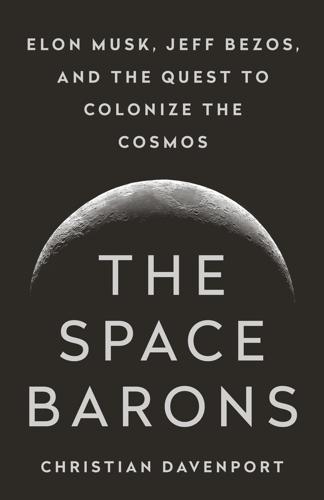
The Space Barons: Elon Musk, Jeff Bezos, and the Quest to Colonize the Cosmos
by
Christian Davenport
Published 20 Mar 2018
In mid-2017, Bezos invited several of the surviving Apollo-era astronauts to an air show in Oshkosh, Wisconsin, where he was showing off the New Shepard booster and a mock-up of the crew capsule that would soon take paying tourists to space. It was an extraordinary reunion of the most exclusive of fraternities. There was Buzz Aldrin. And James Lovell, and Frank Borman, both members of the Apollo 8 crew, along with Fred Haise, who had served with Lovell on Apollo 13. There were Walter Cunningham, Apollo 7, and Gene Kranz, NASA’s legendary flight director. One by one, they stepped into Bezos’s spacecraft, crossing the chasm from Apollo to the promise of the Next Giant Leap, even if so many of their brethren had passed away and would never see it come to fruition.
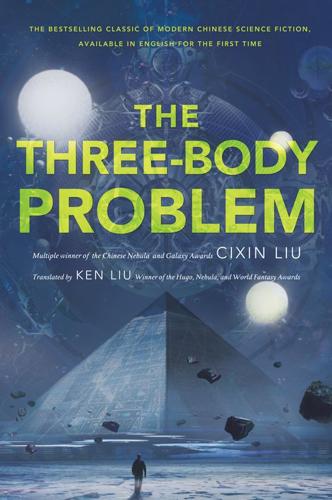
The Three-Body Problem (Remembrance of Earth's Past)
by
Cixin Liu
Published 11 Nov 2014
It was the first artificial satellite China had ever launched: Dongfanghong I (“The East is Red I”). The date was April 25, 1970, and I was seven. It had been thirteen years since Sputnik had been launched into space, and nine years since the first cosmonaut had left the Earth. Just a week earlier, Apollo 13 had safely returned from a perilous journey to the moon. But I didn’t know any of that. As I gazed at that tiny, gliding star, my heart was filled with indescribable curiosity and yearning. And etched in my memory just as deeply as these feelings was the sensation of hunger. At that time, the region around my village was extremely poor.
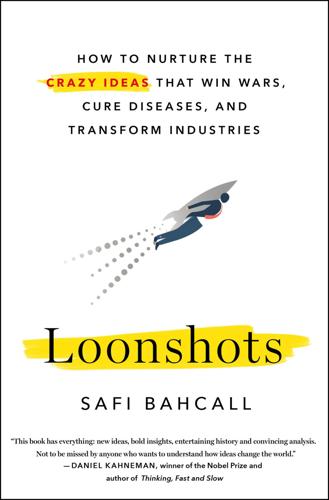
Loonshots: How to Nurture the Crazy Ideas That Win Wars, Cure Diseases, and Transform Industries
by
Safi Bahcall
Published 19 Mar 2019
A small shop puts together a film, then solicits bids from the large Majors for rights to market it. Other partnerships are broader. Universal, for example, partnered with Imagine Entertainment for three decades and 50 pictures. Imagine found the stories and put together the films. Universal distributed. Their films together include the Oscar winners Apollo 13 and A Beautiful Mind. The two markets in film, connected by a web of partnerships, are examples of phase separation and dynamic equilibrium within an industry, rather than within a company. The market of hundreds of small production shops finding, funding, and developing small, crazy film projects is an example of an industry’s loonshot nursery.
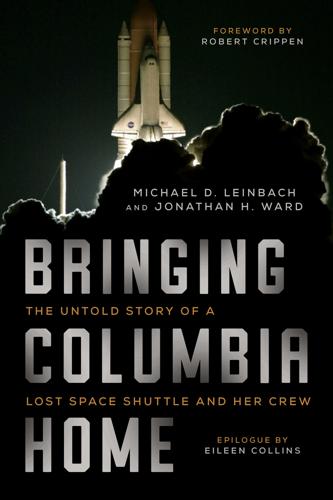
Bringing Columbia Home: The Untold Story of a Lost Space Shuttle and Her Crew
by
Michael Leinbach
and
Jonathan H. Ward
Published 23 Jan 2018
On March 3, 2003, barely one month after the accident, former astronauts Wally Schirra and Jim Lovell came to KSC to encourage workers who were still grieving over the loss of Columbia. Both men were well acquainted with the risks inherent in manned spaceflight. Schirra commanded Apollo 7, NASA’s first manned mission after the fire that killed his friends in the three-man crew of Apollo 1. Lovell was commander of Apollo 13, when a deep-space explosion led to a harrowing several days in which the world watched anxiously and hoped that the crew would make it home alive. Lovell said, “This is a risky business. Everyone I talk to says this should not stop the program—we should find out the cause.” Schirra encouraged KSC’s team with Gus Grissom’s famous line, “Do good work.”
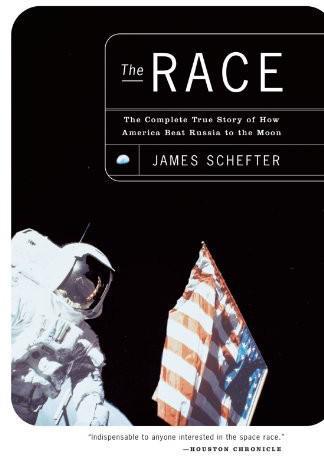
The Race: The Complete True Story of How America Beat Russia to the Moon
by
James Schefter
Published 2 Jan 2000
With the special entrée granted to Time and Life, I would see things inside the manned space program denied to other journalists. When NASA finally gave journalists permission to enter mission control during a manned space flight, I would be selected by my peers in the world’s press as the print correspondent to be called in an emergency. That mission was Apollo 13 and the Flash message sent around the world by the wire services that there would be no moon landing came from my pen. By then, of course, the race was long over. I aided and abetted in successful conspiracies to smuggle items to the moon; I loaned my plane to astronauts and walked with them through the jungles of Panama, the volcanic interior of Iceland, and the stark terrain of the California Mojave.
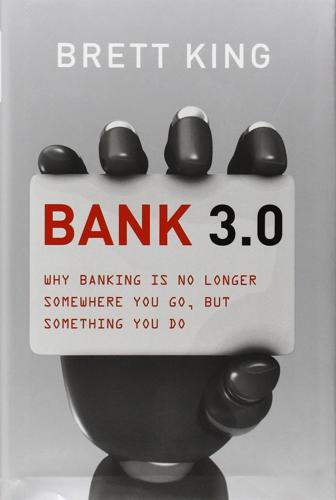
Bank 3.0: Why Banking Is No Longer Somewhere You Go but Something You Do
by
Brett King
Published 26 Dec 2012
Quite a change from a single transistor that typically measured ½ inch by ¼ inch back in the 60s.2 While all this was happening, the cost of these transistors was also exponentially falling, as Moore had accurately predicted. Figure 9.1: Gordon Moore’s original graph predicting transistor growth (Credit: Intel Corp) In real terms this means that a mainframe computer of the 1970s that cost over $1 million had less computing power than your average smartphone has today. Have you ever watched the movie, Apollo 13? Remember they were trying to work out how to boot up the Apollo Guidance Computer without breaking their remaining power allowance? Well, that computer, which was at the height of computing technology in the ’70s, had around 32k of memory and ran at a clock speed of 1.024 MHz. When the IBM PC XT launched in 1981 it was already about eight times faster than the Apollo computer.
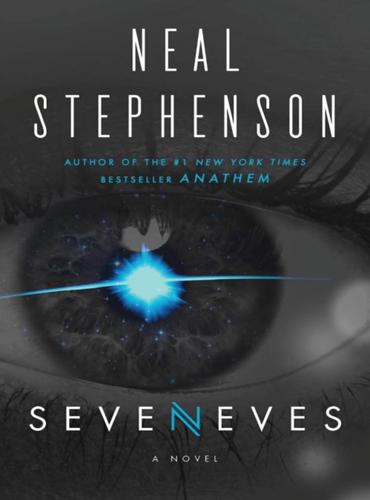
Seveneves
by
Neal Stephenson
Published 19 May 2015
But it was a little bit out of step with the modern ethos. Correction: with the modern ethos as it had existed during the Age of the One Moon. It was perfectly in step with how things were now. Part of her wanted to go and plead with Fyodor to mount a dramatic and heroic rescue mission. There had to be a way to make it happen. They had all seen Apollo 13, they quoted lines of dialogue from it all the time. But she already knew the answer. The Pioneers would begin arriving, shiploads of them, in two weeks. All of them would die on arrival if the correct preparations had not been made. No time could be spared. More Scouts were on the way to replace Tekla.
…
“Look, surprises in space are almost always bad,” Dinah said. “Traditionally, every mission is planned out to the nth degree, and there’s a contingency plan for everything. You don’t improvise. You can’t improvise, because there’s nothing to improvise with.” “I’m just remembering the duct tape in Apollo 13.” “Yeah, that was one of the rare exceptions,” Dinah said, “and people are still talking about it decades later. So, to the Russians, the idea that someone can just show up unannounced, and make a claim on our resources—” “What resources?” Luisa asked. “They’re breathing our air,” Dinah said.

What Technology Wants
by
Kevin Kelly
Published 14 Jul 2010
Sociologist Charles Perrow calls these “normal accidents” because they “naturally” emerge from the dynamics of large systems. The system is to blame, not the operators. Perrow did an exhaustive minute-by-minute study of 50 large-scale technological accidents (such as Three Mile Island, the Bhopal disaster, Apollo 13, Exxon Valdez, Y2K, etc.) and concluded, “We have produced designs so complicated that we cannot anticipate all the possible interactions of the inevitable failures; we add safety devices that are deceived or avoided or defeated by hidden paths in the systems.” In fact, Perrow concludes, safety devices and safety procedures themselves often create new accidents.
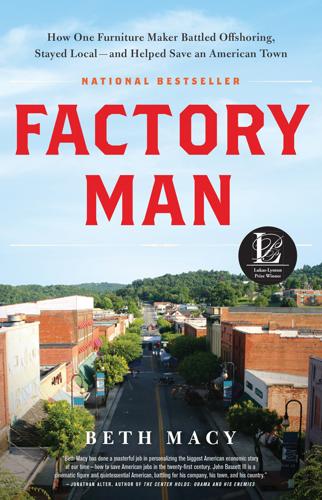
Factory Man: How One Furniture Maker Battled Offshoring, Stayed Local - and Helped Save an American Town
by
Beth Macy
Published 14 Jul 2014
He calls from the phone next to the toilet in one of the bathrooms of his Roaring Gap home. He calls from his car—though he still isn’t sure what button to press if you call him on his cell. He calls from his bed at New York’s Hospital for Special Surgery. Still slurring from anesthesia after a foot operation, he’s thought of one more thing he wants to recount: The story of Apollo 13, the way those astronauts and the men in Houston worked night and day to fix the botched equipment so no one would die. The way they refused to accept failure and did not yield and Guess what, America! They prevailed because they worked hard and smart. And so can you! He’s practically in tears when he calls after learning that more people at Stanley Furniture will soon lose their jobs.
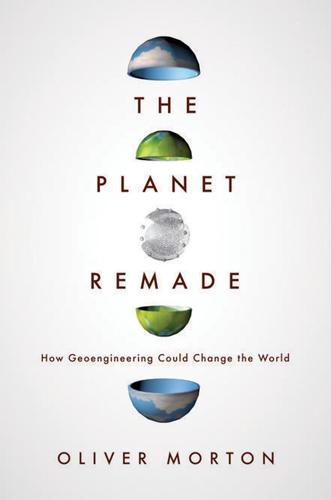
The Planet Remade: How Geoengineering Could Change the World
by
Oliver Morton
Published 26 Sep 2015
Everyone said the world was small: the Apollo astronauts had the experiential and photographic proof. From the U-2, the Earth looked utterly vast – as big as the sky. From the moon it looked no bigger than an ashtray at the other end of a bar. ‘You can hide the Earth behind your thumb,’ reported Jim Lovell, pilot of Apollo 8 and commander of Apollo 13. ‘Everything that you’ve ever known, your loved ones, your business, the problems of the Earth itself – all behind your thumb.’ The Earth now had a face, and a persona. It was an object for celebration – at the Earth Days that began in America in 1970s – and protection. It was remarkable, unique, small – fragile.

Corporate Warriors: The Rise of the Privatized Military Industry
by
Peter Warren Singer
Published 1 Jan 2003
With the discovery of some of the world's richest oilfields under the North Sea and in the Middle East, Halliburton's drilling support operations went through a period of spectacular growth. Likewise, Brown & Root soon ranked as the largest engineering and construction firm in the United States. It also played a critical role in the NASA space program, including devising the ingenious makeshift carbon dioxide removal system that saved the lives of the Apollo 13 crew (featured in the film of the same name). By 1979. Brown & Root had expanded to 80,000 employees and Halliburton had another 100,000. However, at the end of the 1970s, a lingering recession and the weakening of the oil market caused much trauma to both companies. Revenues plummeted and both trimmed their payrolls.
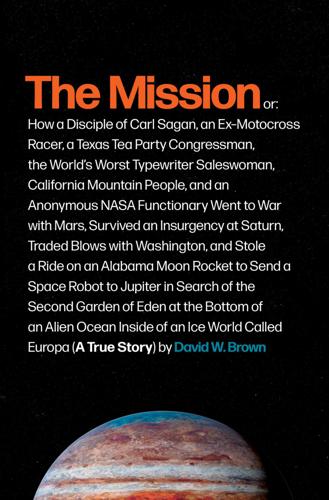
The Mission: A True Story
by
David W. Brown
Published 26 Jan 2021
The seven-hundred-twenty-two-page book is available for free at the above URL. I learned this only after buying a copy, so you’re welcome, Mudgway. 59.NASA, JPL, “Galileo Spacecraft Anomaly Being Investigated,” press release, October 12, 1995, https://nssdc.gsfc.nasa.gov/planetary/text/gal_tape.txt. Galileo is the Apollo 13 of outer planets flagship missions. So many things went wrong, and the Rube Goldberg–like rescue of its data storage and communications capacities make it one of the greatest achievements of the space age. Somebody should write a book about it, but not me. See also M. R. Johnson and G. C. Levanas, “The Galileo Tape Recorder Rewind Operation Anomaly” (presentation, Thirty-First Aerospace Mechanisms Symposium, Huntsville, AL, 1994), https://ntrs.nasa.gov/search.jsp?

Spies, Lies, and Algorithms: The History and Future of American Intelligence
by
Amy B. Zegart
Published 6 Nov 2021
But it’s a dangerous delusion. When everyone’s agreeing, you shouldn’t be comforted. You should be worried. “What do we got on the spacecraft that’s good?” Between the predictability spectrum and the seven deadly biases, intelligence analysis may seem a hopeless endeavor. It isn’t. In the movie Apollo 13, when all hope seems lost after the spacecraft suffers a crippling explosion, NASA Tiger Team leader Gene Kranz turns to his engineering group at mission control and asks, “What do we got on the spacecraft that’s good?” Realizing that it’s not all bad is a useful place to start. Much about the human brain, and collective decisionmaking, works pretty well.
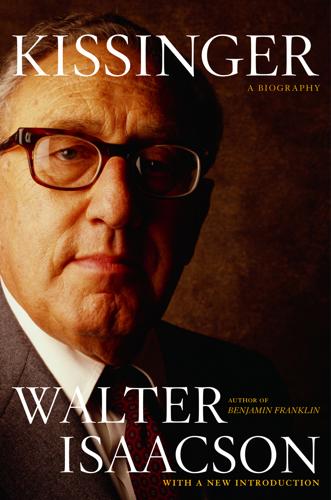
Kissinger: A Biography
by
Walter Isaacson
Published 26 Sep 2005
Nixon directed Kissinger to see if he could arrange a summit in Moscow, but when Kissinger went to see Dobrynin, all that the Soviet ambassador offered was, Kissinger recalls, a screening of “some films about tiger hunting in Siberia that he erroneously believed would interest me.” The Senate, after earlier rejecting Clement Haynsworth, did the same to Nixon’s next Supreme Court nominee, Harrold Carswell. The Apollo 13 moon flight developed a major malfunction, and the astronauts were in danger of perishing in their module. And the threat of protests caused Nixon to cancel plans to attend Julie’s graduation from Smith College, forcing him to face a daughter’s tears. So Nixon, not always the calmest of men, was even less composed than usual that month.
…
In private, he used more explicit phrases, such as “basket case” and “drunk.”3 In addition, Nixon had developed a rather disconcerting desire to see repeated screenings of the movie Patton, about the swashbuckling Battle of the Bulge general who made defiance seem like heroism. In a breathtaking scene at the outset of the film, George C. Scott as Patton stands in front of a mammoth American flag addressing his troops. “Americans have never lost and will never lose a war,” he declares, “because the very thought of losing is hateful to Americans.” When the Apollo 13 astronauts did finally land safely, Nixon flew out to Hawaii to greet them. There, on April 18, he was briefed by the U.S. Pacific commander, Admiral John McCain, whose pugnacity and crusty manner reminded Kissinger of Popeye the Sailor. Admiral McCain’s son (later a senator) was then a prisoner of war.
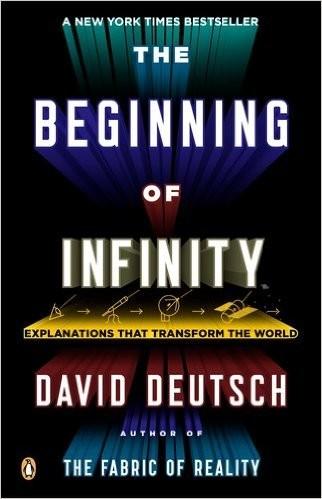
The Beginning of Infinity: Explanations That Transform the World
by
David Deutsch
Published 30 Jun 2011
Expectations are theories too. Similarly, it is a problem when the way things are (according to our best explanation) is not the way they should be – that is, according to our current criterion of how they should be. This covers the whole range of ordinary meanings of the word ‘problem’, from unpleasant, as when the Apollo 13 mission reported, ‘Houston, we’ve had a problem here,’ to pleasant, as when Popper wrote: I think that there is only one way to science – or to philosophy, for that matter: to meet a problem, to see its beauty and fall in love with it; to get married to it and to live with it happily, till death do ye part – unless you should meet another and even more fascinating problem or unless, indeed, you should obtain a solution.

Baghdad at Sunrise: A Brigade Commander's War in Iraq
by
Peter R. Mansoor
,
Donald Kagan
and
Frederick Kagan
Published 31 Aug 2009
The power was out again when I awoke—a common occurrence at the Martyr’s Monument, as in all of Iraq. Our challenge was to run a brigade command post despite the outages. The solution was to purchase generators and take the building off the city power grid, which we accomplished within a matter of weeks. In the movie Apollo 13, one of the characters exclaims in a moment of frustration, “Power is everything.” We could sympathize. Indeed, when the power went out in the Martyr’s Monument, the interior of the windowless structure quickly heated up. The steamy, pitch-black darkness motivated the soldiers to coin a new term—hot dark—to describe the sensation of these notso-special moments.
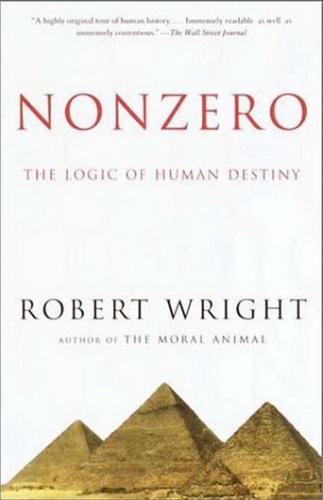
The Moral Animal: Evolutionary Psychology and Everyday Life
by
Robert Wright
Published 1 Jan 1994
In zero-sum games, the fortunes of the players are inversely related. In tennis, in chess, in boxing, one contestant’s gain is the other’s loss. In non-zero-sum games, one player’s gain needn’t be bad news for the other(s). Indeed, in highly non-zero-sum games the players’ interests overlap entirely. In 1970, when the three Apollo 13 astronauts were trying to figure out how to get their stranded spaceship back to earth, they were playing an utterly non-zero-sum game, because the outcome would be either equally good for all of them or equally bad. (It was equally good.) Back in the real world, things are usually not so clear-cut.
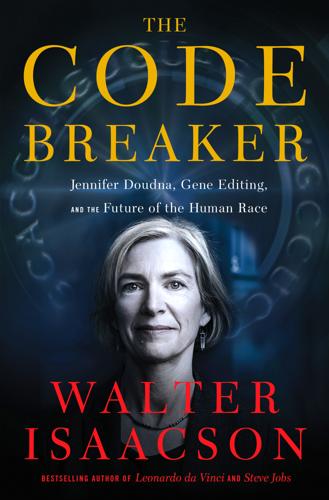
The Code Breaker: Jennifer Doudna, Gene Editing, and the Future of the Human Race
by
Walter Isaacson
Published 9 Mar 2021
“Usually for bench scientists like ourselves we feel our impact is a bit indirect and it comes in the long term,” Lin Shiao says. “This feels so direct and immediate.”7 Hamilton’s grandfather had been an engineer on the NASA Apollo rocket launches, and one day her team paused to watch a clip someone had posted on their Slack channel from the movie Apollo 13 where the engineers have to figure out how to make a “square peg fit in a round hole” in order to save the astronauts. “Every day we’ve been facing challenges, but we’re solving these problems as they come up because we know that time is short,” Hamilton says. “This experience has made me wonder if this is what it was like for my grandfather working at NASA in the 1960s.”
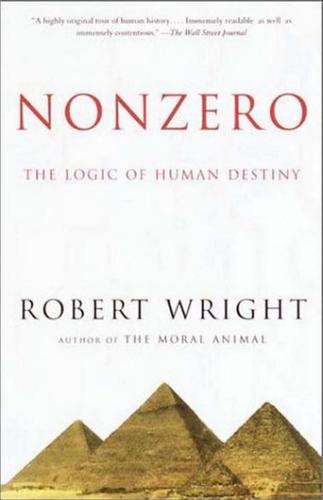
Nonzero: The Logic of Human Destiny
by
Robert Wright
Published 28 Dec 2010
In zero-sum games, the fortunes of the players are inversely related. In tennis, in chess, in boxing, one contestant’s gain is the other’s loss. In non-zero-sum games, one player’s gain needn’t be bad news for the other(s). Indeed, in highly non-zero-sum games the players’ interests overlap entirely. In 1970, when the three Apollo 13 astronauts were trying to figure out how to get their stranded spaceship back to earth, they were playing an utterly non-zero-sum game, because the outcome would be either equally good for all of them or equally bad. (It was equally good.) Back in the real world, things are usually not so clear-cut.

What If We Get It Right?: Visions of Climate Futures
by
Ayana Elizabeth Johnson
Published 17 Sep 2024
*113 Kendra Pierre-Louis, whose interview follows this one, wrote about this in “Wakanda Doesn’t Have Suburbs,” her essay in the All We Can Save anthology. *114 On December 25, 2023, only 17.6% of the lower 48 U.S. states had snow cover, the lowest in at least two decades. RIP white Christmas movies being relatably realistic. Houston, we have a problem. —Apollo 13 The Planet Is the Headline Interview with Kendra Pierre-Louis The real-life story of the climate crisis is more intense, wild, and over-the-top than any Hollywood thriller or heist movie. Our reality would get laughed out of the writers’ room as too on-the-nose. But does this story-of-all-stories get wall-to-wall news coverage?
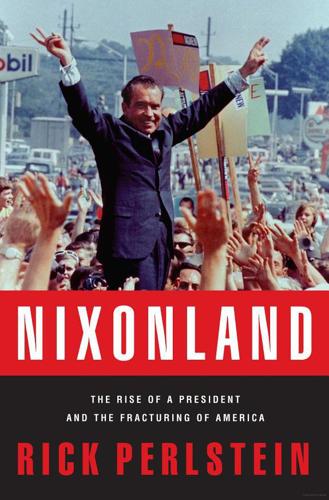
Nixonland: The Rise of a President and the Fracturing of America
by
Rick Perlstein
Published 1 Jan 2008
And I mean that quite literally, because until you’re prepared to kill your parents, you’re not ready to change this country. Our parents are our first oppressors.” His audience was fifteen hundred students at the relatively quiet campus of Kent State University in Ohio. On April 18 Nixon traveled to Houston to present the presidential Medal of Freedom to the Apollo 13 astronauts, who had miraculously survived their spacecraft malfunction while orbiting the moon, a classic White House photo op, though one that did not satisfy Nixon’s occasional image adviser Roger Ailes. Richard Nixon had a wife. She mostly seemed to exist for these photo opportunities—as did the two Nixon daughters, and Julie’s fiancé, Edward Cox, who seemed to be mustered for every last White House family photo.
…
The White House had leaked word that the withdrawal would be some forty thousand to fifty thousand. For once Nixon looked more optimistic than the pundits. He continued, “If I conclude that increased enemy action jeopardizes our remaining forces in Vietnam, I shall not hesitate to take strong and effective measures to deal with the situation.” But the safe return of the brave men of Apollo 13 had reminded us all that “the death of a single man in war, whether he is an American, a South Vietnamese, a Vietcong, or a North Vietnamese, is a human tragedy.” It had an air of finality: “The decision I have announced tonight means that we finally have in sight the just peace we are seeking.”

Future Crimes: Everything Is Connected, Everyone Is Vulnerable and What We Can Do About It
by
Marc Goodman
Published 24 Feb 2015
Digital fabrication can be used to print entire homes, concrete, electrical wiring, plumbing, and all. NASA has even purchased a 3-D printer for the International Space Station from the Silicon Valley start-up Made in Space to ensure it never has to worry about a missing part on board endangering the lives of astronauts, as was the case with Apollo 13. Bio-fabricating printers have taken things to the next level with machines that can even print human tissues and organs, such as capillaries, kidneys, ears, and hearts, potentially doing away with organ transplant lists and saving lives. Prices on home 3-D printers—machines that used to cost tens of thousands of dollars—are dropping precipitously, and models such as the popular Cube 3 made by 3D Systems can be purchased at Staples for $999.

Console Wars: Sega, Nintendo, and the Battle That Defined a Generation
by
Blake J. Harris
Published 12 May 2014
And with Super Mario Bros. now budgeted at a hefty $40 million, the offer to Hanks was pulled. Hanks wasn’t thrilled but quickly got over the loss when his next two films (A League of Their Own and Sleepless in Seattle) made him the most popular actor in Hollywood, and the next two (Philadelphia and Apollo 13) won him Academy Awards for Best Actor. When attaching actors to a film, this game of musical chairs is pretty common. But when it happens with writers and directors, that usually signifies it’s time to put your tray table in the upright position and brace for a crash landing in development hell.
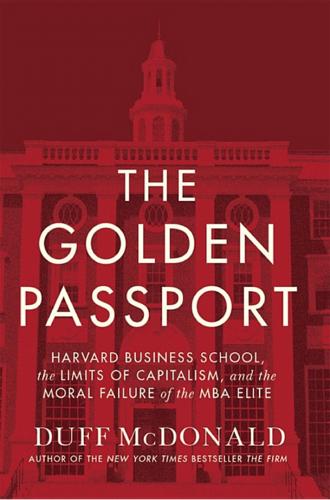
The Golden Passport: Harvard Business School, the Limits of Capitalism, and the Moral Failure of the MBA Elite
by
Duff McDonald
Published 24 Apr 2017
Marcinkus, who was later nearly arrested on charges of fraudulent bankruptcy in the collapse of Roberto Calvi’s Banco Ambrosiano, later admitted that wasn’t true, but insisted that was only because his schedule hadn’t permitted it: “I didn’t do a course because I didn’t have time.”18 (And then there are those who lie about attending the MBA program itself, including Ahmed Zayat,19 the owner of racehorse American Pharoah.) At this point, of course, enough students have gone through the program that it can point to some serious success stories among its alumni. James A. Lovell, the commander of the Apollo 13 lunar mission, took the AMP course in 1971. Others include Minoru Makihara (AMP ’77), president of Mitsubishi Corporation when it was the world’s largest company in the 1990s; Jeanette Sarkisian Wagner (AMP ’83), former vice chairman of the Estée Lauder Companies; Carol Goldberg (AMP ’69), former president of Stop & Shop; and Donald Platten (AMP ’66), a chairman of the former Chemical Bank.
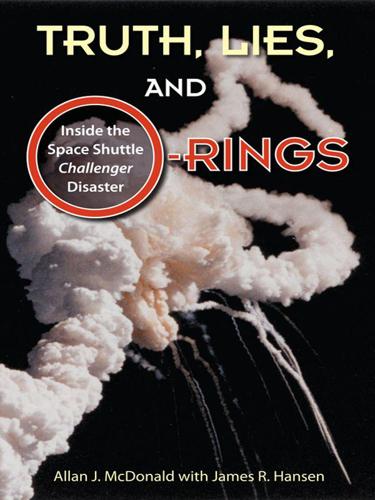
Truth, Lies, and O-Rings: Inside the Space Shuttle Challenger Disaster
by
Allan J McDonald
and
James R. Hansen
Published 25 Apr 2009
The U.S. space program had suffered the loss of three Apollo astronauts—Gus Grissom, Roger Chaffee, and Ed White—in an electrical fire in their oxygen-filled Apollo capsule during a routine checkout of the capsule on the launchpad in January 1967, but the United States had never lost any astronauts on their way to or home from space. The U.S. space program had been successful in landing a dozen astronauts on the Moon and returning them home safely since Neil Armstrong first stepped on the Moon in July 1969. The miraculous rescue of the Apollo 13 astronauts on their way to the Moon was such an extraordinary feat that it appeared that NASA could never fail or certainly could do no wrong. The Challenger exploding on January 28, 1986, in front of a grandstand filled with the astronauts' families was so shocking that it took several years for this nation to recover from it, and NASA never did recover from its badly tarnished image.

State of Emergency: The Way We Were
by
Dominic Sandbrook
Published 29 Sep 2010
Across the country, schools had devoted hours to telling their pupils about the significance of the day, while retailers had slashed their prices to induce viewers to invest in new televisions so that they could appreciate the spectacle in glorious colour. And when the BBC collated its viewing figures afterwards, it emerged that a staggering 28 million people had tuned in to watch the wedding live, the third biggest television audience of the decade after the Apollo 13 splashdown and the FA Cup Final replay between Chelsea and Leeds three years before. Indeed, thanks to the wonders of technology, it was not merely a national event but an international one. In the Republic of Ireland, bitterness at recent events in Belfast and Londonderry did not stop so many people tuning in that Dublin’s electricity board struggled to cope with the demand.

USA Travel Guide
by
Lonely, Planet
AMERICA’S BEST SPACE MUSEUM Possibly the most surprising sight in Kansas, the amazing Cosmosphere & Space Center (www.cosmo.org; 1100 N Plum St, Hutchinson; all-day pass adult/child $17/15, museum only $12/10; 9am-7pm Mon-Sat, noon-7pm Sun summer, to 6pm Sun-Thu rest of year; ) captures the race to the moon better than any museum on the planet. Absorbing displays and artifacts such as the Apollo 13 command module will enthrall you for hours. The museum regularly is called in to build props for Hollywood movies portraying the space race, including Apollo 13 . All puns aside, the museum’s isolated location in Hutchinson might as well be the moon, but if you’re making a day trip from Wichita or just stopping off in this small city of huge grain elevators, savor the local BBQ at Danny Boy’s Smokehouse (307 N Main St; meals $5-9; 11am-8pm) , a much-lauded smoked-meat purveyor in restaurant-filled downtown.
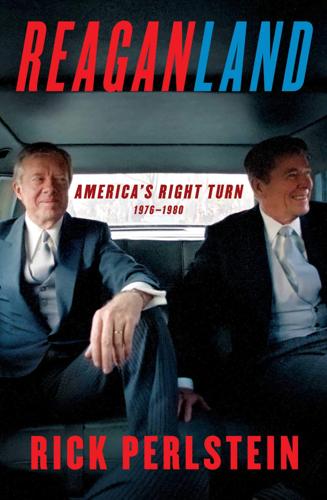
Reaganland: America's Right Turn 1976-1980
by
Rick Perlstein
Published 17 Aug 2020
In the House, he led the conservative Republican Study Group, and his signature issue was outlawing ceilings on campaign contributions, which he called a “limit to the right of voters to speak out.” He also owned two Colorado radio stations. Even with the head start that offered him, he was not favored to win over his primary opponent, Jack Swigert, the hero-astronaut who had defied death in 1970 leading Apollo 13’s aborted moon mission. In suburban Atlanta the unknown was an eccentric history professor who headed Georgians Against the Proposed Panama Canal Treaties. Dr. Newton Leroy Gingrich had had just been denied tenure at West Georgia College for spending too much time on politics. (To cushion the blow, wealthy backers paid him $13,000, structured for them as a tax shelter, to write a novel about World War III.

1,000 Places to See in the United States and Canada Before You Die, Updated Ed.
by
Patricia Schultz
Published 13 May 2007
As if to demonstrate how far we’ve come in our relationship with the former Soviet bloc, the Kansas Cosmosphere and Space Center in Hutchinson tells the story of the U.S.–Russian space race through a collection of artifacts second only to the National Air and Space Museum in D.C. (see p. 261). It’s got the Apollo 13 command module (“Houston, we have a problem”), a Soviet Vostok capsule and Soyuz descent module, a U.S. SR-71 spy plane, and many displays on the human story of space. About 60 miles north, in Abilene, the Eisenhower Center tells the story of our 34th president, who governed from 1953–61 during the first phase of the Cold War and the space race.